
Urban Planning Thesis/ Research Topic Suggestions (Part 1)
Introduction.
In the field of Planning, each student is required to undertake a research project (thesis) as per his/ her interest subjects relevant to the field in the final semester. It basically gives an opportunity to the students to put their learning of previous semesters together. It also gives an opportunity to synthesize the knowledge and skills acquired by applying it for strategy formulation for a live planning challenge.
Each student is allocated individual thesis supervisor or a guide along with a co-guide who guide the students through this thesis semester. During this period, the thesis is monitored continuously and periodically through internal marked reviews to check the consistency of the work. The final output is in the form of submission of a detailed report along with drawing/ visuals presented on sheets which is presented to an external jury panel consisting of experts from the relevant field.
Urban Planning
Urban Planning is a technical and political process concerned with development of open land or greenfield sites as well as revitalization of existing parts of the city. Primary concern of urban planning is public welfare.
- Impact of government policies and initiatives (most recent) on urban land use
- Quality of life assessment in residential areas
- Role of urban local bodies (ULBs) in urban governance
- Socio-economic impact assessment of metro rail
- Evolving a mechanism for public participation in urban planning and implementation
- Impact of urbanization on land use in the rural-urban fringe
- Implications of airport expansion on the surrounding areas
- Role of International aid in urban poverty alleviation
- Planning implications of highway corridor on settlement pattern
- Impact of urban expansion on small towns
- Assessing linkage between the parent city and satellite town
- Changes in building bye-laws and its implications on urban development
- Planning for sustainable neighbourhood
- Assessing the liveability in the residential areas of IT parks
- Impact of urban sprawl on provision of public services
GIS in urban planning enables spatial analysis, modelling and data visualization which can contribute to a variety of important urban planning tasks. These tasks include land suitability analysis, site selection, land use and transport modelling, impact assessments etc.
- GIS modelling of Land Information System
- Urban Growth Modelling in GIS
- Urban Sprawl Pattern analysis using GIS
- Role of GIS in revenue improvement
- Municipal Information System using GIS in Property Tax Management
- Application of GIS for property tax
- Geo-Spatial Information System Based Model for Micro-Level Planning
- Integration of land records to GIS, a model for municipal application
- Application of GIS Technology in Watershed management
- Use of the Geo-Informatics in land suitability analysis for Industrial Development
- Integrated public transportation systems using GIS
Cities and tourist movement have both historical and dynamic relationship. Urban places often act as major attractions and serve as gateways to or staging areas for tourism. Tourism is at the heart of many cities’ development projects. Tourism is a major driving force in the development and stimulator of a new urbanity in metropolises and cities.
- Tourism Potentiality of pilgrim centres
- Impact of tourism on district development
- Eco-Tourism development strategies for Coastal Town
- Impact of Ecotourism on Local Community
- Impact of tourism on the development of Local Areas
- Planning for tourism circuit
- Potential of Urban Wetlands for Ecotourism Development
- Impact of Religious Tourism in Regional Development
- Tourism Development Plan for Inter State Border Conflict areas
- Spatiotemporal movement patterns of international tourists
- Water tourism: An Exploration of the Role of Inland Water Transport in Tourism Development
- Potential of Community based Ecotourism
- Strategies for Heritage Tourism Development
- Strategies for Ecotourism Development
- Impact of Tourism on Rural Livelihood
Urban Finance
Cities are growing at a remarkable rate and will continue to expand more. Planning urbanization in advance in conjunction with urban finance for implementation will help cities avoid unplanned and informal growth. When investment in cities is guided by good planning principles, it unlocks the potential for growth making sustainable development attainable.
- Municipal Bonds – An alternate source of Funding Infrastructure Projects
- Evaluation Study of Methods for Property Tax Assessment
- Revenue mobilization for urban local bodies through Asset Management
- Evaluation of Economic value and funding mechanisms of Parks
- Financial Appraisal of property development and advertisement of Metro rail
- Sustainable Financial strategy for implementation of the General Town Planning Scheme
- Assessment of Property Tax Management System
- Using Public Land as a tool to generate Municipal Finance
- Infrastructure Financing through Tax increment Financing
Environment Planning
Environmental issues arise and exist in almost all sectors where development is involved. Environmental Planning helps in making decisions about the natural environment, public health and the built environment.
- Environmental issues in the transformation of urban fringe
- Environmental implications of Solid waste management in hilly areas
- Conflict of drivers of ecosystem change on wetlands
- Impact of urban flood vulnerability on the mobility of the urban poor
- Adaptation of neighbourhood planning for climate change
- Potential for green and blue infrastructure towards climate responsive planning
- Planning for a low carbon neighbourhood
- Community based disaster management
- Vulnerability and risk assessment of settlements prone to tropical cyclone
- Impact of spatial expansion of city over urban green spaces
- Estimating the economic cost of environmental degradation of an industrial area
- Impact of sea level rise on development in metropolitan regions
Since the Industrial Revolution, cities and industries have evolved together. There exist various industrial towns which have grown around factories and expanding industries.
- Impact of industries on a fringe town
- Role of Agro-based industries in regional development
- Impact of industrialization on Tribal areas
- Development implications of SEZ: An evaluation of policies and programs
- Eco industrial Estate Planning
- Industrialization and Unplanned development
- Industry-led regional transformation
- Industrial development and intra-regional disparities
- Industrial Development induced displacement and resettlement strategies
- Socio-economic impacts of Industrial Development
- Impact of Industrial Development in a Backward region
- Planning interventions to address industrial disparity
- Impact of Micro, small and medium scale enterprises on regional development
- Potential of resource-based industry in the regional economic development
- Development constraints of an Industrial cluster in a city
Informal Sector
Cities with rapid urbanization usually face a problem with the informal sector. Businesses that the informal sector comprises of generally operate on the streets and public places and are often seen as eye-sores. So, conflicts arise between urban authorities who try to keep their cities clean and the urban informal sector operators who need space for their activities.
- Planning for Spatial integration of the street vendor activities around the temple area
- Informal sector and its implications in the structure of the city and economy
- Creating Public spaces through Placemaking by street vending as a tool
- Evaluation of the national policy on urban street vendors
- Assessment of participatory approaches for Planning of Hawker’s Space
- Assessing impact of pedestrians on the livelihood of Street Vendors
- Integrating working and living space of street vendors
Slum/ Informal settlements
Existence of informal settlements in the urban areas is a challenging issue in urban planning. It is short-sighted and unsustainable to ignore the challenge of slums considering the large scale of slums and the number of people they house.
- Security and slum vulnerability towards eviction
- Transfer of Development rights as a tool for Rehabilitation of slums
- Prioritization model for slum performance assessment
- Tackling large agglomerations of slum areas
- Imageability assessment of slums
- Evaluation of weaker sections housing programs in urban areas
- An evaluation of the Slum Improvement Project
- Re-Development strategies for slums
- Forward and Backward linkages of Migrants
- Composite Vulnerability assessment of slums
- The vulnerability of slums to livelihood security
- Impact of residential relocation on livelihood of slum dwellers
- Formulation of Methodology for delisting of slums
- Street led approach for development of slums
- Impact of perceived tenure security on slum consolidation
Housing and Real Estate
Housing is considered to be a basic human requirement of any civilized society. In order to ensure planned development of urban areas and create an enabling environment, it is important to provide affordable housing.
- Foreign Direct Investment in real estates of suburban
- Role of private builders in housing
- An exploratory study of residential satisfaction and acceptance levels in public housing schemes
- Influence of development policies on real estate market in metro areas
- Housing preferences of IT industries: Affordability and Proximity
- Global financial crisis and its impact on the housing sector
- Critical evaluation of affordable housing and assessment of public and private sector agencies
- Role of real estate agencies in urban housing development
- Role of NGOs in urban Housing for the poor
- Self-built housing for urban poor
- Impact of multinational companies on real estate
- Assessment of real estate regulatory bill for housing design
- Role of community in financing housing infrastructure in informal settlement
- The changing pattern of real estate in periphery areas
Inclusive Planning
Inclusive planning implies involving a fair representation of citizens providing meaningful and educated input where planners advocate for greater equity in public policies that address multiple objectives of urban planning.
- Evaluation of pedestrian accessibility measures in neighbourhoods for the elderly
- Inclusive neighbourhood for children
- Planning and designing accessible public spaces for differently abled
- Appropriateness of functionality of public spaces for the elderly
- Integrating child-friendly cities concept into urban planning
Transport Planning
Transport Planning is required for the operation, provision and management of facilities and services for the modes of transport. It is the process of preparing policies, goals and spatial planning designs to prepare for the future needs.
- Effect of passenger information system (PIS) on public transit ridership
- Planning for pedestrianization of the core area
- Concept of BRT-Strategies for Indian cities
- Impact of IT services on public transportation
- Traffic management plan for railway station area
- Study of major traffic bottlenecks
- Planning for vehicular parking in city central area
- Role of cycle rickshaw as a feeder system to MRTS
- Job-Housing balance as a tool to tackle traffic congestion
- Improving the road freight movement through route optimization
- Exploring the use of tramways as a parallel mode of public transportation
- Urban Planning Thesis/ Research Topic Suggestions (Part 2)
- Getting started with Thesis Writing
- ‘Preferable’ Thesis Tenure Working for Students of ‘Bachelor of Planning’
- Thesis Statement | Meaning, Importance, Steps and Types
- Difference between a research paper, dissertation & thesis
- Tips for Writing a Thesis
About The Author
Nancy Grover
- Browse All Articles
- Newsletter Sign-Up
UrbanDevelopment →
No results found in working knowledge.
- Were any results found in one of the other content buckets on the left?
- Try removing some search filters.
- Use different search filters.
- Perspective
- Open access
- Published: 12 February 2021
Perspectives on urban transformation research: transformations in , of , and by cities
- Katharina Hölscher ORCID: orcid.org/0000-0002-4504-3368 1 &
- Niki Frantzeskaki 2
Urban Transformations volume 3 , Article number: 2 ( 2021 ) Cite this article
20k Accesses
61 Citations
53 Altmetric
Metrics details
The narrative of ‘urban transformations’ epitomises the hope that cities provide rich opportunities for contributing to local and global sustainability and resilience. Urban transformation research is developing a rich yet consistent research agenda, offering opportunities for integrating multiple perspectives and disciplines concerned with radical change towards desirable urban systems. We outline three perspectives on urban transformations in , of and by cities as a structuring approach for integrating knowledge about urban transformations. We illustrate how each perspective helps detangle different questions about urban transformations while also raising awareness about their limitations. Each perspective brings distinct insights about urban transformations to ultimately support research and practice on transformations for sustainability and resilience. Future research should endeavour to bridge across the three perspectives to address their respective limitations.
Science highlights
We outline three perspectives on urban transformations for explaining, structuring and integrating the emerging urban transformations research field.
Transformation in cities focuses on unravelling the diverse factors, processes and dynamics driving place-based transformations in cities. This perspective represents research that aims to examine and explain why transformations occur and are supported in some places and not others.
Transformation of cities examines the outcomes of transformative changes in urban (sub-)systems. It serves to understand and evaluate the emergence of new urban functions, new interactions and their implications for sustainability and resilience.
Transformation by cities looks at the changes taking place on global and regional levels as a result of urbanisation and urban development approaches. The perspective emphasises the agency of cities on a global scale and how transformation concepts travel between places.
Future research should aim to bridge across the perspectives to address their respective limitations, for example by bringing in place-based knowledge (‘in’) into global discussions (‘by’) to facilitate cross-city learning.
Policy and practice recommendations
Experimental, collaborative and place-based governance approaches facilitate the integration of local knowledge, the development of inspiring narratives that boost sense of place and empower local communities to boost transformations in cities.
To assess and coordinate urban transformations, transformations, policy and practice actors need to employ systemic concepts and visions that advance solutions with multiple benefits for synergies and minimal trade-offs.
Multi-level partnerships and (transnational) networks for policy knowledge exchange between cities help mobilising the potential of cities as agents of change for sustainability at a global scale.
Introduction
The notion of ‘urban transformation’ has been gaining ground in science and policy debates. Urban transformations to sustainability and resilience are enshrined in the 2030 United Nations Sustainable Development Goals (SDGs) (UN 2016 ) and the New Urban Agenda (UN-Habitat 2016a ). A rich research field around questions of urban transformations has started to emerge, combining multiple scientific disciplines, ontologies and methods (Elmqvist et al. 2018 , 2019 ; Wolfram et al. 2017 ; Vojnovic 2014 ). Key to these debates is the aim to put cities on a central stage for accelerating change towards local and global sustainability and resilience.
Urban transformation narratives have been driven by the recognition of the need and opportunity for radical change towards sustainable and resilient cities. Cities constantly experience changes, but contemporary urban change processes are unparalleled. Cities grapple with a variety of interrelated challenges, including pollution, poverty and inequality, ageing infrastructure and climate change (Haase et al. 2018 ; UN-Habitat 2016b ; Seto et al. 2017 ). Urbanisation in its current form causes significant changes in land use, energy demand, biodiversity and lifestyles and raises questions about the contribution of cities to global environmental change (Haase et al. 2018 ; Alberti et al. 2018 ; Elmqvist et al. 2013 ; Seto et al. 2017 ). At the same time, cities concentrate the conditions and resources for realising the fundamental changes in energy, transportation, water use, land use, housing, consumption and lifestyles that are needed to ensure liveability, wellbeing and sustainability of our (urban) future (Romero-Lankao et al. 2018 ; Koch et al. 2016 ; Elmqvist et al. 2018 ). The potential and momentum in cities is visible in for example the ‘climate emergency’ declarations of local governments that call for accelerated climate action in view of international stalemate.
The notion of urban transformation guides and formulates a better understanding of urban change. On the one hand, ‘transformation’ serves as an analytical lens to describe and understand the continuous, complex and contested processes and dynamics manifesting in cities, as well as how these dynamics alter urban functions, local needs and interactions between cities and their surroundings (McCormick et al. 2013 ; Iwaniec et al. 2019 ). On the other hand, the transformation perspective provides a normative orientation that emphasises the need for radical and systemic change in order to overcome persistent social, environmental and economic problems and to purposefully move towards sustainable and resilient cities in the long-term (Hölscher et al. 2019 ; Kabisch et al. 2018 ). Accordingly, sustainability and resilience are complementary concepts to asses and orient urban transformation processes (Elmqvist et al. 2019 ; Pickett et al. 2014 ; Simon et al. 2018 ).
In this paper, we distinguish three perspectives on urban transformations to structure and guide research and practice on urban transformations. Urban transformation research is an emergent, loosely connected interdisciplinary field combining urban studies and complex system studies. Various research fields and disciplines converge in urban transformation research; the multitude of disciplines has been systematically reviewed in Wolfram et al. ( 2017 ) and Wolfram and Frantzeskaki ( 2016 ). This diversity engenders multiple entry points and provides complementary concepts, theories and insights. However, the diversity causes ambiguities in ontologies, use of concepts and fragmented knowledge about how urban transformations unfold and can be supported.
Urban transformation research would benefit from “gradual interconnection, and the articulation of a certain range of research perspectives” (Wolfram and Frantzeskaki 2016 : 2). To facilitate this, we distinguish and describe three perspectives on urban transformations that provide areas of convergence across diverse research approaches. Each perspective provides distinct starting points to generate, structure and integrate knowledge along certain questions. Ultimately, the perspectives outline an agenda for advancing theory and practice on urban transformations for sustainability and resilience: they generate implications for urban policy and practice and a way forward to bridge across the perspectives to address the respective limitations.
Perspectives on transformations in, of and by cities
We distinguish between perspectives on urban transformations in , of and by cities. The perspectives provide entry points for formulating and structuring research questions on urban transformations, integrating research approaches and knowledge, and deriving implications for practice.
The three perspectives start from similar assumptions about cities and urban transformations. They focus on urban transformations as complex processes of radical, systemic change across multiple dimensions (e.g. social, institutional, cultural, political, economic, technological, ecological) (Hölscher et al. 2018 ; Frantzeskaki et al. 2018a ; McCormick et al. 2013 ). Cities are understood as complex, adaptive and open systems (Alberti et al. 2018 ; McPhearson and Wijsman, 2017 ; Ernstson et al., 2010 ; Collier et al. 2013 ). This implies that urban transformations are not spatially limited, and driven by and driving cross-scale and cross-sectoral dynamics: cities are “local nodes within multiple overlapping social, economic, ecological, political and physical networks, continuously shaping and shaped by flows of people, matter and information across scales” (Wolfram and Frantzeskaki 2016 : 143; see also Hansen and Coenen 2015 ; Chelleri et al. 2015 ). To describe, explain and evaluate urban transformations, cities are increasingly approached as social-ecological-technical systems (SETS), including (1) socio-economic, political and institutional dimensions (social); (2) natural resource flows and physical phenomena (ecological); (3) as well as the manmade surroundings (technological) (McPhearson 2020 ; Alberti et al. 2018 ; Bai et al. 2017 ). Actors have a central position within urban systems, influencing how cities are organised and resources are produced and consumed. Given the open character of urban systems, actors are diverse and include household members, local governments, and entrepreneurs also regional and national governments, international bodies and multinational companies, amongst others (Glaas et al. 2019 ; Webb et al. 2018 ).
Urban transformations can be desirable or undesirable (Elmqvist et al. 2019 ; Hölscher 2019 ). A shared aim across urban transformation research perspectives and approaches is to generate actionable knowledge to intervene in urban transformation processes and support radical change towards sustainable and resilient urban systems (cf. Wittmayer and Hölscher 2017 ).
Despite these shared starting points and aims, the perspectives ask distinct questions about transformations vis-à-vis urban systems. They look at systemic change dynamics taking place in cities (“in”), the outcomes of systemic change of cities (“of”), or systemic change on global and regional levels driven by cities (“by”). These entry points and corresponding questions manifest in differences along key descriptors of urban transformations (cf. Hölscher et al. 2018 ). The differences are not contradictory: they generate complementary insights for understanding and supporting urban transformations given the different level of aggregation, analysis and understanding of system dynamics and points of intervention (Table 1 ).
The main aim of the perspectives is to facilitate structuring of urban transformation research along shared themes and questions. Specifically, in articulating these, we show the actionable knowledge generated through each perspective to support urban transformations for sustainability and resilience. We also show that the perspectives offer bridges across knowledge to strengthen research and practice.
Transformation in cities: cities as places of transformations
Transformation in cities focuses on unravelling the diverse, local, regional and global factors, processes and interactions that converge in cities as places of transformations, thus driving or constraining place-based transformations.
The perspective zooms in on cities as spaces and places. Cities are geolocated in an objective, abstracted point, i.e. space, which is for example demarcated by geographical and administrative boundaries. Cities as places are defined by the physical (i.e. urban form) and philosophical (i.e. imagination and representation) relationships between people and place (Roche, 2016 ; Knox 2005 ). Thus, cities as places are both “a centre of meaning and the external context of people’s actions” (Knox 2005 : 2). As spaces and places of transformations, cities harbour specific potentials, driving forces and barriers (Hansen and Coenen 2015 ).
Place-based transformations are the result of the social construction by people responding to the opportunities and constraints of their particular locality (Fratini and Jensen 2017 ; Späth and Rohracher 2014 ). Endogenous conditions and developments include geographic location, climate, local economic structure, population dynamics and the built environment. For example, urban segregation and inequality result from and are reinforced by interactions between residential choices, personal preferences, job markets, land and real estate markets and public policies (Alberti et al. 2018 ). The construction of place-based transformations does not take place independently of societal norms and representations of the world. Economic and cultural globalisation and the resulting ‘network society’ becomes manifest in cities and shape place-based transformation dynamics (Roche, 2016 ). Scholars seeking to understand the ‘geography in transitions’ emphasise that cities are positioned within cross-scale spatial and institutional contexts that influence local change dynamics (Hansen and Coenen 2015 ; Truffer et al. 2015 ; Coenen et al. 2012 ; Hodson et al. 2017 ; McLean et al. 2016 ). Along similar lines, Loorbach et al. ( 2020 ) show the translocal character of social innovations that are locally rooted but globally connected.
This perspective positions transformative agency as deeply embedded in socio-spatial contexts. A central research focus is on urban niches that experiment with and scale new solutions (McLean et al. 2016 ; Ehnert et al. 2018 ), governance arrangements (Wolfram 2019 ; Hölscher et al. 2019a ) and ways of relating and knowing (Frantzeskaki and Rok 2018 ). Urban experimentation or real-world laboratories have become process tools to facilitate co-creative and innovative solution finding processes that empower actors to deal with urban problems, for example related to mobility, regeneration, community resilience or green job creation (Bulkeley et al. 2019 ; von Wirth et al. 2019 ; Hölscher et al. 2019c ). Such approaches represent situated manners of place-making to co-develop inspiring ‘narratives of place’, empower local communities and foster urban transformative capacities (Wolfram 2019 ; Jensen et al. 2016 ; Ziervogel, 2019 ; Castán Broto et al. 2019 ). The idea of place-specificity recognises the particular role of ‘sense of place’ and ‘place attachment’, which can be an outcome of experimentation and in turn drive transformative change (Frantzeskaki et al., 2016 ; di Masso et al. 2019 ; Brink and Wamsler 2019 ). Ryan ( 2013 ) describes how multiple small ‘eco-acupuncture’ interventions can shift the community’s ideas of what is permissible, desirable and possible.
A key value of this perspective lies on its embedded research inquiry into the ‘black box’ of a city, including social, economic and ecological situated and contextual knowledge. A main implication for urban policy and planning practice is to facilitate place-based innovation by going beyond sectoral infrastructuring and top-down masterplanning towards situated and cross-sectoral place-making. Experimental and co-creative governance approaches help recognise and mobilise place-specific capacities. The need for place-based innovation further calls for higher-level policies to be centred on the local dimension. For example, the current European Union Cohesion Policy puts a place-based approach into practice that recognises place variety (Solly 2016 ) and further extends it to a governance capacity building programme that engages with cities on the ground through the URBACT program ( www.urbact.eu ).
A limitation of this perspective is that knowledge about and actions instigating transformations in a specific city context are very entrenched in context dynamics. This can limit transferability or scaling other than ‘scaling deep’ pathway (Moore et al. 2015 ; Lam et al. 2020 ) if not connected with mechanisms for global and transnational learning and knowledge transfer (Section 2.3). In (Moore et al. 2015 ; Lam et al. 2020 ) addition, neighbourhood-level interventions need to be connected to knowledge about city-level outcomes. This calls for critical evaluations of systemic outcomes in urban systems (Section 2.2).
Transformation of cities: outcomes of transformation dynamics in urban systems
Transformation of cities examines and evaluates the outcomes of transformation dynamics in urban (sub-)systems in terms of new urban functions, local needs and interactions and implications for sustainability and resilience.
This perspective focuses on urban (sub-)systems defined by specific functions (e.g. economy, energy, transport, food, healthcare, housing). Compared to the other perspectives, it most explicitly applies socio-technical and social-ecological, and increasingly SETS, frameworks to describe urban (sub-)systems. Urban transformations are the outcome of radical changes of dominant structures (e.g. infrastructures, regulations), cultures (e.g. values) and practices (e.g. mobility behaviours) of such urban (sub-)systems. As a result of these changes, what kind of and how system functions are delivered is fundamentally altered (Ernst et al. 2016 ).
The main aim of this perspective is to explain and evaluate how transformation dynamics affect urban systems’ functions. Frameworks and models to investigate how transformation dynamics influence urban (sub-)systems pay attention to the complex processes and feedback loops within, across and beyond urban systems and the accumulated effects on the urban system level. For example, studying social-ecological-technical infrastructure systems in cities advances understanding of urban structure-function relationships between green space availability, wellbeing, biodiversity and climate adaptation (McPhearson 2020 ). Similarly, urban metabolism analysis and ecosystem studies seek to understand energy and material flows (Bai 2016 ; Dalla Fontana and Boas 2019 ). An emerging perspective on cities as ‘multi-regime’ configurations investigates dynamics across different functional systems (e.g. energy, water, mobility, food) (Grin et al. 2017 ; Irvine and Bai 2019 ). This provides opportunities to unveil interactions across multiple urban systems and scales. For instance, rapid changes in electricity systems can have knock-on effects for urban mobility or heat systems (Chen and Chen 2016 ; Chelleri et al. 2015 ). The relational geography perspective puts forth a differentiated view of urban systems: it zooms in on different boroughs, districts or neighbourhoods and raises questions such as how innovation and change in one location affects neighbouring locations (Wachsmuth et al. 2016 ).
This perspective most explicitly addresses prescriptive, ‘goal’-driven and recently mission-driven orientations for reinventing cities to be more sustainable, resilient, inclusive, attractive, prosperous, safe and environmentally healthy (Elmqvist et al. 2018 ; Kabisch et al. 2018 ; Rudd et al. 2018 ). Researchers and urban practitioners and planners employ concepts like ‘sustainability’ and ‘resilience’ as frames to evaluate the state of urban systems and to inform urban planning and regeneration programmes (Elmqvist et al. 2019 ). The systemic focus and application of such concepts also helps to identify synergies and trade-offs across urban systems and goals. For example, the sustainability paradigm of maximising efficiency in mobility or energy systems might result in vulnerability to natural disasters when systems lack parallel or redundant back-up systems (ibid.). Similarly, scholars point to the risks of green gentrification: while urban greening interventions have multiple benefits for the environment and climate adaptation, if not planned and governed inclusively, they can create unintended dynamics of exclusion, polarisation and segregation (Anguelovski et al. 2019 ; Haase et al. 2017 ).
This perspective takes a meta-level view on the agency and governance in cities, highlighting strategic partnerships and interventions based on desired system-level outcomes. From this perspective, cities may act as coherent strategic entities based on systemic understandings of city-specific and long-term effects to pursue managed transitions of their large-scale (sub-)systems (Jensen et al. 2016 ; Hodson et al., 2017 ). Urban transformation governance needs to facilitate alignment, foresight and reflexive learning to recognise, anticipate and shape transformation dynamics and leverage points (Hölscher et al. 2019b ). Key starting points are shared definitions of what ‘desirability’ means in specific contexts. Orchestration can align priorities and connect emerging alternatives, ideas, people and solutions (ibid.; Hodson et al., 2017 ). Shared and long-term visions re-orient short-term decisions and interventions that create synergies across multiple priorities. For example, Galvin and Maassen ( 2020 ) analyse Medellín’s (Columbia) mobility transformation that also contributed to inclusiveness and public safety. Transition management is a practice-oriented framework to co-develop shared visions, pathways and experiments in an ongoing learning-by-doing and doing-by-learning way (Frantzeskaki et al. 2018b ; Loorbach et al. 2015 ).
In summary, this perspective provides a view on interpreting transformation dynamics and developing orientations and practical guidance for intervention. It becomes visible in urban planning and policy practice through the development of systemic urban concepts as ‘anchor points’ or attractors for urban transformations such as ‘sharing cities’, ‘circular cities’, or ‘renaturing cities’. Cities like Rotterdam in the Netherlands and New York City in the USA are using such concepts to formulate long-term climate, sustainability and resilience agendas and establish cross-cutting city-level partnerships for their implementation (Hölscher et al. 2019a ). A main implication of this perspective is about the need to institutionalise and prioritise such long-term agendas into policy and planning across sectors and scales (ibid.).
A limitation of this perspective is that it overlooks place-specific implications and can nuance or be agnostic to politics and contestations at local sub-system level. Strategically linking place-based initiatives (Section 2.1) with systemic urban concepts and visions provides a powerful tool to align the multitude of activities taking place in cities and to coordinate urban transformations on (sub-)system scale. Additionally, this perspective requires explicit attention to the relationships between urban systems and their hinterlands or other distant territories, which affect and are affected by urban system’s functioning (Section 2.3).
Transformation by cities: cities as agents of change at global scale
The third perspective on transformation by cities draws attention to the changes taking place on global and regional levels as a result of urbanisation and urban development.
The main emphasis is here placed on cities as “agents of change at global scale” (Acuto 2016 ). As open systems, cities are not just influenced by developments outside their spatial boundaries (see Section 2.1). Urban transformations also have implications on global resources, environmental conditions, commodities and governance.
On the one hand, cities – including their social-ecological-technological configurations and the diversity of actors influencing them – can be viewed as culprits driving global high emissions, resource depletion and unsustainability. This raises critical questions about the relationship between current and unprecedented urbanisation and global sustainability (Seto et al. 2017 ; Haase et al. 2018 ). For example, the expansion of cities will triple land cover by 2030, compared to 2000, with severe implications on biodiversity (Alberti et al. 2018 ; Elmqvist et al. 2013 ). Different frameworks and concepts are employed to describe and assess the linkages between cities and their hinterland and other distant territories, including ‘urban land teleconnections’ (Seto et al. 2012 ), ‘regenerative cities’ (Girardet 2016 ) and ‘urban ecological footprint’ (Folke et al. 1997 ; Hoornweg et al. 2016 ; Rees and Wackernagel 2008 ).
On the other hand, cities have become key loci for trialling sustainable approaches and solutions that inform the global sustainability agenda (UN-Habitat 2016b ; Seto et al. 2017 ; Bai et al. 2018 ). Cities – especially local governments – play key roles in shaping global sustainability programmes and discourses and in developing and sharing knowledge and best practices. Local governments have also become celebrated for taking action when the national government is not (van der Heijden 2018 ; Acuto 2016 ). Governance strategies such as experimentation, best practices or imaginaries have been taken up globally (Haarstad 2016 ; McCann 2011 ; van der Heijden 2016 ). This raises questions about how the experiences and best practices showcased in cities become knowledge to be diffused and shared, as well as how transformations travel between places and across scales (Lam et al. 2020 ).
This perspective supports a polycentric and multi-level approach to global environmental governance. Global environmental governance is becoming increasingly decentralised and polycentric, which is visible for example in climate governance (Ostrom 2014 ; Jordan et al. 2018 ; Hölscher and Frantzeskaki 2020 ) and the urban SDG (UN 2016 ). The recent ‘city charters’ of global organisations such as the IPCC Cities and Climate Change, the Convention on Biological Diversity and Cities and Future Earth Urban Knowledge Network, showcase the recognition of ‘cities’ as key players on a global level. While urban sustainability governance has often proliferated without leadership at national levels, the nestedness of local governance in legal and institutional frameworks at regional, national and international levels requires alignment of priorities and legislation across governance levels (Hughes et al. 2017 ; Keskitalo et al. 2016 ).
In summary, this perspective creates knowledge about the role of cities in contributing to global change and what it means for governance, policy and planning at global, national, metropolitan and regional levels. It provides and requires big data from cities and their resource footprints, flows and dynamics so as to draw on patterns and pathways for change that can inform and reinforce global agendas for action. A key mechanism for urban practitioners is to strengthen policy knowledge exchange across frontrunning cities (Hölscher et al. 2019a ). Transnational city networks such as the International Council for Local Environmental Initiatives (ICLEI), C40 and 100 Resilient Cities facilitate knowledge exchange and inter-city learning, foster the creation of collective goals, lobby for international attention, and enable the transplantation of innovative, sustainable and resilient policy and planning approaches (Acuto et al. 2017 ; Lee 2018 ; Mejía-Dugand et al. 2016 ; Frantzeskaki et al. 2019 ; Davidson et al. 2019 ).
A danger of this perspective is that this global discourse is mainly focused on ‘global cities’. Medium-sized and middle-income cities are leaders in terms of actual sustainability performance and need to be actively acknowledged and considered (Vojnovic 2014 ). Florida ( 2017 ) criticises how “winner-take-all cities” reinforce inequality, while many cities stagnate and middle-class neighbourhoods disappear. This requires more research into how resources and opportunities are distributed and made accessible across different cities, for example ‘global’ cities, metropolitan cities and developing countries’ cities (Coenen et al. 2012 ; Gavin et al. 2013 ). Additionally, cities are not necessarily a united front: priorities and interpretations differ across cities (Growe and Freytag 2019 ). To address these issues, this perspective would benefit from a more critical and contextual research approach on place-based transformations (Section 2.1), questioning why transformations occur and are supported in some places and not others. Comparative analyses into the factors and dynamics influencing place-based transformations can facilitate transnational knowledge transfer and upscaling of place-based initiatives.
Conclusions
We offer three perspectives on urban transformations research as a means to cherish and celebrate, but also structure the diversity of the growing urban transformations research field. Our paper is a first attempt to distinguish these perspectives, by discussing key questions, entry points, practical implications and limitations. We show that the perspectives help converge research approaches and clarify how different perspectives provide evidence for urban policy and planning.
The perspectives are not merely conceptual devices: they show up in cities’ agendas, programmes and approaches and give guidance to practitioners. The ‘transformation in cities’ perspective asks practitioners to experiment with collaborative place-making approaches like urban living labs to integrate local knowledge and strengthen a sense of place and empowerment. The ‘transformation of cities’ perspective appears as underlying integrative systems’ approach for core urban strategies such as climate change and biodiversity strategies. The ‘transformation by cities’ perspective highlights the need to invest in policy knowledge exchange between cities, for example through transnational city networks.
The three perspectives on urban transformation do not exist in isolation from one another. We have shown how the perspectives can feed into and complement each other to address respective research gaps and practical challenges. The main future research direction we put forth is to bridge across the perspectives to address their respective limitations and generate comprehensive actionable knowledge. This means to formulate integrative research questions bridging across perspectives: How do place-making initiatives in a specific neighbourhood affect urban systems’ functioning? How can place-based transformation knowledge be transferred to other city contexts? How can place-based experiments and transformation initiatives or projects inform policy at city and city-network level? What are the conditions for downscaling strategic initiatives from global level – for example, post-Aichi biodiversity targets – considering capacities of urban sub-systems?
Availability of data and materials
Data sharing is not applicable to this article as no datasets were generated or analysed during the current study.
Abbreviations
US Department of Housing and Urban Development
International Council for Local Environmental Initiatives
International Panel on Climate Change
Sustainable Development Goal
Social-ecological-technological system
United NationsMeerow, S
Acuto M. Give cities a seat at the top table. Nature. 2016;537:611–3.
Article CAS Google Scholar
Acuto M, Morissettte M, Tsouros A. City diplomacy: towards more strategic networking? Learning with WHO health cities. Global Policy. 2017;8(1):14–22. https://doi.org/10.1111/1758-5899.12382 .
Article Google Scholar
Alberti M, McPhearson T, Gonzalez A. Embracing urban complexity. In: Elmqvist T, Bai X, Frantzeskaki N, Griffith C, Maddox D, McPhearson T, Parnell S, Romero-Lankao P, Simon D, Watkins M, editors. Urban planet: knowledge towards sustainable cities. Cambridge: Cambridge University Press; 2018. p. 68–91.
Google Scholar
Anguelovski I, Connolly JJT, Pearsall H, Shokry G, et al. Opinion: why green “climate gentrification” threatens poor and vulnerable populations. PNAS. 2019;116(52):26139–43. https://doi.org/10.1073/pnas.1920490117 .
Bai X. Eight energy and material flow characteristics of urban ecosystems. Ambio. 2016;45(7):819–30. https://doi.org/10.1007/s13280-016-0785-6 .
Bai X, Dawson RJ, Ürge-Vorsatz D, Delgado GC, Salisu Barau A, Dhakal S, Dodman D, Leonardsen L, Masson-Delmotte V, Roberts DC, Schultz S. Six research priorities for cities and climate change. Nature. 2018;555:23–5. https://doi.org/10.1038/d41586-018-02409-z .
Bai X, McPhearson T, Cleugh H, Nagendra H, Tong X, Zhu T, Zhu Y-G. Linking urbanization and the environment: conceptual and empirical advances. Annual review of environment and resources. 2017;42:215–40. https://doi.org/10.1146/annurev-environ-102016-061128 .
Brink E, Wamsler C. Citizen engagement in climate adaptation surveyed: The role of values, worldviews, gender and place. J Clean Prod. 2019;209:1342–53. https://doi.org/10.1016/j.jclepro.2018.10.164 .
Bulkeley H, Marvin S, Palgan YV, McCormick K, Breitfuss-Loidl M, Mai L, von Wirth T, Frantzeskaki N. Urban living laboratories: conducting the experimental city? Eur Urban Regional Stud. 2019;26(4). https://doi.org/10.1177/0969776418787222 .
Castán Broto V, Trencher G, Iwaszuk E, Westman L. Transformative capacity and local action for urban sustainability. Ambio. 2019;48(5):449–62.
Chelleri L, Water JJ, Olazabal M, Minucci G. Resilience trade-offs: addressing multiple scales and temporal aspects of urban resilience. Environmet Urbanization. 2015;27(1):181–98. https://doi.org/10.1177/0956247814550780 .
Chen S, Chen B. Urban energy-water nexus: a network perspective. Appl Energy. 2016;184:905–15. https://doi.org/10.1016/j.apenergy.2016.03.042 .
Coenen L, Benneworth P, Truffer B. Toward a spatial perspective on sustainability transitions. Res Policy. 2012;41(6):968–79. https://doi.org/10.1016/j.respol.2012.02.014 .
Collier MJ, Nedovic-Budic Z, Aerts J, Connop S, Foley D, Foley K, Newport D, McQuaid S, Slaev A, Verburg P. Transitioning to resilience and sustainability in urban communities. Cities. 2013;32:S21–8.
Dalla Fontana M, Boas I. The politics of the nexus in the city of Amsterdam, Cities; 2019. p. 95. https://doi.org/10.1016/j.cities.2019.102388 .
Book Google Scholar
Davidson K, Coenen L, Acuto M, Gleeson B. Reconfiguring urban governance in an age of rising city networks: a research agenda, urban studies; 2019. p. 1–16. https://doi.org/10.1177/0042098018816010 .
Di Masso A, Williams DR, Raymond CM, et al. Between fixities and flows: navigating place attachments in an increasingly mobile world. J Environ Psychol. 2019;61:125–33. https://doi.org/10.1016/j.jenvp.2019.01.006 .
Ehnert F, Frantzeskaki N, Barnes J, Borgström S, Gorissen L, Kern F, Strenchock F, Egermann M. The Acceleration of Urban Sustainability Transitions: a Comparison of Brighton, Budapest, Dresden, Genk, and Stockholm. Sustainability. 2018;10(3):612. https://doi.org/10.3390/su10030612 .
Elmqvist T, Andersson E, Frantzeskaki N, McPhearson T, Olsson P, Gaffney O, Takeuchi K, Folke C. Sustainability and resilience for transformation in the urban century. Nature Sustainability. 2019;2:267–73. https://doi.org/10.1038/s41893-019-0250-1 .
Elmqvist T, Bai X, Frantzeskaki N, Griffith C, Maddox D, McPhearson T, Parnell S, Romero-Lankao P, Simon D, Watkins M, editors. Urban planet: knowledge towards sustainable cities. Cambridge: Cambridge University Press; 2018.
Elmqvist T, Fragkias M, Goodness J, Gueneralp B, Marcotullio PJ, McDonald RI, Parnell S, Schewenius M, Sendstad M, Seto KC, Wilkinson C. Urbanization, biodiversity and ecosystem services: challenges and opportunities. A global assessment Dordrecht: Springer; 2013. https://doi.org/10.1007/978-94-007-7088-1 .
Ernst L, de Graaf-Van Dinther RE, Peek GJ, Loorbach D. Sustainable urban transformation and sustainability transitions; conceptual framework and case study. J Clean Prod. 2016;112:2988–99. https://doi.org/10.1016/j.jclepro.2015.10.136 .
Ernstson H, van der Leeuw SE, Redman CL, et al. Urban transitions: on urban resilience and human-dominated ecosystems. AMBIO. 2010;39:531–45. https://doi.org/10.1007/s13280-010-0081-9 .
Florida R. The new urban crisis: how our cities are increasing inequality, deepening segregation, and failing the middle class – and what we can do about it. New York: Basic Books; 2017.
Folke C, Jansson A, Larsson J, Costanza R. Ecosystem appropriation by cities. AMBIO. 1997;26(3):167–72.
Frantzeskaki N, Bach M, Hölscher K, Avelino F. Transition management in and for cities: introducing a new governance approach to address urban challenges. In: Frantzeskaki N, Hölscher K, Bach M, Avelino F, editors. co-creating sustainable urban futures. A primer on applying transition management in cities. Tokyo: Springer; 2018a.
Chapter Google Scholar
Frantzeskaki N, Bach M, Mguni P. Understanding the urban context and its challenges. In: Frantzeskaki N, Hölscher K, Bach M, Avelino F, editors. Co-creating sustainable urban futures. A primer on applying transition management in cities. Tokyo: Springer; 2018b. p. 43–62.
Frantzeskaki N, Buchel S, Spork C, Ludwig K, Kok MTJ. The multiple roles of ICLEI: intermediating to innovate urban biodiversity governance. Ecol Econ. 2019;164:106350. https://doi.org/10.1016/j.ecolecon.2019.06.005 .
Frantzeskaki N, Dumitru A, Anguelovski I, Avelino F, Bach M, Best B, Binder C, Barnes J, Carrus J, Egermann M, Haxeltine A, Moore ML, Mira RG, Loorbach D, Uzzell D, Omman I, Olsson P, Silvestri G, Stedman R, Wittmayer J, Durrant R, Rauschmayer F. Elucidating the changing roles of civil society in urban sustainability transitions. Curr Opin Environ Sustain. 2016;22:41–50.
Frantzeskaki N, Rok A. Co-producing urban sustainability transitions knowledge with community, policy and science. Environmental Innovation and Societal Transitions. 2018;29:47–51. https://doi.org/10.1016/j.eist.2018.08.001 .
Fratini CF, Jensen JS. The Role of Place-specific Dynamics in the Destabilization of the Danish Water Regime: An Actor–Network View on Urban Sustainability Transitions . In: Frantzeskaki N, Castán Broto V, Loorbach D, Coenen L, editors. Urban sustainability transitions: Routledge; 2017.
Galvin M, Maassen A. Connecting formal and informal spaces: a long-term and multi-level view of Medellín’s Metrocable. Urban Transformations. 2020;2(1).
Gavin B, Bouzarovski S, Bradshaw M, Eyre N. Geographies of energy transition: Space, place and the low-carbon economy. Energy Policy. 2013;53:331–40.
Girardet H. Regenerative cities. In: Shmelev S, editor. Green economy reader. Studies in ecological economics, vol 6. Cham: Springer; 2016. p. 183–204.
Glaas E, Hjerpe M, Storbjörk S, Neset TS, Bohman A, Muthumanickam P, Johansson J. Developing transformative capacity through systematic assessments and visualization of urban climate transitions. Ambio. 2019;48:515–28. https://doi.org/10.1007/s13280-018-1109-9 .
Grin, J., Frantzeskaki, N., Castàn Broto, V., Coenen, L. (2017) Sustainability transitions and the cities: linking to transition studies and looking forward. In: Frantzeskaki, N., Castán Broto, V., Coenen, L., Loorbach, D. (eds.) Urban sustainability transitions. Routledge Studies in Sustainability Transitions: New York and London, pp. 359–367.
Growe A, Freytag T. Image and implementation of sustainable urban development: showcase projects and other projects in Freiburg, Heidelberg and Tübingen, Germany. Spatial Res Planning. 2019;77(5):457–74. https://doi.org/10.2478/rara-2019-0035 .
Haarstad H. Where are urban energy transitions governed? Conceptualizing the complex governance arrangements for low-carbon mobility in Europe, Cities. 2016;54:4–10.
Haase D, Güneralp B, Dahiya B, Bai X, Elmqvist T. Global Urbanization. In: Elmqvist T, Bai X, Frantzeskaki N, Griffith C, Maddox D, McPhearson T, Parnell S, Romero-Lankao P, Simon D, Watkins M, editors. Urban planet: knowledge towards sustainable cities. Cambridge: Cambridge University Press; 2018. p. 19–44.
Haase D, Kabisch S, Haase A, Andersson E, Banzhaf E, Baro F, Brenck M, Fischer LK, Frantzeskaki N, Kabisch N, Krellenberg K, Kremer P, Kronenberg J, Larondelle N, Mathey J, Pauleit S, Ring I, Rink D, Schwarz N, Wolf M. Greening cities - to be socially inclusive? About the alleged paradox of society and ecology in cities, Habitat International. 2017;64:41–8. https://doi.org/10.1016/j.habitatint.2017.04.005 .
Hansen T, Coenen L. The geography of sustainability transitions: review, synthesis and reflections on an emergent research field. Environmental Innovation and Societal Transitions. 2015;17:92–109. https://doi.org/10.1016/j.eist.2014.11.001 .
Hodson M, Geels F, McMeekin A. Reconfiguring urban sustainability transitions, Analysing multiplicity. Sustainability. 2017;9(2):299–20.
Hölscher K. Transforming urban climate governance. Capacities for transformative climate governance. PhD thesis, Erasmus University Rotterdam; 2019.
Hölscher K, Frantzeskaki F, McPhearson T, Loorbach D. Tales of transforming cities: transformative climate governance capacities in New York City, U.S. and Rotterdam, Netherlands. J Environ Manag. 2019a;231:843–57. https://doi.org/10.1016/j.jenvman.2018.10.043 .
Hölscher K, Frantzeskaki F, McPhearson T, Loorbach D. Capacities for urban transformations governance and the case of New York City. Cities. 2019b;94:186–99. https://doi.org/10.1016/j.cities.2019.05.037 .
Hölscher K, Frantzeskaki N. A transformative perspective on climate change and climate governance. In: Hölscher K, Frantzeskaki N, editors. Transformative climate governance. A capacities perspective to systematise, evaluate and guide climate action: Palgrave Macmillan; 2020.
Hölscher K, Wittmayer JM, Avelino F, Giezen M. Opening up the transition arena: an analysis of (dis) empowerment of civil society actors in transition management in cities. Technol Forecast Soc Chang. 2019c;145:176–85. https://doi.org/10.1016/j.techfore.2017.05.004 .
Hölscher K, Wittmayer JM, Loorbach D. Transition versus transformation: What’s the difference? Environmental Innovation and Societal Transitions. 2018. https://doi.org/10.1016/j.eist.2017.10.007 .
Hoornweg D, Hosseini M, Kennedy C, Behdadi A. An urban approach to planetary boundaries. Ambio. 2016;45:567–80. https://doi.org/10.1007/s13280-016-0764-y .
Hughes S, Chu EK, Mason SG, editors. Climate change in cities. Innovations in Multi-level Governance: Springer; 2017.
Irvine S, Bai X. Positive inertia and proactive influencing towards sustainability: systems analysis of a frontrunner city. Urban Transform. 2019;1:1. https://doi.org/10.1186/s42854-019-0001-7 .
Iwaniec DM, Cook EM, Barbosa O, Grimm NB. The framing of urban sustainability transformations. Sustainability. 2019;11:573. https://doi.org/10.3390/su11030573 .
Jensen JS, Fratini CF, Cashmore MA. Socio-technical systems as place-specific matters of concern: the role of urban governance in the transition of the wastewater system in Denmark. J Environmental Policy Planning. 2016;18(2):234–52. https://doi.org/10.1080/1523908X.2015.1074062 .
Jordan A, Huitema D, van Asselt H, Forster J. Governing climate change: the promise and limits of polycentric governance. In: Jordan A, Huitema D, van Asselt H, Forster J, editors. Governing climate change. Polycentricity in action? Cambridge: Cambridge University press; 2018. p. 359–83.
Kabisch S, Koch F, Gawel E, Haase A, Knapp S, Krellenberg K, Zehnsdorf A. Introduction: Urban transformations – sustainable urban development through resource efficiency, quality of life, and resilience. In: Kabisch S, Koch F, Gawel E, Haase A, Knapp S, Krellenberg K, Nivala J, Zehnsdorf A, editors. Urban transformations - Sustainable urban development through resource efficiency, quality of life and resilience. Future City 10: Springer International Publishing; 2018. p. xvii–xxviii.
Keskitalo ECH, Juhola S, Baron N, Fyhn H, Klein J. Implementing local climate change adaptation and mitigation actions: the role of Varios policy instruments in a multi-level governance context. Climate. 2016;4(1):7. https://doi.org/10.3390/cli4010007 .
Knox PL. Creating ordinary places: slow cities in a fast world. J Urban Des. 2005;10(1):1–11. https://doi.org/10.1080/13574800500062221 .
Koch F, Krellenberg K, Kabisch S. (2016) How to achieve urban sustainability transformations (UST) in real life politics? Brief for GSDR – 2016 Update. https://sustainabledevelopment.un.org/content/documents/961514_Koch%20et%20al._How%20to%20achieve%20Urban%20Sustainability%20Transformations%20(UST)%20in%20real%20life%20politics.pdf . Accessed: 4 Oct 2018.
Lam DPM, Martín-López B, Wiek A, et al. Scaling the impact of sustainability initiatives: a typology of amplification processes. Urban Transform. 2020;2:3. https://doi.org/10.1186/s42854-020-00007-9 .
Lee T. Network comparison of socialization, learning and collaboration in the C40 cities climate group. J Environmental Policy Planning. 2018. https://doi.org/10.1080/1523908X.2018.1433998 .
Loorbach D, Frantzeskaki N, Huffenreuter LR. Transition management: taking stock from governance experimentation. J Corp Citizsh. 2015;58:48–66.
Loorbach D, Wittmayer JM, Avelino F, von Wirth T, Frantzeskaki N. Transformative innovation and translocal diffusion. Environmental Innovation and Societal Transitions. 2020. https://doi.org/10.1016/j.eist.2020.01.009 .
McCann E. Urban policy mobilities and global circuits of knowledge: towards a research agenda. Ann Assoc Am Geogr. 2011;101(1):107–30.
McCormick K, Anderberg S, Coenen L, Neij L. Advancing sustainable urban transformation. J Clean Prod. 2013;50:1–11. https://doi.org/10.1016/j.jclepro.2013.01.003 .
McLean A, Bulkeley H, Crang M. Negotiating the urban smart grid: socio-technical experimentation in the city of Austin. Urban Stud. 2016;53(15):3246–63. https://doi.org/10.1177/0042098015612984 .
McPhearson T. Transforming cities and science for climate change resilience in the Anthropocene. In: Hölscher K, Frantzeskaki N, editors. Transformative climate governance. A capacities perspective to systematise, evaluate and guide climate action: Palgrave Macmillan; 2020.
McPhearson T, Wijsman K. Transitioning complex Urban Systems. The importance of urban ecology for sustainability in New York City. In: Frantzeskaki N, Castán Broto V, Coenen L, Loorbach D, editors. Urban sustainability transitions. Springer; 2017.
Mejía-Dugand S, Kanda W, Hjelm O. Analyzing international city networks for sustainability: a study of five major swedish cities. Journal of cleaner production, 134(part a): 61-69. 2016. https://doi.org/10.1016/j.jclepro.2015.09.093 .
Moore ML, Riddell D, Vocisano D. Scaling out, scaling up, scaling deep: strategies of non-profits in advancing systemic social innovation. J Corporate Citizenship. 2015;58:67–85.
Ostrom E. A polycentric approach for coping with climate change. Ann Econ Financ. 2014;15:71–108. https://doi.org/10.1596/1813-9450-5095 .
Pickett STA, McGrath B, Cadenasso ML, Felson AJ. Ecological resilience and resilient cities. Building ResInformation. 2014;42(2):143–57. https://doi.org/10.1080/09613218.2014.850600 .
Rees W, Wackernagel M. Urban ecological footprints: why cities cannot be sustainable – and why they are key to sustainability. In: Marzluff JM, et al., editors. Urban ecology. Boston, MA: Springer; 2008. p. 537–55.
Roche S. Geographic information science II: less space, more places in smart cities. Prog Hum Geogr. 2016;40(4):565–73. https://doi.org/10.1177/0309132515586296 .
Romero-Lankao P, Bulkeley H, Pelling M, Burch S, Gordon D, Gupta J, Johnson C, Kurian P, Simon D, Tozer L, Ziervogel G, Munshi D. Realizing urban transformative potential in a changing climate. Nat Clim Chang. 2018a. https://doi.org/10.1038/s41558-018-0264-0 .
Rudd A, Simon D, Cardama M, Birch EL, Revi A. The UN, the urban sustainable development goal, and the new urban agenda. In: Elmqvist T, Bai X, Frantzeskaki N, Griffith C, Maddox D, McPhearson T, Parnell S, Romero-Lankao P, Simon D, Watkins M, editors. Urban planet: knowledge towards sustainable cities. Cambridge: Cambridge University Press; 2018. p. 180–96.
Ryan C. Eco-acupuncture: designing and facilitating pathways for urban transformation, for a resilient low-carbon future. J Clean Prod. 2013;50:189–99. https://doi.org/10.1016/j.jclepro.2012.11.029 .
Seto KC, Golden JS, Alberti M, Turner BL II. Sustainability in an urbanizing planet. PNAS. 2017;114(34):8935–8.
Seto KS, Reenberg A, Boone CC, Fragkias M, Haase D, Langanke T, Marcotullio P, Munroe DK, Olah B, Simon D. Teleconnections and sustainability: new conceptualizations of global urbanization and land change. PNAS. 2012;109(20):7687–92. https://doi.org/10.1073/pnas.1117622109 .
Simon D, Griffith C, Nagendra H. Rethinking urban sustainability and resilience. In: Elmqvist T, Bai X, Frantzeskaki N, Griffith C, Maddox D, McPhearson T, Parnell S, Romero-Lankao P, Simon D, Watkins M, editors. Urban planet: knowledge towards sustainable cities. Cambridge: Cambridge University Press; 2018. p. 149–62.
Solly A. Place-based innovation in cohesion policy: meeting and measuring the challenges. Reg Stud Reg Sci. 2016;3(1):193–8. https://doi.org/10.1080/21681376.2016.1150199 .
Späth P, Rohracher H. The interplay of urban energy policy and socio-technical transitions: the eco-cities of Graz and Freiburg in retrospect. Urban Stud. 2014;51(7):1415–31. https://doi.org/10.1177/0042098013500360 .
Truffer B, Murphy JT, Raven R. The geography of sustainability transitions: contours of an emerging theme. Environmental Innovation and Societal Transitions. 2015;17:63–72. https://doi.org/10.1016/j.eist.2015.07.004 .
UN (2016) Transforming our world: the 2030 Agenda for sustainable development. A/Res/70/1. http://www.un.org/en/development/desa/population/migration/generalassembly/docs/globalcompact/A_RES_70_1_E.pdf . Accessed: 4 Oct 2018.
UN-Habitat (2016a) New Urban Agenda. http://habitat3.org/wp-content/uploads/NUA-English.pdf
UN-Habitat. Urbanization and Development. Emerging Futures. World Cities Report 2016. Nairobi: UN-Habitat; 2016b.
Van der Heijden J. Experimental governance for low-carbon buildings and cities: value and limits of local action networks. Cities. 2016;53:1–7.
Van der Heijden J. City and subnational governance: high ambitions, innovative instruments and polycentric collaborations? In: Jordan A, Huitema D, van Asselt H, Forster J, editors. governing climate change. Polycentricity in action? Cambridge: Cambridge University press; 2018. p. 81–96.
Vojnovic I. Urban sustainability: research, politics, policy and practice. Cities. 2014;41:30–44.
Von Wirth T, Fuenfschilling L, Frantzeskaki N, Coenen L. Impacts of urban living labs on sustainability transitions: mechanisms and strategies for systemic change through experimentation. Eur Plan Stud. 2019;27(2):229–57.
Wachsmuth D, Cohen DA, Angelo H. Expand the frontiers of urban sustainability. Nature. 2016;536:391–3. https://doi.org/10.1038/536391a .
Webb R, Bai X, Smith MS, Costanza R, Griggs D, Moglia M, Neuman M, Newman P, Newton P, Norman B, Ryan C, Schandl H, Steffen W, Tapper N, Thomson G. sustainable urban systems: co-design and framing for transformation. Ambio. 2018;47:57–77. https://doi.org/10.1007/s13280-017-0934-6 .
Wittmayer J, Hölscher K. Transformationsforschung – Definitionen, Ansätze, Methoden. Bericht des AP1. Dessau-Roßlau: Umweltbundesamt; 2017. https://www.umweltbundesamt.de/sites/default/files/medien/1410/publikationen/2017-11-08_texte_103-2017_transformationsforschung.pdf
Wolfram M. Assessing transformative capacity for sustainable urban regeneration: a comparative study of three south Korean cities. Ambio. 2019. https://doi.org/10.1007/s13280-018-1111-2 .
Wolfram M, Frantzeskaki N. Cities and systemic change for sustainability: prevailing epistemologies and an emerging research agenda. Sustainability. 2016;8:144. https://doi.org/10.3390/su8020144 .
Wolfram M, Frantzeskaki N, Maschmeyer S. Cities, systems and sustainability: status and perspectives of research on urban transformations. Curr Opin Environ Sustain. 2017;22:18–25. https://doi.org/10.1016/j.cosust.2017.01.014 .
Ziervogel G. Building transformative capacity for adaptation planning and implementation that works for the urban poor: insights from South Africa. Ambio. 2019;48:494–506. https://doi.org/10.1007/s13280-018-1141-9 .
Download references
Acknowledgements
Not applicable.
Ethical approval and consent to participate
The research leading to this article has received funding from the European Community’s Framework Program Horizon 2020 for the Connecting Nature Project (grant agreement no. 730222; www.connectingnature.eu ) and the European Community’s Framework Program FP7 for the IMPRESSIONS project [grant number 603416, www.impressions-project.eu ].
Author information
Authors and affiliations.
Dutch Research Institute for Transitions (DRIFT), Mandeville building (16th floor), Erasmus University Rotterdam, Burgemeester Oudlaan 50, 3062, PA, Rotterdam, The Netherlands
Katharina Hölscher
Centre for Urban Transitions, Level 1 EW Building, Swinburne University of Technology, Hawthorn, VIC, 3122, Australia
Niki Frantzeskaki
You can also search for this author in PubMed Google Scholar
Contributions
KH conceived of the conceptual structuring approach. Both authors contributed equally to the literature review and drafted the manuscript. All authors read and approved the final manuscript.
Corresponding author
Correspondence to Katharina Hölscher .
Ethics declarations
Consent for publication, competing interests.
The authors declare that they have no competing interests.
Additional information
Publisher’s note.
Springer Nature remains neutral with regard to jurisdictional claims in published maps and institutional affiliations.
Rights and permissions
Open Access This article is licensed under a Creative Commons Attribution 4.0 International License, which permits use, sharing, adaptation, distribution and reproduction in any medium or format, as long as you give appropriate credit to the original author(s) and the source, provide a link to the Creative Commons licence, and indicate if changes were made. The images or other third party material in this article are included in the article's Creative Commons licence, unless indicated otherwise in a credit line to the material. If material is not included in the article's Creative Commons licence and your intended use is not permitted by statutory regulation or exceeds the permitted use, you will need to obtain permission directly from the copyright holder. To view a copy of this licence, visit http://creativecommons.org/licenses/by/4.0/ .
Reprints and permissions
About this article
Cite this article.
Hölscher, K., Frantzeskaki, N. Perspectives on urban transformation research: transformations in , of , and by cities. Urban Transform 3 , 2 (2021). https://doi.org/10.1186/s42854-021-00019-z
Download citation
Received : 24 October 2019
Accepted : 20 January 2021
Published : 12 February 2021
DOI : https://doi.org/10.1186/s42854-021-00019-z
Share this article
Anyone you share the following link with will be able to read this content:
Sorry, a shareable link is not currently available for this article.
Provided by the Springer Nature SharedIt content-sharing initiative
- Urban transformations
- Sustainability transitions
- Transformation research
Urban Transformations
ISSN: 2524-8162
- Submission enquiries: Access here and click Contact Us
- General enquiries: [email protected]
Thank you for visiting nature.com. You are using a browser version with limited support for CSS. To obtain the best experience, we recommend you use a more up to date browser (or turn off compatibility mode in Internet Explorer). In the meantime, to ensure continued support, we are displaying the site without styles and JavaScript.
- View all journals
- Explore content
- About the journal
- Publish with us
- Sign up for alerts
- Published: 20 October 2022
A new urban narrative for sustainable development
- Michael Keith ORCID: orcid.org/0000-0002-9448-2674 1 ,
- Eugenie Birch 2 ,
- Nicolas J. A. Buchoud 3 ,
- Maruxa Cardama 4 ,
- William Cobbett 5 ,
- Michael Cohen 6 ,
- Thomas Elmqvist ORCID: orcid.org/0000-0002-4617-6197 7 ,
- Jessica Espey ORCID: orcid.org/0000-0002-5140-7463 8 ,
- Maarten Hajer 9 ,
- Gunnar Hartmann 10 ,
- Tadashi Matsumoto 11 ,
- Susan Parnell ORCID: orcid.org/0000-0002-5702-1684 8 ,
- Aromar Revi 12 ,
- Debra C. Roberts 13 ,
- Emilia Saiz 14 ,
- Tim Schwanen 15 ,
- Karen C. Seto ORCID: orcid.org/0000-0002-4928-2446 16 ,
- Raf Tuts 17 &
- Martin van der Pütten 18
Nature Sustainability volume 6 , pages 115–117 ( 2023 ) Cite this article
13k Accesses
18 Citations
93 Altmetric
Metrics details
- Decision making
- Sustainability
Our planet is rapidly urbanizing. Research has recognized the complexity of city-driven dynamics, but our political realities have yet to catch up. A new narrative of sustainable urban development must become central to global policymaking to help humanity respond to the most pressing social and environmental challenges.
Almost all growth of the human population this century will be accounted for by a growing number of city dwellers 1 . This demographic reality has elevated political attention to urban issues. Between 2012 and 2015, a dialogue on urban issues within the United Nations (UN) General Assembly resulted in the inclusion of a dedicated Sustainable Development Goal (SDG) on cities and human settlements within the 2030 Agenda. SDG 11 committed national governments to “make cities and human settlements inclusive, safe, resilient and sustainable” 2 . This goal is of major significance. By including a commitment focused on cities within a nationally determined agenda, countries recognized both the importance of a place-based approach to development and the unique nature of the challenges facing urban communities of all shapes and sizes 3 .
Before 2015, cities and urban areas had been neglected, with their only forum for international dialogue the UN Conferences on Housing and Urban Development in 1976 and 1996 and the biennial World Urban Forum 4 . While these conferences helped focus collective attention on issues of urban poverty and infrastructure, they did not acknowledge the importance of cities as the drivers of economic growth and climate-resilient development 5 , 6 . The dedicated SDG gave urban practitioners, policymakers and local government representatives a formalized space in policy dialogues that acknowledged varied roles for local, national and multilateral actors in urban governance.
Beyond SDG 11, the commitment to localize the 2030 Agenda and “work closely on implementation [of the goals] with regional and local authorities” opened up opportunities for local governments to engage across the spectrum of national planning processes 2 . In 2016, the parallel but complementary Habitat III conference attempted to highlight further the urban imperative and while it did not succeed in gaining high-level international traction, it did provide a normative and operational framework for global urban policy 7 . Furthermore, in 2020, six international organizations (including the European Union, the Organisation for Economic Co-operation and Development and the World Bank) agreed upon a harmonized definition of urban settlements, following a decades-long and hotly contested debate 8 .
Together these agreements have helped to shape a ‘Global Urban Agenda’, which has continued to gain ground among technical audiences, exemplified by the Intergovernmental Panel on Climate Change’s commitment to issue a Special Report on Cities and Climate Change in its 7th Assessment cycle and recent discussion of urban challenges in the reports of Working Groups II and III 6 , 9 . However, the turbulence of recent world events and the need for post-pandemic reconstruction is limiting the political and fiscal space for upscaling and even maintaining global urban deliberations. This is despite the fact that the pandemic revealed opportunities for more systemic interventions to reduce future pandemic and climate change risk in cities and towns 6 .
A close look at the outcomes of the major global macroeconomic and political meetings of the past decade, such as the G20 or G7, show that issues of urban development have been consistently undervalued in national discussions 10 . Cities and many subnational governments were on the front line of the COVID-19 pandemic, but the disproportionate burden they face was not acknowledged in the outcome statement from the extraordinary G20 summit on COVID-19 (ref. 11 ). This is in spite of evidence suggesting that most cities are financially ill-equipped to cope with post-pandemic challenges; “lower exports, a decline in tourism revenues and remittances, and an acute contraction of economic activities are translating into a precipitous drop in tax revenues” for local authorities, making it incredibly hard to cope with increased vulnerability and service demand 12 .
Furthermore, urban governance challenges were ignored in the Declaration from the 75th General Assembly of the UN in 2020, which specifically discussed the necessity for a reinvigoration of multilateralism to help deal with modern social, economic and environmental crises. The 2021 report of the UN Secretary General did shine some light on the role of local governments and call for the creation of an Advisory Group on Local and Regional Governments to help Member States engage local government in recovery efforts, but this is not enough 13 .
Creating a new urban narrative
To prevent political backsliding and to keep the spotlight on how to govern complex urban dynamics, urban stakeholders need to organize themselves into a coherent epistemic community, with clear political messaging. New bridges need to be built, such as with long-term investors, both public and private, to avoid the risks of geopolitical fragmentation. During the period 2012–2015, the urban community demonstrated unprecedented coordination, mobilizing in support of an Urban SDG and orchestrating a related campaign (#UrbanSDG), as well as establishing a Global Taskforce: a common platform for local and regional government associations. Now, halfway through the SDG project, this community needs to regroup, reignite these platforms and call for a renewed focus on urban and place-based development, with clear ambitions for the next 5–10 years.
First, this community needs to coalesce around a new narrative of what urban sustainable development really is, building on recent literature that foregrounds complexity and systems thinking. Complexity in urban environments has a long academic tradition, with inputs from biology, computational sciences and physics, among others 14 , 15 , 16 , 17 . Complexity theory has also spawned new models and planning tools, which are increasingly being used by cities and their service operators to better understand spatial organization and governance systems 18 . The fact that urban planning embraces complexity head on makes it a highly practical and pertinent approach to implement a global, interdependent and complex sustainable development agenda.
Second, the new narrative needs to address emergent challenges; for instance, the necessity to foster resilient and equitable social systems rather than focusing only on economic development, better integrating the climate change, health and well-being, and biodiversity agendas, and ensuring disaster-resilient infrastructure 6 , 19 . Urban inequality also constitutes a series of pressing challenges, including the inequities exposed by the COVID-19 pandemic, such as healthcare coverage, but also socio-economic inequalities in housing and labour markets and differentiated climate vulnerabilities 20 . It is crucial to respond to the failure of existing urban development models that have resulted in unplanned, informal urban expansion in many cities in the Global South.
Third, this community needs to engage meaningfully with policy experts and social scientists who are immersed in the complex architecture of the international governance system and can help place key messages at the top of political agendas 21 . Engaging at this level is essential to garner political commitment and to help change power dynamics within countries that might otherwise be reluctant to empower local government leaders. It is clear from the limited attention to local and regional government in international dialogues that current modes of engagement (for example, via the Major Groups to the UN) are insufficient. Similarly, the vast reservoir of expertise that exists in the field of south–south cooperation too often remains untapped. Urban stakeholders need to capitalize on the techniques that proved so effective during the SDG deliberations and focus on delivering unified, concise messaging, framed in ways that resonate with political decision-makers and communicated by partners who can access the various organs of the international system.
But it is not just about smarter lobbying. We need to embrace a new and changing political geography, which, alongside global governance hubs such as New York or Geneva, or Washington DC, includes regional fora such as the UN Economic and Social Commission for Asia and the Pacific (UNESCAP), the UN Economic Commission for Latin America and the Caribbean (ECLAC), the UN Economic Commission for Africa (UNECA) or the UN Economic Commission for Europe (UNECE), major macroeconomic fora such as the G20, and regional unions, such as the African Union, the Association of Southeast Asian Nations and others 22 . According to the Deputy Secretary General of the UN, these regional entities must play a key role in helping countries to achieve their sustainable development objectives, acting as ‘think-tanks’ and hubs for regional partnership 23 . Engaging with countries in their own regional context is particularly important to address the regionalized nature of urban concerns and governance.
Cities as sites of international decision-making
The struggle to secure a global focus on cities began nearly a decade ago and culminated in a commitment to localization, place-based development and a dedicated Urban SDG. Since then, the world has been torn asunder and the focus on cities as sites of sustainable development action has eroded. Given the complexity of sustainable development, a place-based approach to development is imperative.
Urban stakeholders need to once again come together and articulate a coherent narrative that can be used to galvanize attention to cities as key international decision-making spaces. Yet, the lessons of the past decade — from financial, economic, health and environmental crises — show that urban stakeholders need to join forces at a wider scale than ever before. It is not just about looking back to the epic narrative of SDG 11. Recoupling urbanization with social progress, and within planetary boundaries, depends on our shared ability to articulate these interconnections, to galvanize attention and to create a larger political space for cities as key sites of international decision-making.
World Urbanization Prospects: The 2018 Revision (United Nations Department of Economic and Social Affairs, Population Division, 2019).
Transforming our World: the 2030 Agenda for Sustainable Development (United Nations, 2015); https://go.nature.com/3BJXh7a
Barnett, C. & Parnell, S. Environ. Urban. 28 , 87–98 (2016).
Article Google Scholar
Cohen, M. A. Environ. Impact Assess. Rev. 16 , 429–433 (1996).
Revi, A. et al. in Climate Change 2014: Impacts, Adaptation, and Vulnerability. Part A: Global and Sectoral Aspects (eds Field, C. B. et al.) 535–612 (IPCC, Cambridge Univ. Press, 2014).
IPCC Climate Change 2022: Impacts, Adaptation, and Vulnerability (eds Pörtner, H.-O. et al.) (Cambridge Univ. Press, 2022).
Caprotti, F. et al. The new urban agenda: key opportunities and challenges for policy and practice. Urban Res. Pract. 10 , 367–378 (2017).
Cities in the World: A New Perspective on Urbanisation (OECD and European Commission, 2020); https://doi.org/10.1787/d0efcbda-en
IPCC Climate Change 2022: Mitigation of Climate Change (eds Shukla, P. R. et al.) (Cambridge Univ. Press, 2022).
Bouchoud, N. J. A., Keith, M., Parnell, S. & van der Pütten, M. A G7/G20 Pact on Sustainable Urbanization? Building on the Positive Legacy of Italy’s G20 Presidenc y (IAI Commentaries, 2022); https://go.nature.com/3S194mx
Extraordinary G20 Leaders’ Summit: Statement on COVID-19 (G20 Leaders, 2020); https://go.nature.com/3RKxvF5
Wahba, S., Sharif, M. M., Mizutori, M. & Sorkin, L. Cities are on the Front Lines of COVID-19 (World Bank Blogs, May 2020); https://go.nature.com/3Ldzxv2
Our Common Agenda – Report of the Secretary General (United Nations, 2021); https://go.nature.com/3U97MrG
Batty, M. The New Science of Cities (MIT Press, 2013).
Alexander, C. A City Is Not a Tree (Sustasis Press, 2017).
Barthelemy, M. The Structure and Dynamics of Cities (Cambridge Univ. Press, 2016).
Keith, M., O’Clery, N., Parnell, S. & Revi, A. Cities 105 , 102820 (2020).
Gallotti, R., Sacco, P. & De Domenico, M. Complexity https://doi.org/10.1155/2021/1782354 (2021).
Abdullaev, I. et al. Building a New Sustainable Economy. Investing in Infrastructure For Distribution and Well-being (T20 Italy — Taskforce 7 on Infrastructure Investment and Financing, 2021); https://go.nature.com/3eIFO5L
Nijman, J. & Wei, Y. Appl. Geogr. 117 , 102188 (2020).
Acuto, M. Nature 537 , 611–613 (2016).
Article CAS Google Scholar
Balsa-Barreiro, J., Li, Y., Morales, A. & Pentland, A. J. Clean. Prod. 239 , 117923 (2019).
Regional Commissions Consider Objectives for UN Reform (IISD, 2017); https://go.nature.com/3qDJDMo
Download references
Acknowledgements
This piece emerged from a workshop sponsored by UKRI’s PEAK Urban programme, grant reference ES/P011055/1.
Author information
Authors and affiliations.
Peak Urban Research Programme, School of Anthropology, University of Oxford, Oxford, UK
Michael Keith
Penn Institute for Urban Research, University of Pennsylvania, Philadelphia, PA, USA
Eugenie Birch
Renaissance Urbaine, Global Solutions Initiative, Berlin, Germany
Nicolas J. A. Buchoud
SLOCAT Partnership, Brussels, Belgium
Maruxa Cardama
Independent Consultant, Cirencester, UK
William Cobbett
Milano School of Policy, Management, and Environment, The New School, New York, NY, USA
Michael Cohen
Stockholm Resilience Centre, Stockholm University, Stockholm, Sweden
Thomas Elmqvist
School of Geographical Sciences, University of Bristol, Bristol, UK
Jessica Espey & Susan Parnell
Urban Futures Studio, Universiteit Utrecht, Utrecht, The Netherlands
Maarten Hajer
New Dialogues, Berlin, Germany
Gunnar Hartmann
Sustainable Urban Development Unit, OECD, Paris, France
Tadashi Matsumoto
Indian Institute of Human Settlements, Bangalore, India
Aromar Revi
Durban Municipal Government, Durban, South Africa
Debra C. Roberts
United Cities and Local Governments, Barcelona, Spain
Emilia Saiz
School of Geography and the Environment, University of Oxford, Oxford, UK
Tim Schwanen
Yale School of the Environment, Yale University, New Haven, CT, USA
Karen C. Seto
Global Solutions Division, UN Habitat, Nairobi, Kenya
International Relations Division, City of Dortmund, Dortmund, Germany
Martin van der Pütten
You can also search for this author in PubMed Google Scholar
Corresponding author
Correspondence to Jessica Espey .
Ethics declarations
Competing interests.
The authors declare no competing interests.
Peer review
Peer review information.
Nature Sustainability thanks Jose Balsa Barreiro and Robert Cowley for their contribution to the peer review of this work.
Rights and permissions
Reprints and permissions
About this article
Cite this article.
Keith, M., Birch, E., Buchoud, N.J.A. et al. A new urban narrative for sustainable development. Nat Sustain 6 , 115–117 (2023). https://doi.org/10.1038/s41893-022-00979-5
Download citation
Published : 20 October 2022
Issue Date : February 2023
DOI : https://doi.org/10.1038/s41893-022-00979-5
Share this article
Anyone you share the following link with will be able to read this content:
Sorry, a shareable link is not currently available for this article.
Provided by the Springer Nature SharedIt content-sharing initiative
This article is cited by
Using urban pasts to speak to urban presents in the anthropocene.
- Patrick Roberts
- W. Christopher Carleton
- Jürgen Renn
Nature Cities (2024)
Diverse types of coupling trends in urban tree and nontree vegetation associated with urbanization levels
- Liding Chen
npj Urban Sustainability (2023)
Global inequities in population exposure to urban greenspaces increased amidst tree and nontree vegetation cover expansion
Communications Earth & Environment (2023)
Quick links
- Explore articles by subject
- Guide to authors
- Editorial policies
Sign up for the Nature Briefing newsletter — what matters in science, free to your inbox daily.
Advertisement
Exploring recent trends in integrating urban planning and ecology
- Published: 18 June 2023
Cite this article
- Garima Toor ORCID: orcid.org/0000-0002-0504-4614 1 ,
- Neha Goyal Tater ORCID: orcid.org/0000-0003-0486-057X 1 &
- Tarush Chandra ORCID: orcid.org/0000-0003-0729-8244 1
449 Accesses
3 Citations
Explore all metrics
Urbanization has rapidly transformed the global landscape, and its impact on ecology and biodiversity has a critical concern for sustainable development. Integrating urban planning and ecology can help to address these impacts by promoting sustainable urban development and protecting the ecosystem. In this research, a systematic literature review is conducted to explore the integration of urban planning and ecology. The research identified key terms and their associated networks between ecosystems and urban growth. This paper aims to explore the connection between urbanization and ecology through a bibliometric and scientometric review of research trends. Bibliometric and scientometric analyses are conducted to identify the key research areas, influential keywords, and research trends. The results revealed that the research on urbanization and protected areas has increased exponentially since the 2000s, with a focus on identifying the impacts of urbanization on ecology. The paper highlighted the need for more research in developing countries to address the unique challenges of urbanization in and around protected areas. The research also identified the need for interdisciplinary research to develop sustainable urbanization strategies that account for ecological restoration and conservation. The findings of this research provide insights to policymakers and urban planners in growing cities to promote balanced economic development while protecting biodiversity.
This is a preview of subscription content, log in via an institution to check access.
Access this article
Price includes VAT (Russian Federation)
Instant access to the full article PDF.
Rent this article via DeepDyve
Institutional subscriptions
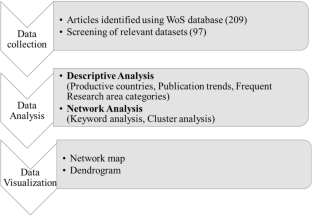
( Source : Prepared by author)
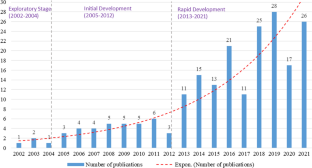
( Source : Prepared by the author using Web of Science datasets.)
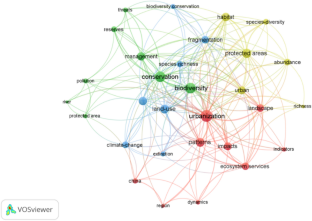
( Source : Prepared by the author using VOSviewer)
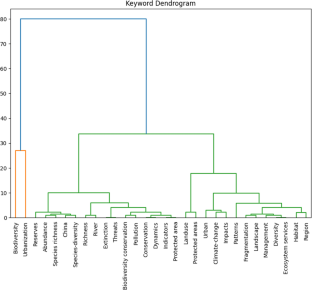
Similar content being viewed by others
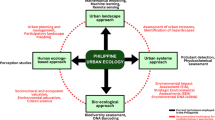
Systematic review of ecological research in Philippine cities: assessing the present status and charting future directions
Anne Olfato-Parojinog & Nikki Heherson A. Dagamac
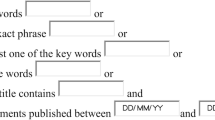
An Analysis of Trends in Urban Landscape Ecology Research in Spatial Ecological Literature Between 1986 and 2016
Trymore Muderere, Amon Murwira & Paradzayi Tagwireyi
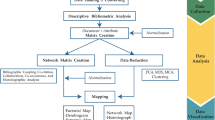
Sustainable land use and management research: a scientometric review
Hualin Xie, Yanwei Zhang, … Yafen He
Data availability
The datasets used and/or analyzed during the study are available on request from the corresponding author.
Aguiar, A. P. D., Vieira, I. C. G., Assis, T. O., Dalla-Nora, E. L., Toledo, P. M., Oliveira Santos-Junior, R. A., Batistella, M., Coelho, A. S., Savaget, E. K., Aragão, L. E. O. C., Nobre, C. A., & Ometto, J. P. H. (2016). Land use change emission scenarios: Anticipating a forest transition process in the Brazilian Amazon. Global Change Biology, 22 (5), 1821–1840. https://doi.org/10.1111/gcb.13134
Article Google Scholar
Bax, V., & Francesconi, W. (2019). Conservation gaps and priorities in the Tropical Andes biodiversity hotspot: Implications for the expansion of protected areas. Journal of Environmental Management, 232 (June 2018), 387–396. https://doi.org/10.1016/j.jenvman.2018.11.086
Bhyan, P., Shrivastava, B., & Kumar, N. (2022). Systematic literature review of life cycle sustainability assessment system for residential buildings: Using bibliometric analysis 2000–2020. Environment, Development and Sustainability. https://doi.org/10.1007/s10668-022-02636-5
Brooks, T. M., Mittermeier, R. A., Mittermeier, C. G., Da Fonseca, G. A. B., Rylands, A. B., Konstant, W. R., Flick, P., Pilgrim, J., Oldfield, S., Magin, G., & Hilton-Taylor, C. (2002). Habitat loss and extinction in the hotspots of biodiversity. Conservation Biology, 16 (4), 909–923. https://doi.org/10.1046/j.1523-1739.2002.00530.x
Chandra, T. (2021). Sustainable Strategies for Management of Protected Areas-case of Okhla Bird Sanctuary, Delhi. IOP Conference Series: Earth and Environmental Science . https://doi.org/10.1088/1755-1315/796/1/012074
Chen, C., McCain, K., White, H., & Lin, X. (2002). Mapping scientometrics (1981–2001). Proceedings of the ASIST Annual Meeting, 39 , 25–34. https://doi.org/10.1002/meet.1450390103
Coccia, M. (2018). General properties of the evolution of research fields: A scientometric study of human microbiome, evolutionary robotics and astrobiology. Scientometrics, 117 (2), 1265–1283. https://doi.org/10.1007/s11192-018-2902-8
Coccia, M. (2020). The evolution of scientific disciplines in applied sciences: Dynamics and empirical properties of experimental physics. In Scientometrics (Vol. 124, Issue 1). Springer. https://doi.org/10.1007/s11192-020-03464-y .
Coccia, M., Roshani, S., & Mosleh, M. (2022). Evolution of sensor research for clarifying the dynamics and properties of future directions. Sensors, 22 (23), 1–19. https://doi.org/10.3390/s22239419
Convention on Biological Diversity. (2012). Cities and biodiversity outlook . https://www.cbd.int/authorities/doc/cbo-1/cbd-cbo1-book-f.pdf .
Davis, A. G., Cox, J. J., & Fei, S. (2021). Alternative 2070: Mitigating the effects of projected sea level rise and urbanization on Florida black bear and Florida panther habitat. Journal for Nature Conservation, 63 (March), 126052. https://doi.org/10.1016/j.jnc.2021.126052
Egoh, B. N., O’Farrell, P. J., Charef, A., Josephine Gurney, L., Koellner, T., Nibam Abi, H., Egoh, M., & Willemen, L. (2012). An African account of ecosystem service provision: Use, threats and policy options for sustainable livelihoods. Ecosystem Services, 2 , 71–81. https://doi.org/10.1016/j.ecoser.2012.09.004
Elmqvist, T., Maltby, E., Barker, T., Mortimer, M., Perrings, C., Aronson, J., Groot, R. D., Fitter, A., Mace, G., Norberg, J., Pinto, I. S., Ring, I., Grimm, V., Jax, K., Leemans, R., & Salles, J. (2011). The economics of ecosystems and biodiversity: Economic and ecological foundations. Management of Environmental Quality: An International Journal, 22 (2), 65–72. https://doi.org/10.1108/meq.2011.08322bae.003
Gu, Z., Meng, F., & Farrukh, M. (2021). Mapping the research on knowledge transfer: A scientometrics approach. IEEE Access, 9 , 34647–34659. https://doi.org/10.1109/ACCESS.2021.3061576
Hellwig, N., Walz, A., & Markovic, D. (2019). Climatic and socioeconomic effects on land cover changes across Europe: Does protected area designation matter? PLoS ONE, 14 (7), 1–20. https://doi.org/10.1371/journal.pone.0219374
Article CAS Google Scholar
Hernández-Moreno, Á., & Reyes-Paecke, S. (2018). The effects of urban expansion on green infrastructure along an extended latitudinal gradient (23°S–45°S) in Chile over the last thirty years. Land Use Policy, 79 (December 2017), 725–733. https://doi.org/10.1016/j.landusepol.2018.09.008
Jaligot, R., Kemajou, A., & Chenal, J. (2018). Cultural ecosystem services provision in response to urbanization in Cameroon. Land Use Policy, 79 (September), 641–649. https://doi.org/10.1016/j.landusepol.2018.09.013
Jogan, N., Küzmič, F., & Šilc, U. (2022). Urban structure and environment impact plant species richness and floristic composition in a Central European city. Urban Ecosystems, 25 (1), 149–163. https://doi.org/10.1007/s11252-021-01140-4
Joshi, A., Vaidyanathan, S., Mondo, S., Edgaonkar, A., & Ramakrishnan, U. (2013). Connectivity of tiger ( Panthera tigris ) populations in the human-influenced forest mosaic of central India. PLoS ONE . https://doi.org/10.1371/journal.pone.0077980
Kašanin-Grubin, M., Štrbac, S., Antonijević, S., Djogo Mračević, S., Randjelović, D., Orlić, J., & Šajnović, A. (2019). Future environmental challenges of the urban protected area Great War Island (Belgrade, Serbia) based on valuation of the pollution status and ecosystem services. Journal of Environmental Management, 251 (January), 109574. https://doi.org/10.1016/j.jenvman.2019.109574
Khan, I. A., & Kumar, A. (2021). Avifaunal diversity and conservation status of Okhla Bird Sanctuary, Noida, Uttar Pradesh, India. Biological Diversity: Current Status and Conservation Policies, 1 , 223–229. https://doi.org/10.26832/aesa-2021-bdcp-014
Lele, N., Nagendra, H., & Southworth, J. (2010). Accessibility, demography and protection: Drivers of forest stability and change at multiple scales in the Cauvery Basin, India. Remote Sensing, 2 (1), 306–332. https://doi.org/10.3390/rs2010306
Leonard, P. B., Sutherland, R. W., Baldwin, R. F., Fedak, D. A., Carnes, R. G., & Montgomery, A. P. (2017). Landscape connectivity losses due to sea level rise and land use change. Animal Conservation, 20 (1), 80–90. https://doi.org/10.1111/acv.12289
Li, J., Mao, Y., Ouyang, J., & Zheng, S. (2022). A review of urban microclimate research based on CiteSpace and VOSviewer analysis. International Journal of Environmental Research and Public Health . https://doi.org/10.3390/ijerph19084741
Li, X., Lao, C., Liu, Y., Liu, X., Chen, Y., Li, S., Ai, B., & He, Z. (2013). Early warning of illegal development for protected areas by integrating cellular automata with neural networks. Journal of Environmental Management, 130 , 106–116. https://doi.org/10.1016/j.jenvman.2013.08.055
Li, Y., Duo, L., Zhang, M., Wu, Z., & Guan, Y. (2021). Assessment and estimation of the spatial and temporal evolution of landscape patterns and their impact on habitat quality in Nanchang, China. Land . https://doi.org/10.3390/land10101073
Łopucki, R., Klich, D., Kitowski, I., & Kiersztyn, A. (2016). Urban size effect on biodiversity: The need for a conceptual framework for the implementation of urban policy for small cities. Cities, 98 (February 2019), 627–640. https://doi.org/10.1016/j.scitotenv.2016.05.028
Luo, Y., Wu, J., Wang, X., Wang, Z., & Zhao, Y. (2020). Can policy maintain habitat connectivity under landscape fragmentation? A case study of Shenzhen, China. Science of the Total Environment, 715 , 136829. https://doi.org/10.1016/j.scitotenv.2020.136829
McCauley, L. A., Jenkins, D. G., & Quintana-Ascencio, P. F. (2013). Isolated wetland loss and degradation over two decades in an increasingly urbanized landscape. Wetlands, 33 (1), 117–127. https://doi.org/10.1007/s13157-012-0357-x
Mcdonald, R. I., Kareiva, P., & Forman, R. T. T. (2008). The implications of current and future urbanization for global protected areas and biodiversity conservation. Biological Conservation, 141 (6), 1695–1703. https://doi.org/10.1016/j.biocon.2008.04.025
Mingers, J., & Leydesdorff, L. (2015). A review of theory and practice in scientometrics. European Journal of Operational Research, 246 (1), 1–19. https://doi.org/10.1016/j.ejor.2015.04.002
Moed, H. F. (2008). UK research assessment exercises: Informed judgments on research quality or quantity? Scientometrics, 74 (1), 153–161. https://doi.org/10.1007/s11192-008-0108-1
Nagendra, H., Nagendran, S., Paul, S., & Pareeth, S. (2012). Graying, greening and fragmentation in the rapidly expanding Indian city of Bangalore. Landscape and Urban Planning, 105 (4), 400–406. https://doi.org/10.1016/j.landurbplan.2012.01.014
Nagendra, H., Paul, S., Pareeth, S., & Dutt, S. (2009). Landscapes of protection: Forest change and fragmentation in Northern West Bengal, India. Environmental Management, 44 (5), 853–864. https://doi.org/10.1007/s00267-009-9374-9
Nasi, R., Wunder, S., & Campos, J. J. (2002). Forest ecosystem services: Can they pay our way out of deforestation? Fondo Global Para El Medio Ambiente (pp. 1–11). http://www.fucema.org.ar/old/gef/forest2.pdf . http://cgspace.cgiar.org/handle/10568/18673 .
Nikodinoska, N., Paletto, A., Pastorella, F., Granvik, M., & Franzese, P. P. (2018). Assessing, valuing and mapping ecosystem services at city level: The case of Uppsala (Sweden). Ecological Modelling, 368 , 411–424. https://doi.org/10.1016/j.ecolmodel.2017.10.013
Park, S. (2015). Spatial assessment of landscape ecological connectivity in different urban gradient. Environmental Monitoring and Assessment, 187 (7), 1–20. https://doi.org/10.1007/s10661-015-4645-9
Paul, S., & Nagendra, H. (2015). Vegetation change and fragmentation in the mega city of Delhi: Mapping 25 years of change. Applied Geography, 58 , 153–166. https://doi.org/10.1016/j.apgeog.2015.02.001
Pinto, F. A. S., Clevenger, A. P., & Grilo, C. (2020). Effects of roads on terrestrial vertebrate species in Latin America. Environmental Impact Assessment Review, 81 (April 2019), 106337. https://doi.org/10.1016/j.eiar.2019.106337
Piquer-Rodríguez, M., Kuemmerle, T., Alcaraz-Segura, D., Zurita-Milla, R., & Cabello, J. (2012). Future land use effects on the connectivity of protected area networks in southeastern Spain. Journal for Nature Conservation, 20 (6), 326–336. https://doi.org/10.1016/j.jnc.2012.07.001
Quintas-Soriano, C., Castro, A. J., Castro, H., & García-Llorente, M. (2016). Impacts of land use change on ecosystem services and implications for human well-being in Spanish drylands. Land Use Policy, 54 , 534–548. https://doi.org/10.1016/j.landusepol.2016.03.011
Rajashekariah, K. (2011). Impact of urbanisation on biodiversity:Case studies from India. WWF Report (Issue October). https://doi.org/10.13140/2.1.4952.8324 .
Ramachandra, T. V., Bharath, A. H., & Sowmyashree, M. V. (2015). Monitoring urbanization and its implications in a mega city from space: Spatiotemporal patterns and its indicators. Journal of Environmental Management, 148 , 67–81. https://doi.org/10.1016/j.jenvman.2014.02.015
Ramírez, A., Engman, A., Rosas, K. G., Perez-Reyes, O., & Martinó-Cardona, D. M. (2012). Urban impacts on tropical island streams: Some key aspects influencing ecosystem response. Urban Ecosystems, 15 (2), 315–325. https://doi.org/10.1007/s11252-011-0214-3
Ramírez-Cruz, G. A., & Ortega-Álvarez, R. (2021). Identifying management guidelines to control the invasive House Sparrow ( Passer domesticus ) within natural protected areas through the estimation of local colonization and extinction probabilities. Biological Invasions, 23 (12), 3767–3776. https://doi.org/10.1007/s10530-021-02616-2
Rocha-Ortega, M., & Castaño-Meneses, G. (2015). Effects of urbanization on the diversity of ant assemblages in tropical dry forests, Mexico. Urban Ecosystems, 18 (4), 1373–1388. https://doi.org/10.1007/s11252-015-0446-8
Roy, P. S. (2012). Geospatial characterization of biodiversity: Need and challenges. The International Archives of the Photogrammetry, Remote Sensing and Spatial Information Sciences, 38 (November), 10–16. https://doi.org/10.5194/isprsarchives-xxxviii-8-w20-10-2011
Sahani, S., & Raghavaswamy, V. (2018). Analyzing urban landscape with City Biodiversity Index for sustainable urban growth. Environmental Monitoring and Assessment . https://doi.org/10.1007/s10661-018-6854-5
Sannigrahi, S., Pilla, F., Basu, B., Basu, A. S., Zhang, Q., Wang, Y., Joshi, P. K., Chakraborti, S., Coscieme, L., Keesstra, S., Roy, P. S., & Sutton, P. C. (2020). Identification of conservation priority zones using spatially explicit valued ecosystem services: A case from the Indian Sundarbans. Integrated Environmental Assessment and Management, 16 (5), 773–787. https://doi.org/10.1002/ieam.4287
Sasanifar, S., Alijanpour, A., Banj Shafiei, A., Eshaghi Rad, J., Molaei, M., & Azadi, H. (2019). Forest protection policy: Lesson learned from Arasbaran biosphere reserve in Northwest Iran. Land Use Policy, 87 (June), 104057. https://doi.org/10.1016/j.landusepol.2019.104057
Schubert, A., & Láng, I. (2005). The literature aftermath of the brundtland report “our common future”. A scientometric study based on citations in science and social science journals. Environment, Development and Sustainability, 7 (1), 1–8. https://doi.org/10.1007/s10668-003-0177-5
Sharma, N., Gaur, S., Dhyani, R., & Singh, A. (2016). Challenges of small protected areas in urban cities: A case study of Okhla Bird Sanctuary, India. Environment, Development and Sustainability, 18 (1), 295–310. https://doi.org/10.1007/s10668-015-9628-z
Shi, M., Qi, J., & Yin, R. (2016). Has China’s natural forest protection program protected forests?-Heilongjiang’s experience. Forests, 7 (10), 1–18. https://doi.org/10.3390/f7100218
Siddaway, A. (2013). What is a systematic literature review and how do i do one? (pp. 1–10).
Sudhira, H., & Nagendra, H. (2013). Local assessment of Bangalore: Graying and greening in Bangalore—Impacts of urbanization on ecosystems, ecosystem services and biodiversity. In Urbanization, biodiversity and ecosystem services: challenges and opportunities: A global assessment (Issue September). https://doi.org/10.1007/978-94-007-7088-1_7 .
Toor, G., & Chandra, T. (2021). Ecological areas and challenges of urbanization: A stride towards environment restoration. In Addressing environmental challenges through spatial planning .
Trzyna, T. (2007). Global urbanization and protected areas—Challenges and opportunities posed by a major factor of global change and creative ways of responding. In California Institute of Public Affairs . http://www.ncbi.nlm.nih.gov/pubmed/12971682 .
Tsiafouli, M. A., Apostolopoulou, E., Mazaris, A. D., Kallimanis, A. S., Drakou, E. G., & Pantis, J. D. (2013). Human activities in Natura 2000 sites: A highly diversified conservation network. Environmental Management, 51 (5), 1025–1033. https://doi.org/10.1007/s00267-013-0036-6
UN-Habitat. (2016). World cities report- urbanization and development: Emerging future. UN-Habitat . https://doi.org/10.1097/NCM.0000000000000166
UN-Habitat. (2020). World cities reprt: The value of sustainable urbanization . https://doi.org/10.18356/c41ab67e-en .
van Eck, N. J., & Waltman, L. (2010). Software survey: VOSviewer, a computer program for bibliometric mapping. Scientometrics, 84 (2), 523–538. https://doi.org/10.1007/s11192-009-0146-3
Van Raan, A. F. J. (2005). Fatal attraction: Conceptual and methodological problems in the ranking of universities by bibliometric methods. Scientometrics, 62 (1), 133–143. https://doi.org/10.1007/s11192-005-0008-6
Van Raan, A. F. J. (2006). Comparison of the Hirsch-index with standard bibliometric indicators and with peer judgment for 147 chemistry research groups. Scientometrics, 67 (3), 491–502. https://doi.org/10.1556/Scient.67.2006.3.10
Wang, D., Shi, C., Alamgir, K., Kwon, S. M., Pan, L., Zhu, Y., & Yang, X. (2022). Global assessment of the distribution and conservation status of a key medicinal plant ( Artemisia annua L.): The roles of climate and anthropogenic activities. Science of the Total Environment, 821 , 153378. https://doi.org/10.1016/j.scitotenv.2022.153378
World Resource Institute. (2005). Millennium ecosystem assessment, 2005. Ecosystems and human well-being: synthesis. In Island Press . https://doi.org/10.11646/zootaxa.4892.1.1 .
Wu, Q., Hao, J., Yu, Y., Liu, J., Li, P., Shi, Z., & Zheng, T. (2018). The way forward confronting eco-environmental challenges during land-use practices: A bibliometric analysis. Environmental Science and Pollution Research, 25 (28), 28296–28311. https://doi.org/10.1007/s11356-018-2866-5
Wu, Z., Zhang, D., Li, S., Fei, J., Chen, C., Tian, B., & Antwi-Afari, M. F. (2022). Visualizing and understanding shrinking cities and towns (SCT) research: A network analysis. International Journal of Environmental Research and Public Health . https://doi.org/10.3390/ijerph191811475
Xiao, H., Shahab, A., Xi, B., Chang, Q., You, S., Li, J., Sun, X., Huang, H., & Li, X. (2021). Heavy metal pollution, ecological risk, spatial distribution, and source identification in sediments of the Lijiang River, China. Environmental Pollution, 269 , 116189. https://doi.org/10.1016/j.envpol.2020.116189
Xie, H., Yao, G., & Liu, G. (2015). Spatial evaluation of the ecological importance based on GIS for environmental management: A case study in Xingguo county of China. Ecological Indicators, 51 , 3–12. https://doi.org/10.1016/j.ecolind.2014.08.042
Xie, H., Zhang, Y., Choi, Y., & Li, F. (2020). A scientometrics review on land ecosystem service research. Sustainability (switzerland), 12 (7), 1–23. https://doi.org/10.3390/su12072959
Yang, C., Liu, H., Li, Q., Cui, A., Xia, R., Shi, T., Zhang, J., Gao, W., Zhou, X., & Wu, G. (2021). Rapid urbanization induced extensive forest loss to urban land in the Guangdong-Hong Kong-Macao Greater Bay Area, China. Chinese Geographical Science, 31 (1), 93–108. https://doi.org/10.1007/s11769-021-1177-9
Yang, J., Yang, J., Luo, X., & Huang, C. (2019). Impacts by expansion of human settlements on nature reserves in China. Journal of Environmental Management, 248 (February), 109233. https://doi.org/10.1016/j.jenvman.2019.07.004
Yu, D., Yanxu, L., & Bojie, F. (2019). Urban growth simulation guided by ecological constraints in Beijing city: Methods and implications for spatial planning. Journal of Environmental Management, 243 (April), 402–410. https://doi.org/10.1016/j.jenvman.2019.04.087
Zapata, V. M., & Robledano, F. (2014). Assessing biodiversity and conservation value of forest patches secondarily fragmented by urbanisation in semiarid southeastern Spain. Journal for Nature Conservation, 22 (2), 166–175. https://doi.org/10.1016/j.jnc.2013.11.002
Zhang, Y., Liu, Y., Zhang, Y., Liu, Y., Zhang, G., & Chen, Y. (2018). On the spatial relationship between ecosystem services and urbanization: A case study in Wuhan, China. Science of the Total Environment, 637–638 , 780–790. https://doi.org/10.1016/j.scitotenv.2018.04.396
Zhao, L., Tang, Z. Y., & Zou, X. (2019). Mapping the knowledge domain of smart-city research: A bibliometric and scientometric analysis. Sustainability (switzerland), 11 (23), 1–28. https://doi.org/10.3390/su11236648
Zhong, S., Zhou, L., & Wang, Z. (2011). Software for environmental impact assessment of air pollution dispersion based on ArcGIS. Procedia Environmental Sciences, 10 (PART C), 2792–2797. https://doi.org/10.1016/j.proenv.2011.09.433
Zhou, K., Liu, Y., Tan, R., & Song, Y. (2014). Urban dynamics, landscape ecological security, and policy implications: A case study from the Wuhan area of central China. Cities, 41 , 141–153. https://doi.org/10.1016/j.cities.2014.06.010
Download references
Author information
Authors and affiliations.
Architecture and Planning Department, MNIT, Jaipur, 302017, India
Garima Toor, Neha Goyal Tater & Tarush Chandra
You can also search for this author in PubMed Google Scholar
Corresponding author
Correspondence to Tarush Chandra .
Ethics declarations
Conflict of interest.
The authors do not have any conflict of interest in this review article.
Additional information
Publisher's note.
Springer Nature remains neutral with regard to jurisdictional claims in published maps and institutional affiliations.
Rights and permissions
Springer Nature or its licensor (e.g. a society or other partner) holds exclusive rights to this article under a publishing agreement with the author(s) or other rightsholder(s); author self-archiving of the accepted manuscript version of this article is solely governed by the terms of such publishing agreement and applicable law.
Reprints and permissions
About this article
Toor, G., Tater, N.G. & Chandra, T. Exploring recent trends in integrating urban planning and ecology. Environ Dev Sustain (2023). https://doi.org/10.1007/s10668-023-03448-x
Download citation
Received : 04 November 2022
Accepted : 02 June 2023
Published : 18 June 2023
DOI : https://doi.org/10.1007/s10668-023-03448-x
Share this article
Anyone you share the following link with will be able to read this content:
Sorry, a shareable link is not currently available for this article.
Provided by the Springer Nature SharedIt content-sharing initiative
- Protected areas
- Ecosystem services
- Biodiversity conservation
- Urbanization
- Scientometrics
- Bibliometric
- Systematic literature review
- Find a journal
- Publish with us
- Track your research

- Articles , Special Edition Articles , Urban theory
Best Topics for Research in Urban Design and Planning
- May 27, 2022
- Designers , Laptops , Laptops for Architects , Softwares , Urban design
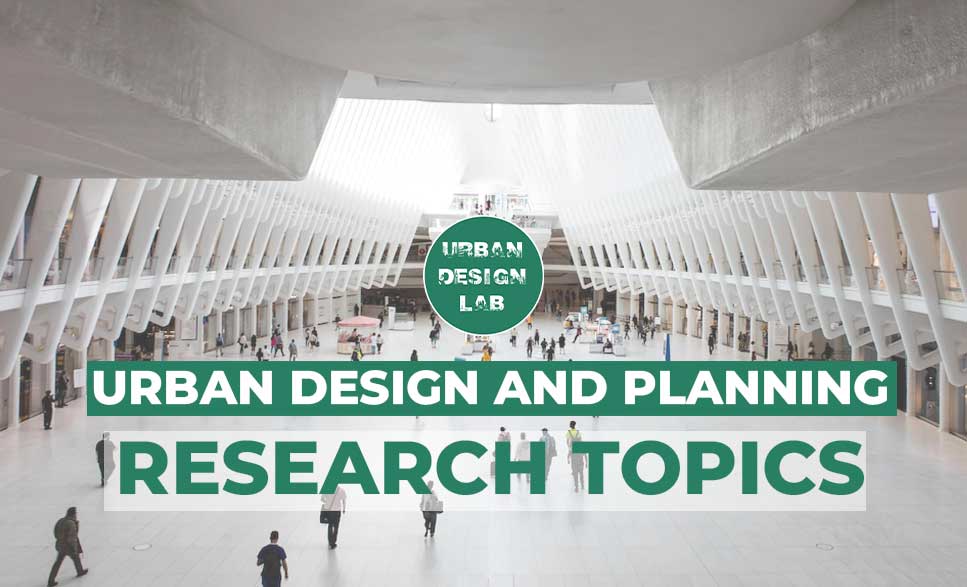
Research in urban and regional planning has grown tremendously in the recent decade. T his section contains the best and most relevant topics related to research in Urban design and regional planning.
Areas of Study
Mediated city.
This theme builds on work done by Kevin Lynch in the early years of the program and focuses on how form and meaning are perceived and communicated in the current city. At issue are the effects of advanced information technology on contemporary culture, as well as the increasing importance of narrative on the form and design of cities. Our work around this theme seeks to understand how urban experience is shaped by the preservation of culture, history and memory, by the development of new kinds of “mediated” places and activities in the public realm. We are also interested in the tools and technologies by which changes in urban form and landscape can be visualized and understood.
Urban Transformation
This theme is concerned with the future of cities and regions of the 20th century. Industrial land, infrastructure, warehouses, housing, ports and waterfronts, rail-lines and depots, mines and oil fields, are among an inventory of abandonment, all seeking temporary and permanent re-use. Our inquiries around this theme hope to clarify new design approaches to urban and regional transformation, involving elements such as education, ecology, retrofitting and cultural development as well as new forms of housing and transportation.
Urban Performance
The quality of urban life and work is currently being challenged and shaped by many forces such as demographic patterns (aging and disability, for example), international economics (globalization and the demise of distance), and environmental pressures (sustainability, resource conservation, energy). Our inquiries around this theme ask how cities can be reshaped in the face of these forces; how design and construction standards affect livability and energy consumption; what role citizens should play in determining urban quality in a contemporary democracy; and how one understands the form of the vast, poor urban areas of the world and the enormous discrepancy between them and places of wealth.
Design Paradigms
With the re-evaluation/repudiation of modernism as the dominant perspective on design, this theme takes to task the development of design paradigms appropriate to contemporary urban circumstances both in the United States and other parts of the globe. Our inquiries around this theme center on the making of good public places, the expression of private and public environments in the city, the aesthetics of popular demand, the reshaping of the form of low-density cities and public housing, and the role that design can play in the changing peripheries of cities.
Managing and financing urban infrastructure
As cities expand and incomes increase, finding innovative solutions for sustainable mobility becomes increasingly important. This specialisation seeks to provide hands-on knowledge and expertise on how local governments can most efficiently manage, finance and operate municipal infrastructure to deliver desired levels of service.
This specialisation is connected to IHS’ Green City work field in which providing resilient, energy efficient and smart infrastructure play a prominent role in helping cities to become more sustainable and green. The primary focus is on developing countries and countries in transition.
Urban housing, equity and social Justice
Housing should be understood as ‘more than houses’. Researchers active within this strand of research strive to link housing issues with the livelihoods strategies of the urban poor. In addition, livelihood assets are analysed in view of their vulnerability and institutional context.
This translates into the importance of looking at the housing problem from a holistic standpoint. Physical, political, social, economic and environmental issues interrelate with each other. The objective is to produce urban environments that should ultimately reduce poverty, and increase quality of life. Both housing and social policies, strategies and instruments need to be designed with a clear understanding of these aspects if they are ever to efficiently address the problem of urbanisation of poverty.
Urban Environment, sustainability and climate Change
Cities all over the world experience severe environmental and climate change related problems. This research theme addresses new approaches for urban environment and climate change management.
UECC is one of IHS’ largest research teams that works towards understanding the impact and use of urban environmental policies and instruments including urban climate change adaptation and mitigation strategies.
Urban strategies and planning
Around the world, urban professionals increasingly face challenges such as accelerated urbanisation, an increase in informal housing, and climate change. In order to deal with these challenges urban planning has moved away from comprehensive master plans to more flexible strategic plans. Contemporary strategic planning integrates more social and economic considerations into the physical and spatial dimensions of planning.
Researcher within this specialisation seeks to offer creative and innovative solutions to better understand the needs of different social and economic interests within urban planning management. Different from the classical study of urban planning, this strand focusses on the combination of urban planning policies, city development strategies and public-private partnerships.
Urban competitiveness and resilience
Cities cannot be understood as autonomous entities. There are affected by complex processes on the local, regional and global scale. Given the increasing dependency of cities on global economic networks, it is crucial to find the balance between social wellbeing, local economic development and global strategies that can ensure resilience to socioeconomic shocks and fluctuations.
This research theme investigates how globalisation processes, local economic development, and urban conditions can enable cities to successfully compete or collaborate with other cities on various scales. This is done by analysing and comparing urban networks, economic geography, foreign direct investments and local economic development as well as city marketing and branding.
Urban Conservation
Urban conservation is concerned with those parts of the built environment that are of architectural or historic significance. This includes buildings (individually or in groups), localities (streets, blocks, environments or precincts), special gardens or landscapes, and other structures.
Researchers, advocates and policymakers have proposed urban conservation as an emerging, integrative discipline that can contribute to sustainable cities by delivering co-benefits to human and non-human components of biodiversity
Research Topics:
Spatial planning.
- Growth Effects of Urban-Rural and Intra-Regional Linkages on Non-Metropolitan Counties and Communities
- Spatial Distribution of Best Management Practices for Stormwater Management
- The application of computer-based information systems to urban planning and public policy making
- How are the urban poor involved in the design and implementation of neighbourhood development programmes?
- What is the impact of neighbourhood development programmes on the local initiatives and livelihoods of the urban poor?
- Urbanization As An Important Determinant In Spatial Organization
- Effects Of Rural-Urban Migration On Public Utilities
- Assessing The Spatial Distribution And Locational Impact Of Petrol Service Stations
- Appraisal Of The Urban Management Challenge Of Informal Land Delivery
Urban Housing
- Relationships and Support: A Qualitative Study of Homeless Families
- Comparative analysis of rent differential in selected residential areas
- The Role Of Co-Operative Societies Towards Development Of Rural Communities
- Cluster Planning and Cluster Strategy in Regional Economic Development Organizations
- The Broader Social Network of Community Planning: A Diagnostic Tool for Communities to Assess Their Planning Capacity
- Sustainable Urban Housing Development through Planning Mechanism
- Migration Patterns and Its Impact On Urbanization And Urban Housing
- Housing transformation, rent gap and gentrification
- Impact Of Slum On Value Of Residential Properties
- Social housing in low and middle-income countries (incl. public housing, government-built housing, subsidized housing programmes, low-income housing, affordable housing)
- Infrastructural Development, Real Estate Agency Rebranding And Review Of National Housing Policy
- The Impact Of Industrialization On Rural Development
- The Role Of Private Partnership In Housing Finance, Delivery And Maintenance
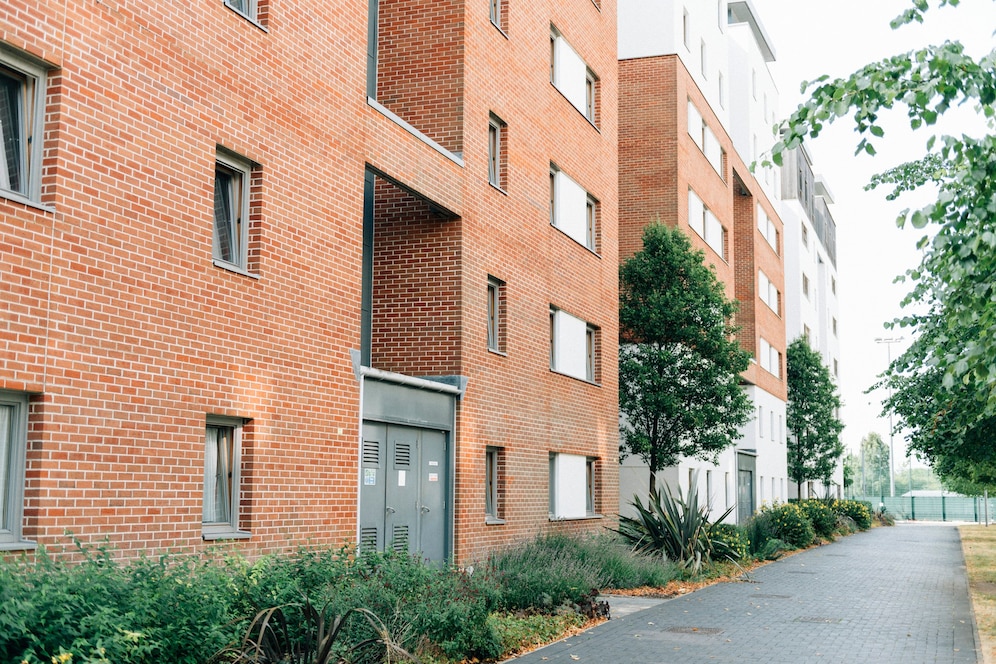
Urban Public Spaces
- Multifunctional public open spaces for sustainable cities
- Immigrations in the public space: understanding urban cultural landscapes
- Urban Public Space as Social Interaction Space
- Modeling, analyzing, and visualizing human space appropriation
- Smart engagement for smart cities: Design patterns for digitally augmented, situated community engagement
- Evaluating publicness of public spaces
- Informal public places and its transforming patterns in the city
- Urban public realm : a spatial manifest of culture
- City planning strategies for women’s safety in public spaces

Urban Transportation
- The implementation of an integrated transportation planning model with GIS and expert systems for interactive transportation planning
- Increasing freight transport efficiency using intermodal transport.
- Epidemic and mobility. A New Paradigm for mobility plans after the Covid-19 crisis
- Alternatives Selection for Sustainable Transportation System.
- Sustainable management of public transportation system
- Environmental impacts of everyday mobility
- Environmental assessment of public bus transportation systems
- Minimization of Fuel Consumption in City Bus Transportation
- Proposed framework for sustainability screening of urban transport projects in developing countries
- Effects of speed management and roadway parameters on traffic flow along arterials
- Sustainability and business management in transportation companies
- Factors that contribute to unsafe behavior and leads to an unsustainable urban transport
- Safety and security of women and girls in public transport
- Inclusive public transportation for differently abled people
- Challenges in provision of universally accessible tansport facilities
- Assessment Of Urban Bus Service
- Analysis Of Intra Urban Traffic Problems In Rivers State
- Urban Futures: Transportation in an Era of Fuel Shortages

Environmental Issues
- Sustainable and green energy
- Impact Of Environmental Planning On Rural Development
- An Assessment Of Cross Ventilation In Public Buildings
- Flood Generating Structures In Kubwa Urban Landscape
- Assessment Of Impact Of Urbanization
- Causes Of Excess Flood
- Impact Of Environmental Problems
- Consequences Of Incompatible Land Uses On The Environment
- The role of urban spatial structure in reducing VMT and GHG emissions
- Impact of climate change on the ecological state of earth natural resources.
- Impact of climate change on agricultural activities across the globe.
- Solutions to the current climate change crisis.
- Future implications of climate change with the current trends
- Urban governance arrangements for climate change adaptation

Heritage Conservation
- The Urban Conservation Approach
- The Role of Public-Private Partnerships and the Third Sector in Conserving Heritage Buildings, Sites, and Historic Urban Areas
- Urban Conservation and Regeneration
- Managing change in the historical city
- A framework for adapting urban forests to climate change
- Equity in Heritage Conservation
- The Role of Traditional Neighborhood Centers in Procreating Sense of Place in the Modern Cities
- Heritage place inventory: A tool for establishing the significance of places
- Building Conservation and Urban Regeneration
- Historic Preservation as Urban Regeneration
- The creative response to ruins following the conservation principle
- Historic Cinemas Conservation: The Difficulty of Re-Development Proposals
- A Study of Heritage Authenticity in the Context of Heritage Tourism
- Historic Cinemas Conservation
- Revitalisation of urban areas with heritage value – towards a heritage precinct conservation and improvement plan
- Repair techniques for conservation of heritage structures
- Planning urban heritage through stakeholder participation
- Rethinking adaptive reuse
- Heritage conservation and cultural continuity
- Landscape management of a heritage site
- Landscape management and conservation of biodiversity
- Industrial heritage

GIS, Space syntax and Bigdata
- Geospatial data for energy, environmental science, climate change, and geology-related research
- Geospatial data and maps for research on humanitarian topics. Includes data on armed conflict, agriculture & food security, refugees, and links to multidisciplinary humanitarian data repositories.
- Crowd Simulation – Mastering the collective dynamics of interacting objects in urban phenomena at the scale of individual households, people, and units of real estate and at time scales approaching “real-time”
- City Engine – Assessing feasibility and plan implementation using Esri’s City Engine improving urban planning, architecture, and overall design
- Integration of GIS and BIM – Operating a facility with BIM (building information modeling) because of its ability to analyze information and integrate data from different systems.
- Urban Model Development Feasibility – Evaluating multiple land use scenarios; testing and refining transportation plans; producing small-area concept plans, and modeling complex regional issues with Envision Tomorrow
- Building Footprints – Crowd-sourcing digital mapping
- Land Use Policy – Reproducing individual behavior with agent-based modeling to simulate their behaviors and outcomes having a direct impact on the surrounding landscape.
- Space Syntax Models – Gaining a better understanding of human behavior and connectivity through a graphic representation of space configuration in urban structures
- Future Development Patterns – Locating future growth and evaluating scenarios such as loss of prime agricultural land.
- Land Use – Generating polygons and classification with the multi-resolution segmentation algorithm
- Homeless Shelters – Analyzing urban inequalities and homelessness to allocate homeless shelters appropriately.
- Web-Based GIS for Collaborative Planning and Public Participation: An Application to The Strategic Planning
- Web Based Geo-Information Services for Land Use Planning.
- Water Balance of a Catchment: A Remote Sensing and GIS Approach.
- Visualizing The Application of GIS in Transformation Towards a Sustainable Development and A Low Carbon Society.
- Using GIS to Study Lusters of Urban Crime and Safety in Transport Nodes.
- Using GIS for Developing Sustainable Urban Growth.
- Use of GIS in City Planning Development Enforcement and EIA
- Use of GIS as A Tool to Improvement of Solid Waste Management
- Urban Land Use Land Cover Classification Performance of Machine Learning (ML) Algorithms and Change Detection.

Other Topics related to other urban design and planning:
- Managing urban infrastructure and building projects
- Water, Sanitation and The Modern City
- From Mosques and Coffeehouses to Squares and Cafes: The Production and Transformation of Political Public Spaces and Social Life
- Contested Politics and the Production of Urban Space
- Foreign Investments and City Making
- Urban Development and Quality of Life of the Elderly
- Moving towards disaster: examining the changing patterns of social vulnerability in a multi-hazard urban environment
- Sustainable drink water sanitation
- What type of initiatives do the urban poor (low-income families, slum dwellers) take, individually or collectively, to improve the liveability of their settlement?
- The relationship between different urban designs and environmental impacts
- Multi-level and multi-actor governance
- Climate change and environmental decision making and finance
- How are cities planned?
- What visions does urban planning follow and whose vision is it?
- What are the underlying features of urban development and what is the role of self-organisation?
- How do micro-interventions (such as placemaking and streetscaping) connect with planning and implementation on the municipal and national levels?
- What factors determines a city’s global competitiveness?
- What urban characteristics are attract foreign direct investments?
- How to develop more resilient cities with healthy relationships between local, regional and global interests?
- Which economic sectors should be promoted in order to boost sustainable local economic development and social wellbeing?
- How does global economic unevenness affect economic inequality in African countries and cities?
- Evaluation Of Cost Recovery For Water Supply
- An Assessment Of Tourism Potentials
- Analysis Of The Effects Of Socio-Economic Characteristics On Tourism Habits Among Residents
- Analysis Of The Patronage Characteristics Of Tourism Destinations
- Analysis Of Women’S Participation And Incorporation In Waste Picking And Solid Waste Management
- Appraisal Of Tourism Habits Of Academic Staff
- Assessment Of Residents’Attitudes Towards Recreation
- Appraisal Of Sanitary Facilities In Public Areas
- Agricultural Information Sources And The Production Capacity Of Cassava Farmers In Akwa Ibom North West Senatorial District
- Self-Help Programmes And Rural Development In Ibiono Ibom Local Government Area
- Tenement Housing And Induced Domestic Conflict
- Waste Generation And Management Strategies
- Impact Of Public Pit Toilet System And Its Associated Problems
- Problems And Prospects Of Land Registration
- Causes Of Construction Project Failures And Abandonment
- The Impact of Urban Relocation: A Follow-Up Study
What other topics should be added in the list?—Leave a comment below.
UDL Thesis Publication 2023
Curating the best thesis Globally !

Urban Design Lab
About the author.
This is the admin account of Urban Design Lab. This account publishes articles written by team members, contributions from guest writers, and other occasional submissions. Please feel free to contact us if you have any questions or comments.
Related articles

The Others Nest | Unleashing Urban Wonder in Chengdu


La Barcelonita | A playground for social & commercial activity
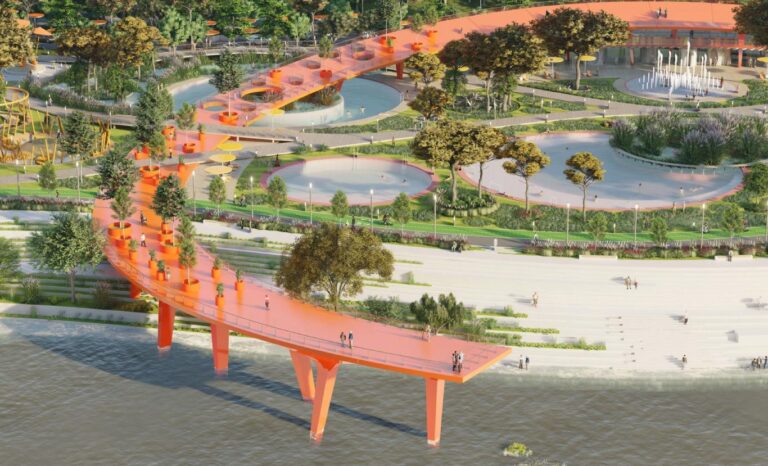
The Orange Moon: Revitalizing Seoul’s Riverfront
Udl thesis publication 2024.
Curating the Best Thesis Projects Globally !
Leave a Reply
Udl photoshop, masterclass.
Decipher the secrets of
Urban Mapping and 3D Visualisation
Session Dates
4th-5th May, 2024
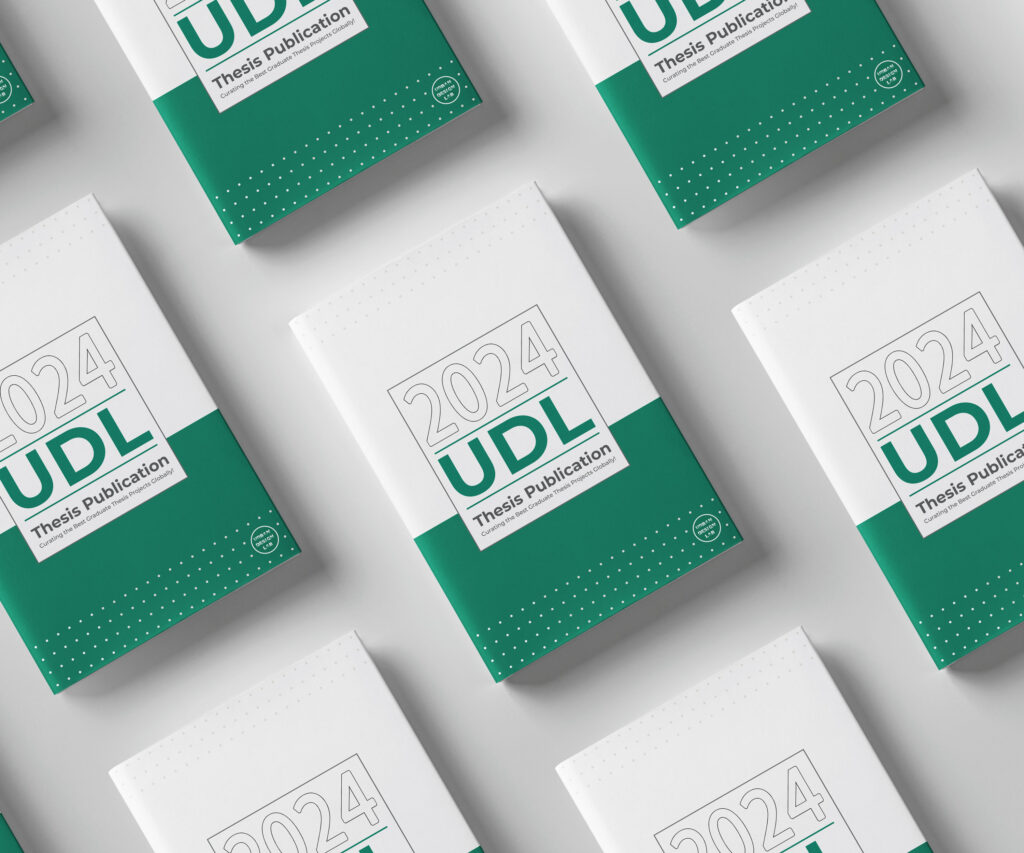
UDL Thesis Publication
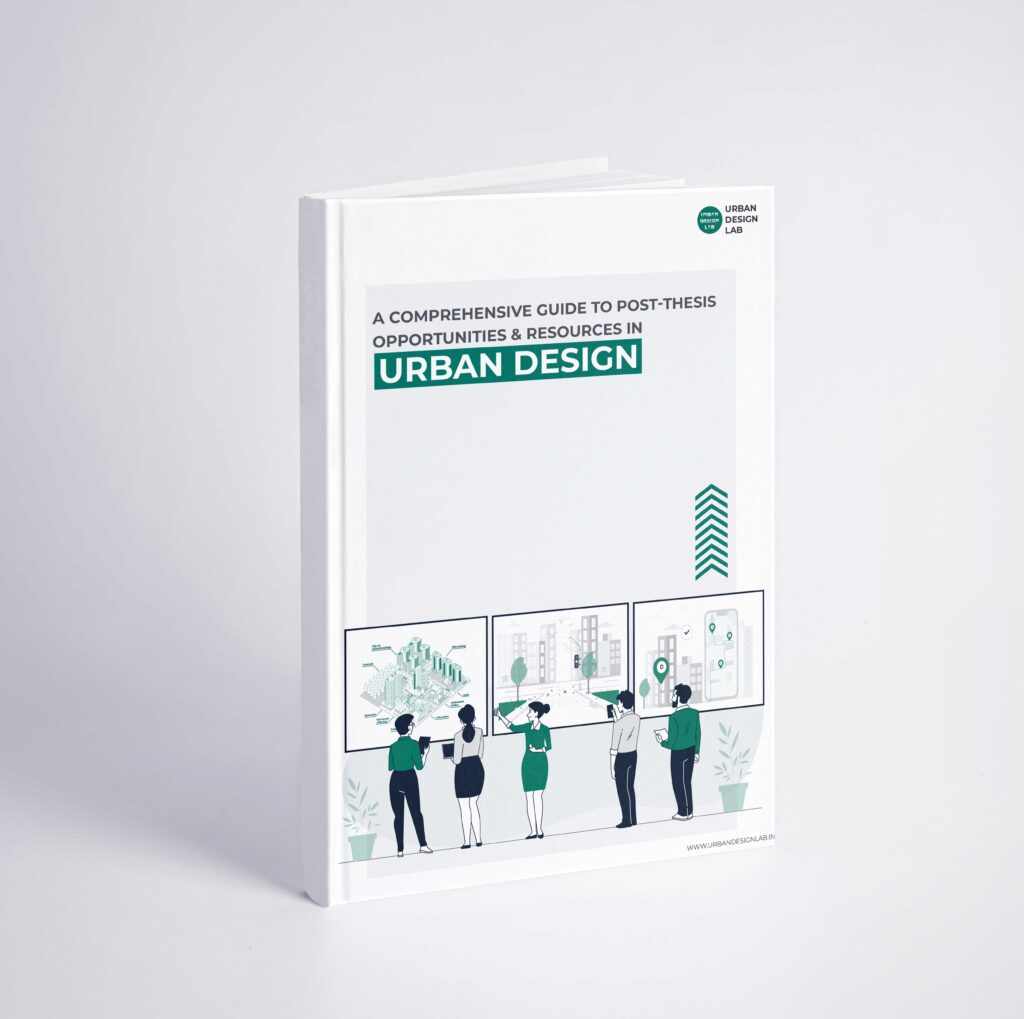
A Comprehensive Guide
Post-thesis opportunities and resources.

Urban Design | Landscape| Planning
Join the largest social media community.

STAY UPDATED
Join our whatsapp group.

Recent Posts
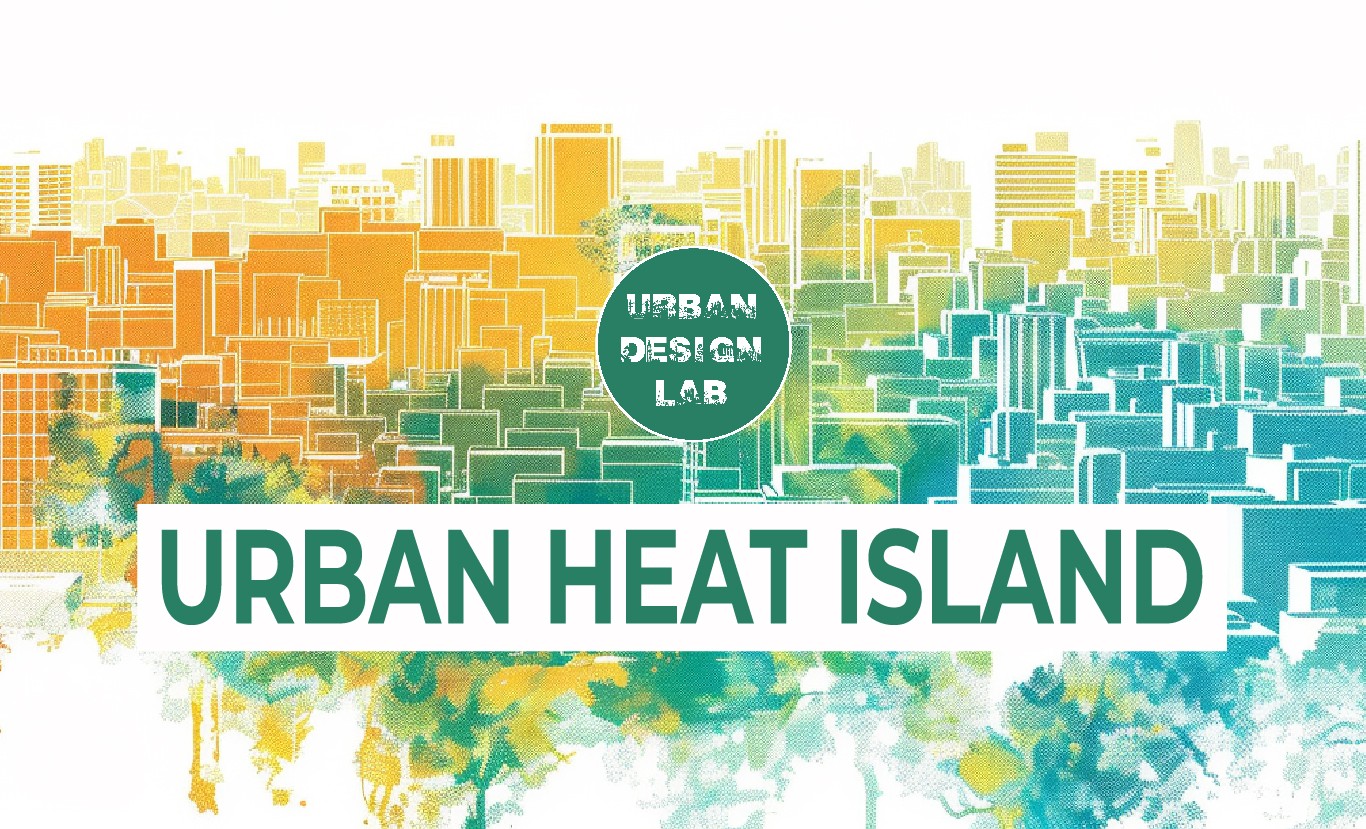
What Is an Urban Heat Island?
- Article Posted: March 28, 2024
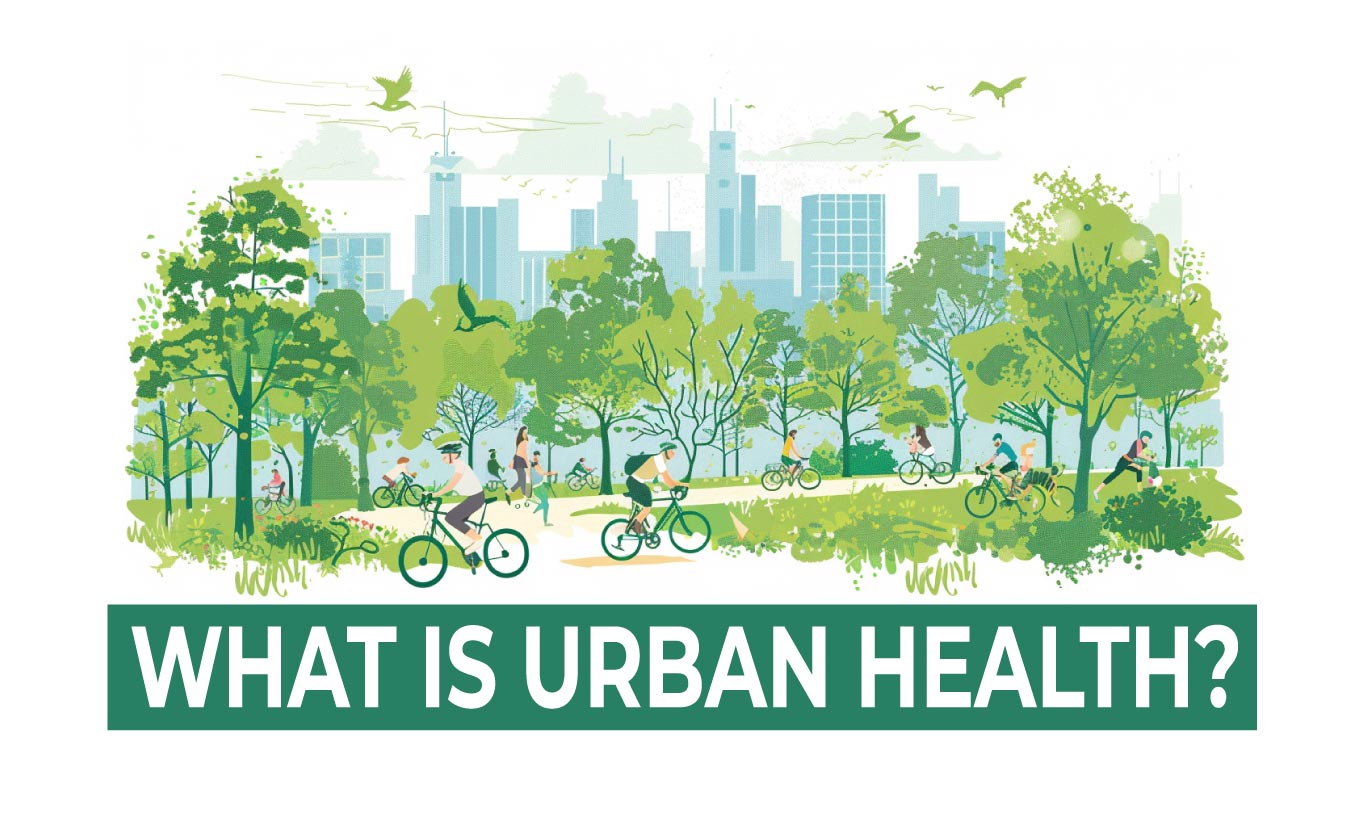
What is urban Health?
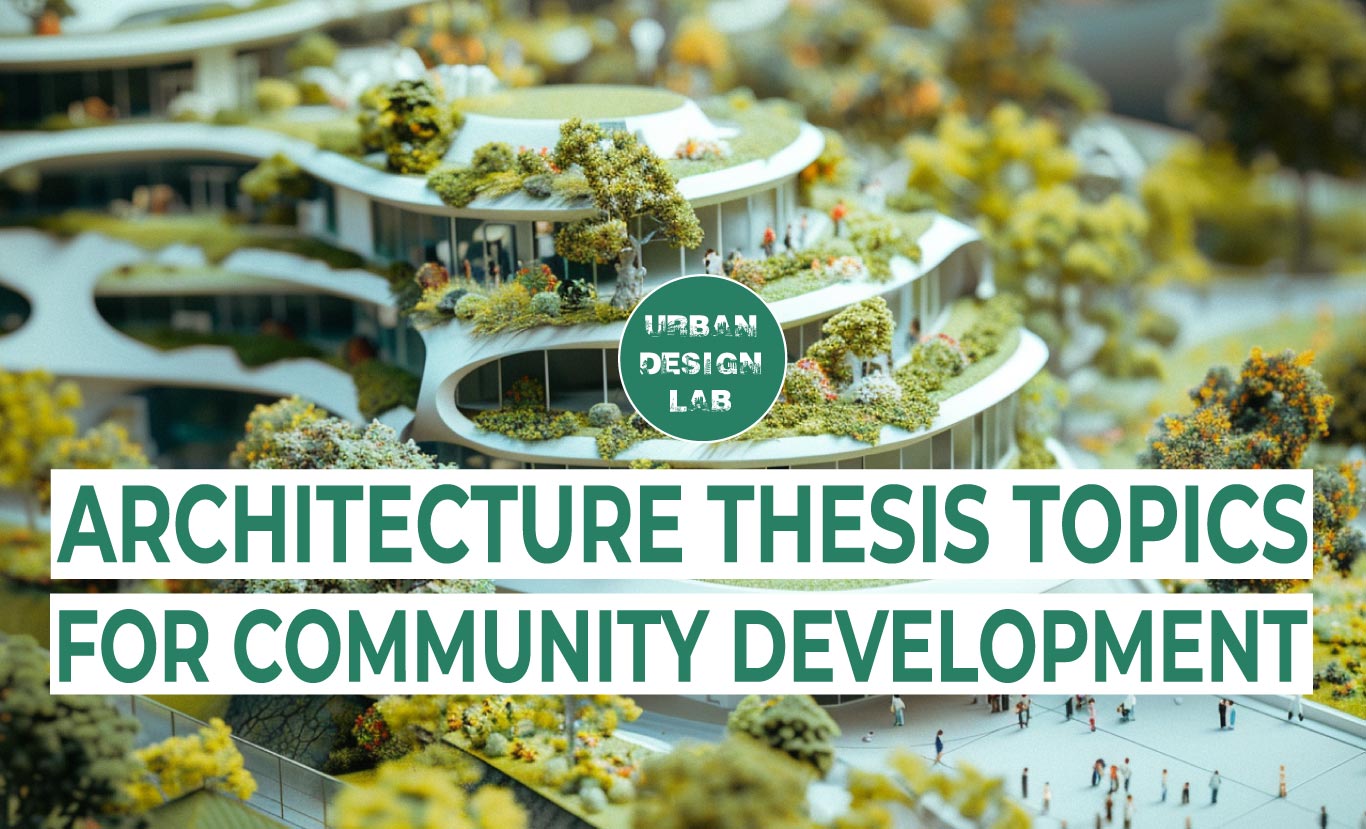
Top Architecture Thesis Topics for Community Development
- Article Posted: March 26, 2024
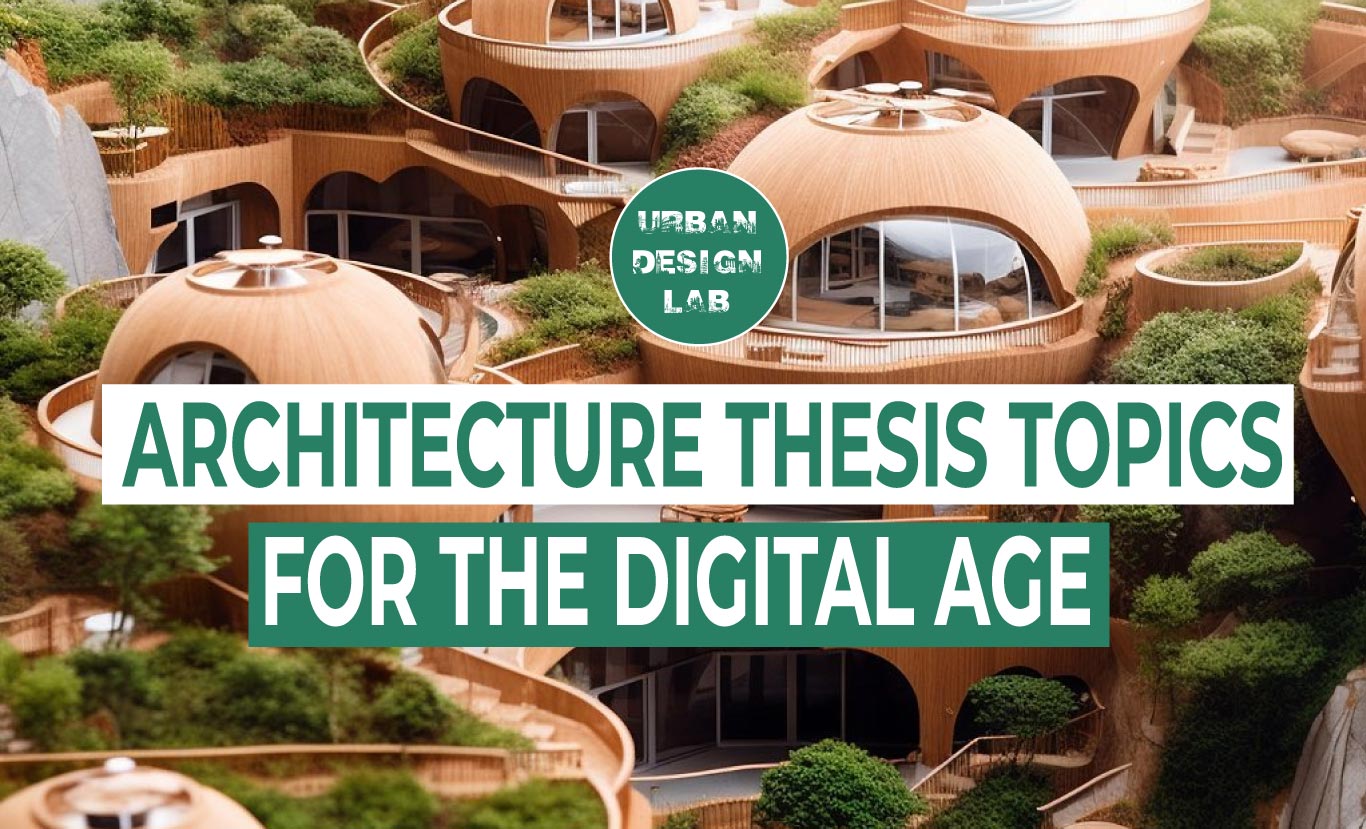
Architecture Thesis Topics for the Digital Age
- Article Posted: March 25, 2024
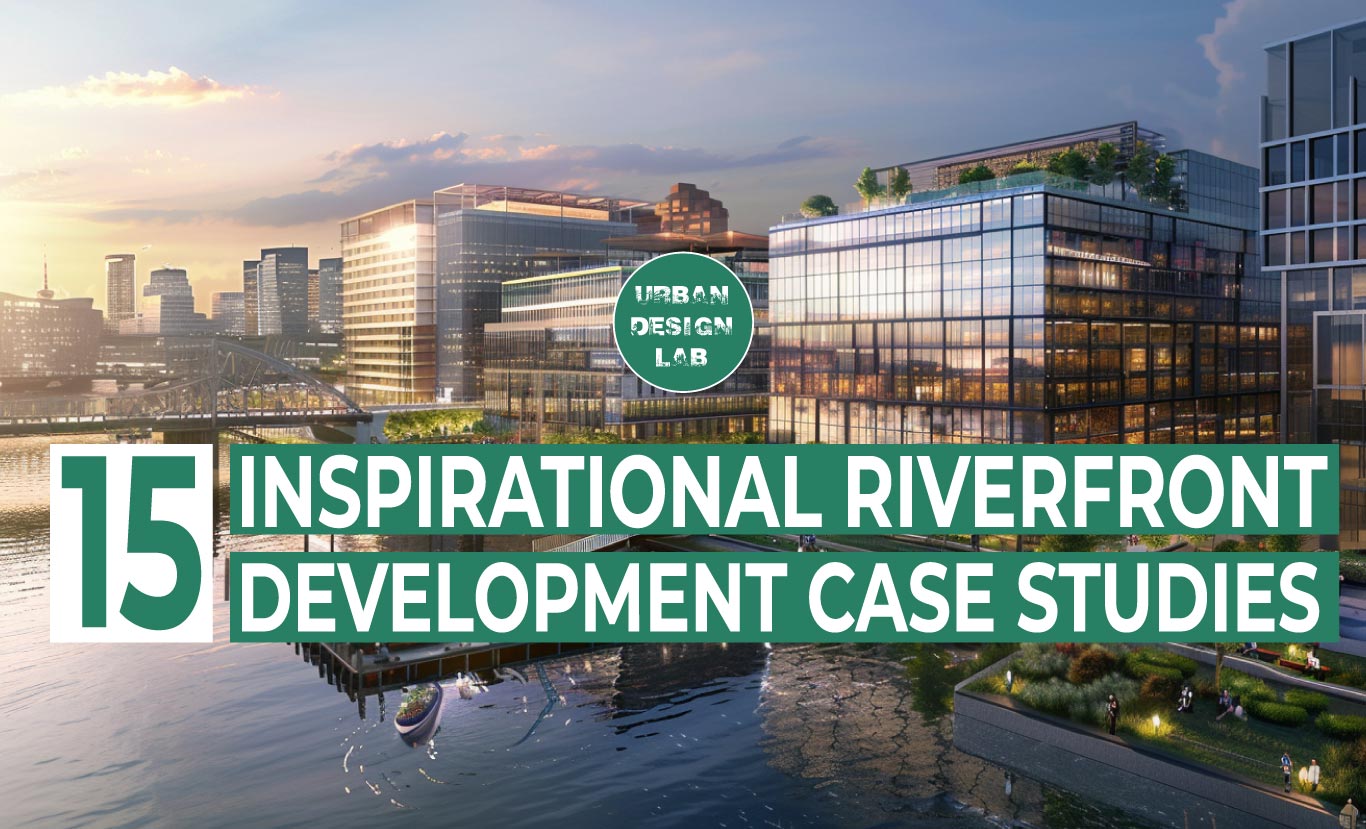
15 Inspirational Riverfront Development Case Studies

Future Trends in Architecture Thesis
- Article Posted: March 24, 2024
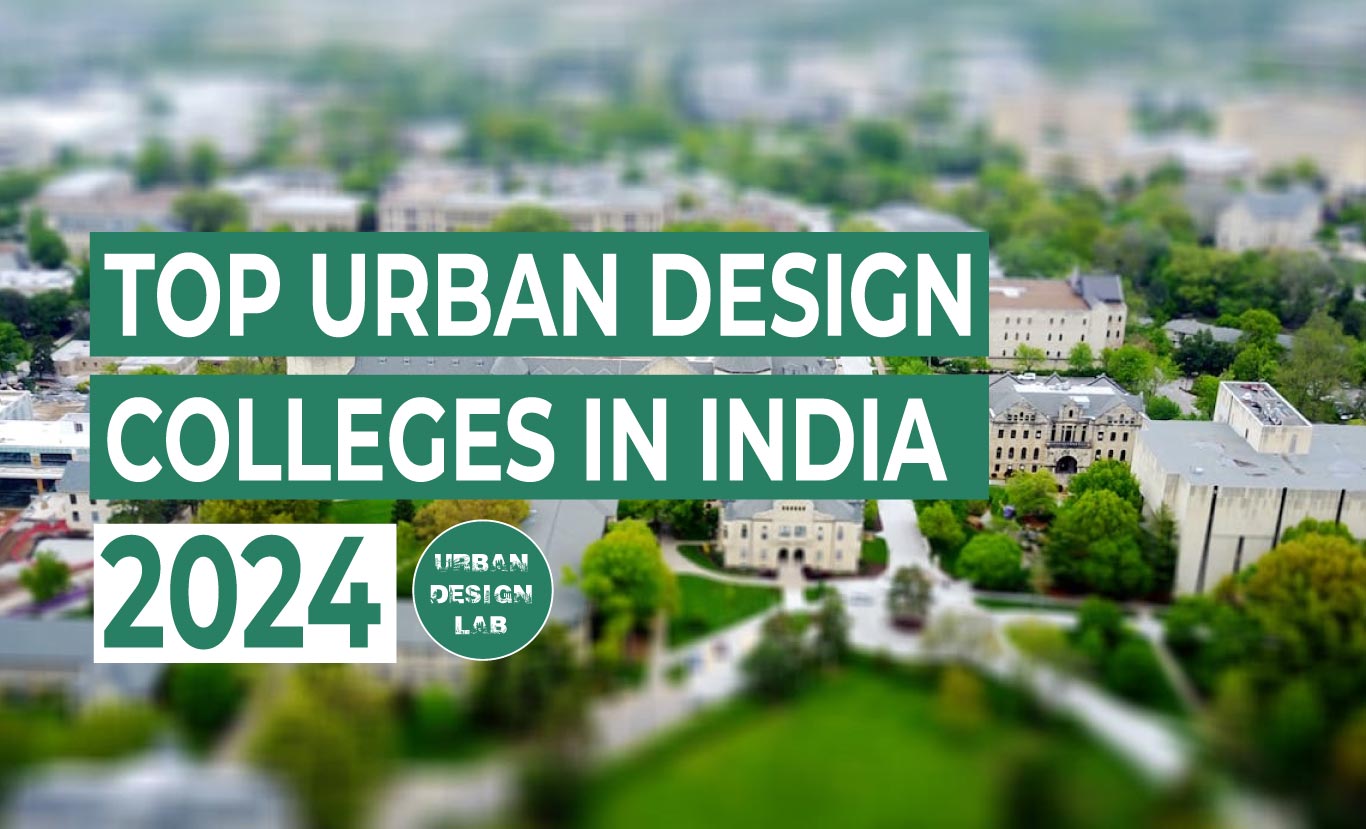
Top Urban Design Colleges in India – 2024
- Article Posted: March 18, 2024
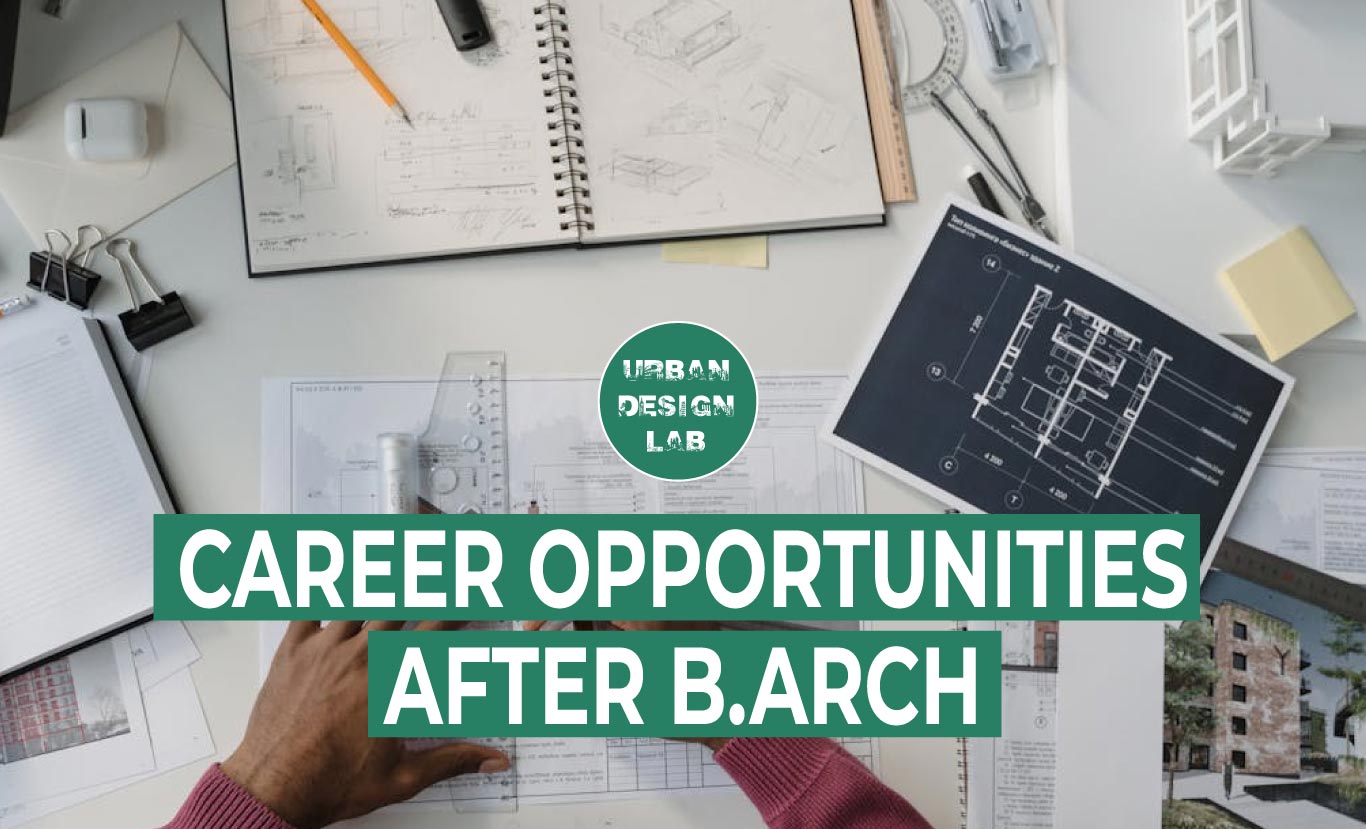
Career Opportunities After B.Arch
- Article Posted: March 17, 2024
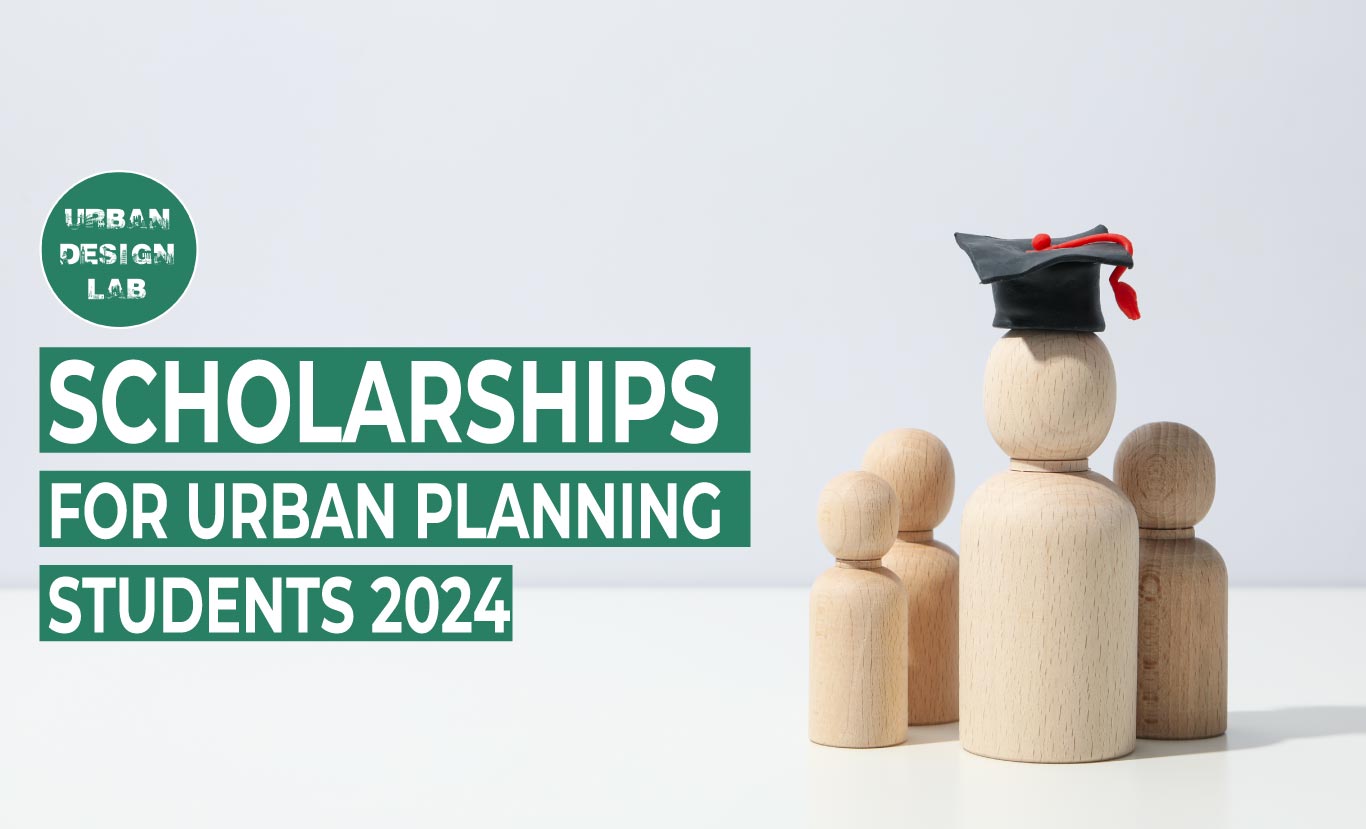
Scholarships for Urban Planning Students 2024
- Article Posted: February 28, 2024
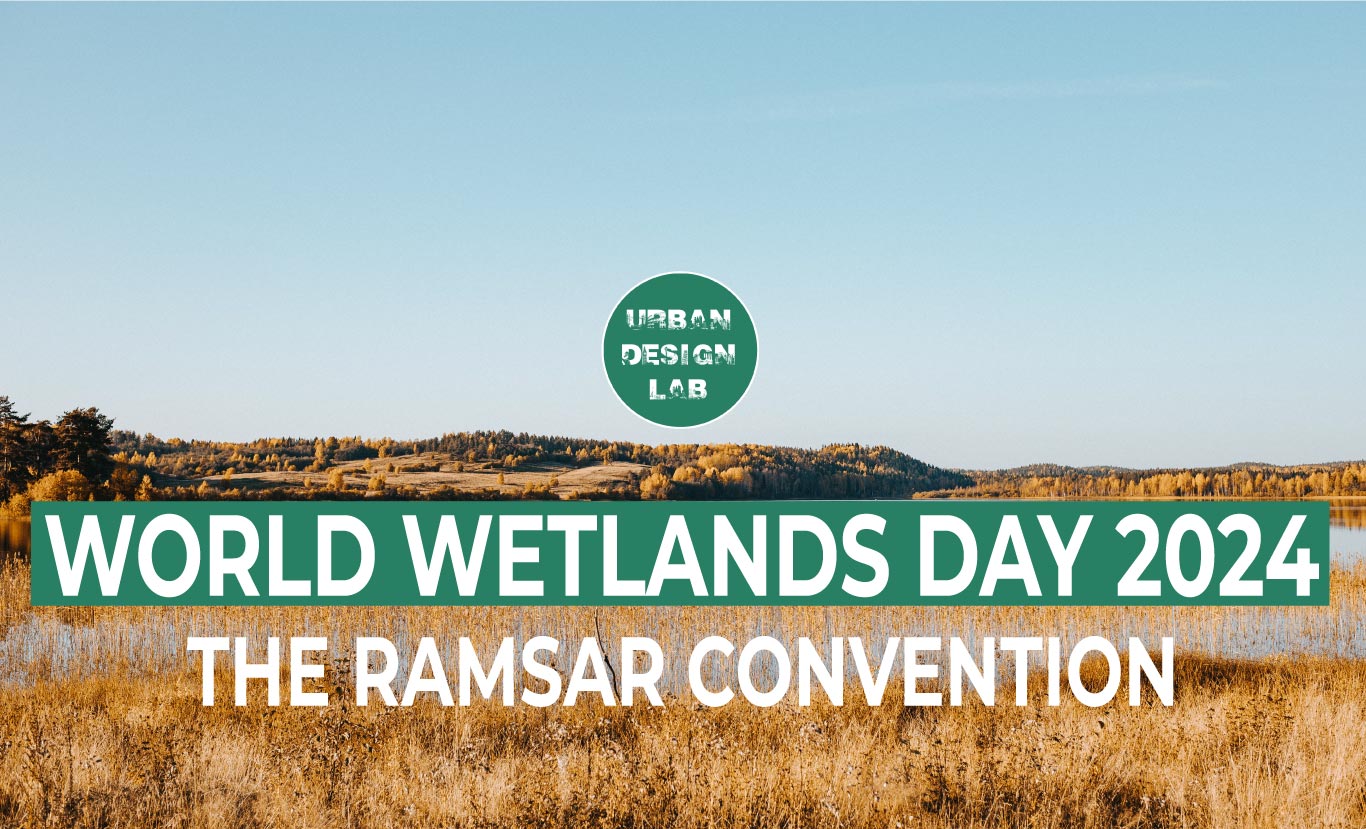
World Wetlands Day 2024 | The Ramsar Convention
- Article Posted: February 3, 2024

Strategies for Green Urban Mobility
- Article Posted: January 27, 2024
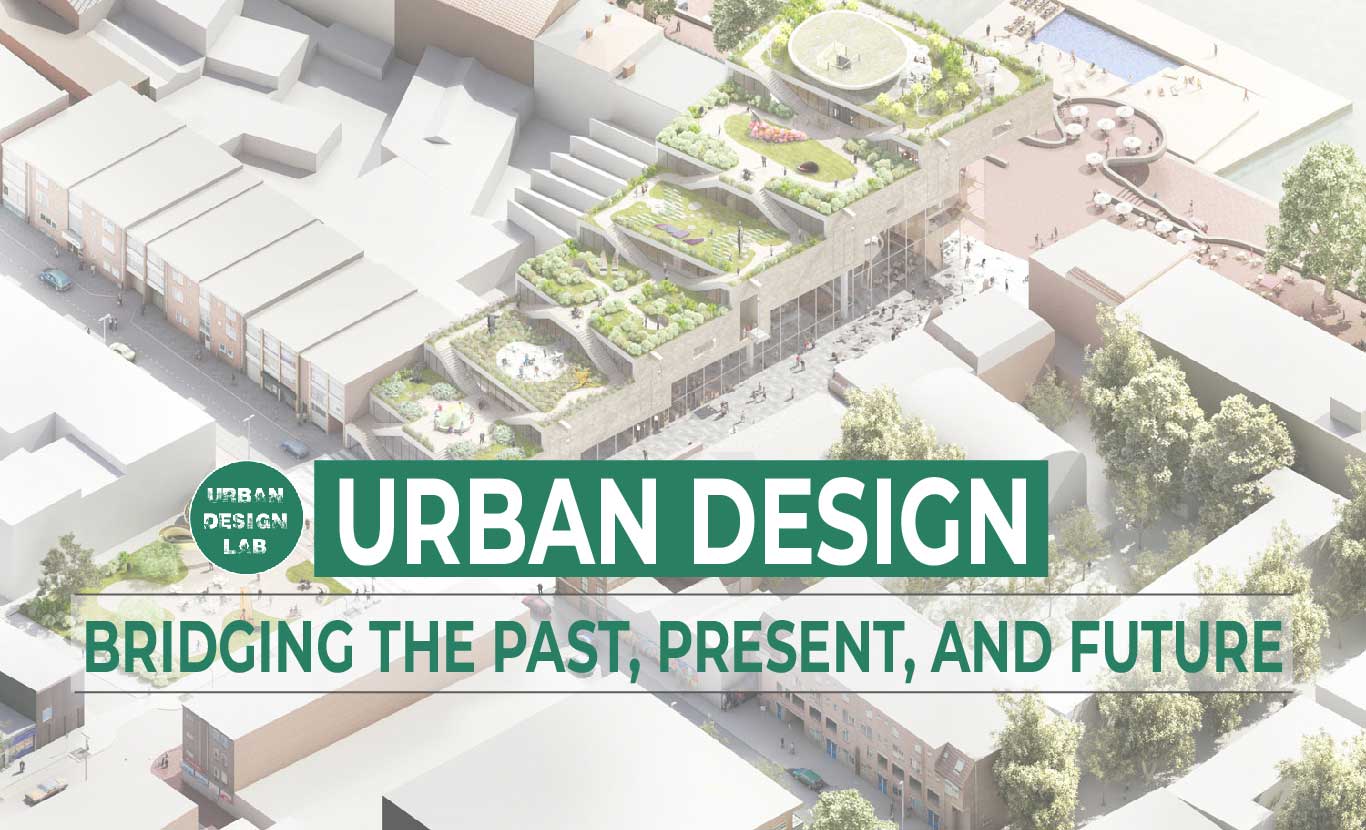
Urban Design: Bridging the Past, Present, and Future
- Article Posted: January 26, 2024
Sign up for our Newsletter
“Let’s explore the new avenues of Urban environment together “
© 2019 UDL Education Pvt. Ltd. All Rights Reserved.

Privacy Overview
A comprehensive guide (free e-book).
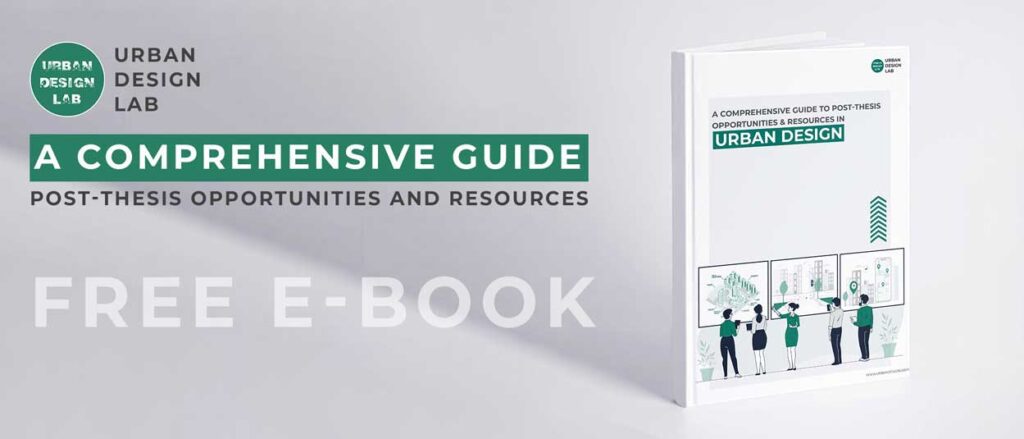
- Directories
- E-Newspapers
- Images & Drawings
- Pacific Coast Architecture Database
- Writing on Urban Design and Planning
- Bicycle Transportation
- Government Organizations
- Mass Transit
- New Urbanism
- Professional Development
- Urban Ecology & Sustainability
- Start Your Research
- Research Guides
- University of Washington Libraries
- Library Guides
- UW Libraries
- Urban Design and Planning (UrDP)
- Research Topics
Urban Design and Planning (UrDP): Research Topics
Urban design and planning.

Image: Bogue Plan Map - Rapid Transit & Boulevards Author: Virgil G. Bogue License: Public Domain Date: 11/1911
- Governmental Organizations
- Urban Ecology & Sustainability
- << Previous: Writing on Urban Design and Planning
- Next: Bicycle Transportation >>
- Last Updated: Apr 9, 2024 1:09 PM
- URL: https://guides.lib.uw.edu/research/urbanDesign
Articles on Urban development
Displaying 1 - 20 of 198 articles.
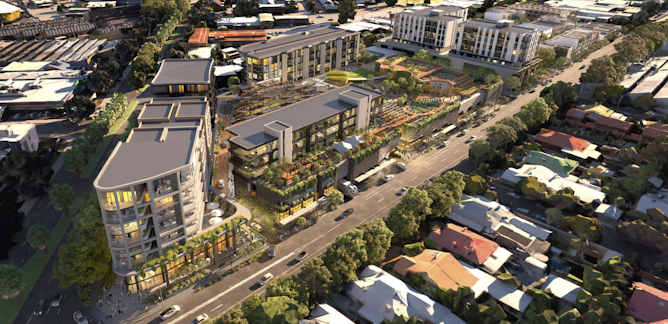
City planners love infill development. So why are cities struggling with it, and how can they do better?
Neil G Sipe , The University of Queensland

Annual rankings don’t always tell us what it’s really like to live in a city
Georges A. Tanguay , Université du Québec à Montréal (UQAM) and Juste Rajaonson , Université du Québec à Montréal (UQAM)

The YIMBY movement is spreading around the world. What does it mean for Australia’s housing crisis?
Alistair Sisson , Macquarie University

How the retailing contest between CBDs, shopping centres and online will reshape our cities
Paul J. Maginn , The University of Western Australia and Louise Grimmer , University of Tasmania
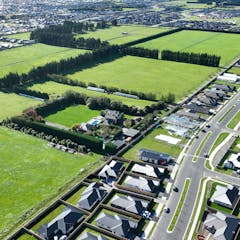
Growing NZ cities eat up fertile land – but housing and food production can co-exist
Shannon Davis , Lincoln University, New Zealand
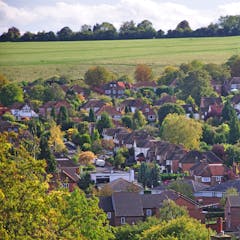
Building on the greenbelt is central to solving the housing crisis – just look at how the edges of cities have changed
Cameron McEwan , Northumbria University, Newcastle and Andreas Lechner , Graz University of Technology

‘La France moche’: French artists rally to celebrate the country’s much-snubbed commercial zones
Elodie Bitsindou , Sorbonne Université
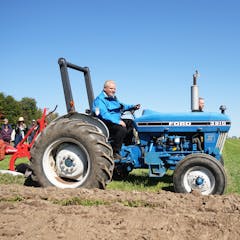
Ontario’s Greenbelt is safe for now, but will the scandal alter Doug Ford’s course?
Mark Winfield , York University, Canada

Traditional downtowns are dead or dying in many US cities − what’s next for these zones?
John Rennie Short , University of Maryland, Baltimore County
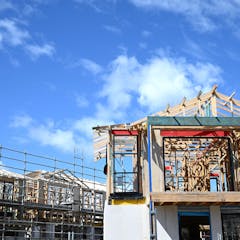
Governments are pouring money into housing but materials, land and labour are still in short supply
Flavio Macau , Edith Cowan University and Deepa Bannigidadmath , Edith Cowan University

Asymmetrical bridges, timber towers and a repurposed gas platform: awards hail 2023’s best structures
Barbara Rossi , University of Oxford
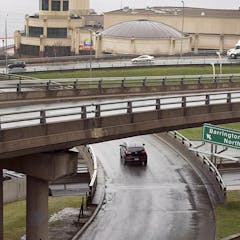
Halifax’s new development projects must not repeat the wrongs done to racialized communities
Christine Hempel , Toronto Metropolitan University

To reclaim downtowns from traffic, require developers to offer strategies for cutting car use
Chris McCahill , University of Wisconsin-Madison
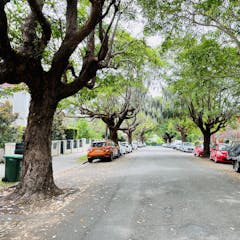
NIMBYism in Sydney is leading to racist outcomes
Awais Piracha , Western Sydney University and George Greiss , Western Sydney University
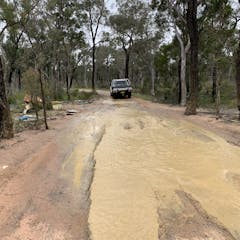
Why is it so hard for Local Aboriginal Land Councils to develop land when the public needs are huge?
Naama Blatman , Western Sydney University
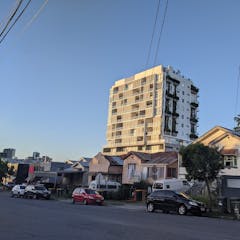
Houses and high-rises (and nothing in between): why land zoning hasn’t been effective for improving urban density
Rachel Gallagher , The University of Queensland and Yan Liu , The University of Queensland
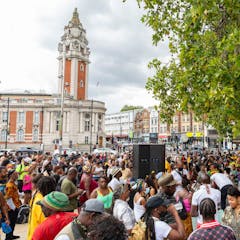
Reclaiming Windrush Square: why urban development projects need to heed local voices
Henry Staples , University of Sheffield

A sustainable Australia depends on what happens in our cities – that’s why we need a national urban policy
Robert Freestone , UNSW Sydney ; Bill Randolph , UNSW Sydney , and Wendy Steele , RMIT University
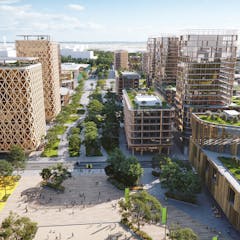
Bold and innovative planning is delivering Australia’s newest city. But it will be hot – and can we ditch the colonial name?
Tooran Alizadeh , University of Sydney ; Glen Searle , University of Sydney , and Rebecca Clements , University of Sydney
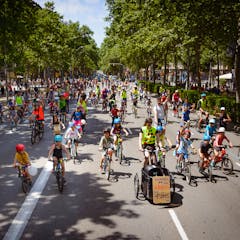
Return of the child-friendly city? How social movements are changing European urban areas
Jonne Silonsaari , University of Amsterdam ; Gemma Simón i Mas , Universitat Autònoma de Barcelona ; Jordi Honey-Rosés , Universitat Autònoma de Barcelona , and Marco te Brömmelstroet , University of Amsterdam
Related Topics
- Better Cities
- Cities & Policy
- City planning
- Climate change
- Gentrification
- Urban design
- Urban planning
- Urban policy
Top contributors
Head of Urbanism and Associate Professor of Urban Studies, School of Architecture, Design and Planning, University of Sydney
Macquarie University Research Fellow, School of Social Sciences, Macquarie University
Professor of Sustainability, Curtin University
Professor of Architecture and Urban Design, The University of Melbourne
Associate Professor in Urban Infrastructure and Policy, UCL
Visiting Assistant Professor, University of Arizona
Professor of Global Urban Politics and Director, Melbourne Centre for Cities, The University of Melbourne
PhD Candidate, School of Social Sciences, University of Tasmania, and Senior Research Consultant, Institute for Sustainable Futures, University of Technology Sydney
Engaged Research Fellow, Institute for Culture and Society, Western Sydney University
Professor of Geography, University of Wollongong
Senior Lecturer in Urbanism, University of Sydney
Emeritus Professor, University of Sydney
Director, Melbourne Sustainable Society Institute, The University of Melbourne
Professor of Environmental Management, The University of Queensland
Interim Director, Urban Futures Enabling Impact Platform, RMIT University
- X (Twitter)
- Unfollow topic Follow topic
Search NORC
Enter Search Value
Communities & Urban Development
Building socially cohesive, economically vibrant communities and driving sustainable urban growth are concerns for developing and developed nations alike. Data gathered and interpreted by NORC researchers help governments and NGOs around the world enhance their community development policies and initiatives.
Working with a variety of partners, NORC has examined the social characteristics that helped or hindered neighborhood recovery after Hurricane Sandy; assessed housing needs in the tribal areas of the United States; and studied the impact that social mobility, economic opportunity, and other factors have on early childhood development. Internationally, NORC has also conducted impact assessments on rural and urban housing initiatives and other community development programs in Rwanda, Azerbaijan, and other countries.
Get in Touch
Have a project in mind? Fill out our quick start form to get a quote.
Departments, Centers & Programs
- The Associated Press-NORC Center for Public Affairs Research
- Center for the Study of Politics & Society
Research Divisions
- NORC Public Affairs
Communities & Urban Development Experts
Carrie e. markovitz.

Tanya Treptow

Highlighted Projects
Integrating environmental barriers into maps of food access.

Calculating the impact of hyperlocal climate and other environmental factors on ‘Real Feel’ food access
Resilience in the Wake of Superstorm Sandy
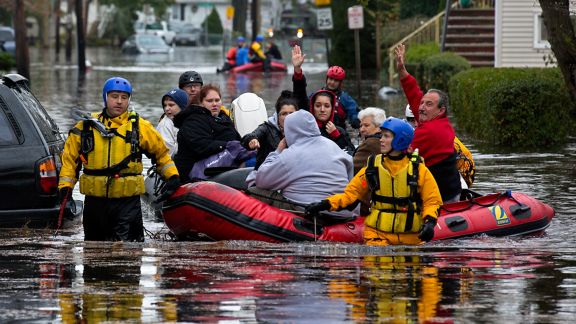
AP-NORC Center surveyed Americans about disaster preparation and recovery after the 2012 disaster
Making Connections Research Scholars

Providing analytical opportunities for early-career scholars and researchers of color
Want to start project?

- Understanding Poverty
- Urban Development
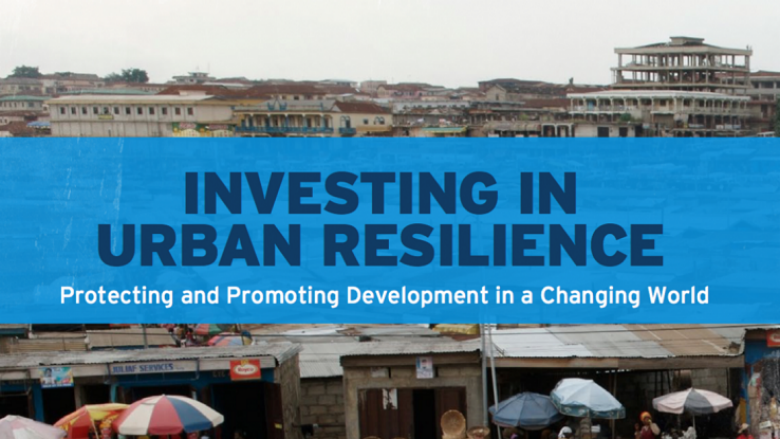
Publication

What a Waste: A Global Review of Solid Waste Management
This study projects a 70% global increase in urban solid waste, with the annual cost rising from $205 billion a year to $375 billion a year by 2025. Developing countries will face the greatest challenge.
You have clicked on a link to a page that is not part of the beta version of the new worldbank.org. Before you leave, we’d love to get your feedback on your experience while you were here. Will you take two minutes to complete a brief survey that will help us to improve our website?
Feedback Survey
Thank you for agreeing to provide feedback on the new version of worldbank.org; your response will help us to improve our website.
Thank you for participating in this survey! Your feedback is very helpful to us as we work to improve the site functionality on worldbank.org.
94 Urban Planning Essay Topic Ideas & Examples
🏆 best urban planning topic ideas & essay examples, 📌 most interesting urban planning topics to write about, 👍 good research topics about urban planning, ❓ urban planning research questions.
- Gentrification: Urban Planning in Canada It is important to find a way of addressing the concerns that stakeholders have to eliminate the current controversies in the new approach to urban planning.
- Ethics of Data Misuse in Urban Planning Every member of the AICP is responsible to the people who give their data and are the actual consumers of the projects that the planners initiate. We will write a custom essay specifically for you by our professional experts 808 writers online Learn More
- Urban Planning Problems in New Delhi The growth of urban centers is usually a sign of economic stability and the political maturity of a country. The size of the population in Delhi is the driver behind its environmental problems.
- Issues Affecting Urban Planning in “City of God” Film The author of the movie draws the reader’s attention to some of the factors that affect urban planning. Therefore, this call for a combined effort to see that each issues is addressed fully in order […]
- Professional Urban Planning and Practices Reviewing the knowledge, skills, and components of the curriculum to ensure that they address the planning needs of the evolving world is a great example of an approach that focuses on the future of professional […]
- Urban Planning and Zoning Categories The goal of zoning is to ensure that the different types of land use are separated and that the uses are compatible with one another. Zoning categories are very important because they regulate the use […]
- Development and Theories in Urban Planning Mainly, conceptual planning and the rational-comprehensive planning theories are frameworks builders should adopt to cater to diverse issues and fulfil their responsibility to the earth as stipulated in the bible.
- Urban Planning Code of Ethics Ethics can help planners foster an integral, moral, and trustworthy environment in the planning process and make socially acceptable approaches/ For instance, explaining to stakeholders existing and anticipated social problems that may occur in the […]
- Governmental Relations in Urban Planning This verse highlights the importance of having a clear and meaningful vision for the future, which is reflected in the city’s approach to planning.
- Urban Planning Development and Theories For example, during the period of city creation in the 17th century in Europe, urban planning, the creation of architectural ensembles and public spaces, and the design of local facilities have long been actively used.
- The Impact of the Urban Planning Housing, neighborhoods, and real estate markets are primarily determined by urban planning, policies, and practices, the failures of which are the causes for the existing housing problems, but a healthy neighborhoods approach can be a […]
- Internet, Architecture, and Urban Planning: William J. Mitchell’s “City of Bits” Professor William Mitchell, a professor of ‘Architecture and Media Arts and Science in the Massachusetts Institute of Technology’, has written the book called “City of Bits”, which deals with the relationship among internet, architecture and […]
- The City Beautiful Movement and Urban Planning This quickly led to conflict with public interest and led to the formation of city planning commissions, intended to account for public input in city planning.
- Michael Apted’s “Thunderheart”: Urban Planning His role was to investigate the circumstances that led to the murder of a Native American who was a follower of the American Indian Movement.
- Urban Planning Optimization and Homelessness Therefore, the urban planning should be revised regarding those private providers’ interests: the risk of failure for future city development would strongly increase in the areas of possible economic concern.
- Optimizing Urban Planning to Address Homelessness Researchers use sensitivity analysis to assess the contribution of single preference parameters to the uncertainty of the ranking of alternatives. In the same manner, authorities can create a database consisting of all the shelters for […]
- Internet of Things in a Work of an Urban Planning Specialist Due to the fact that urban planning ultimately targets the experiences of urban dwellers, the internet of things and is vital to consider for a city designer.
- Urban Planning: City Summary Grayslake, IL It is located to the north of Chicago’s downtown approximately 64km away, and the west of Lake Michigan approximately 23km away, and to the south of Wisconsin border approximately 24km away.
- Urban Planning and Redevelopment Urban planning is a discipline that explores aspects of the built and environment of communities and municipalities. The Harrapan civilizations, the Mesopotamia, Ur, and cities of the Indus valley in India are among the earliest […]
- Urban Planning: Transit-Oriented Development Lynch defines efficiency in terms of cost: the less costly the creation and the maintenance of a system is, the more efficient it can be considered.
- Urban Planning: “The Great Good Place” by Ray Oldenburg The author wrote the book in 1999 in an attempt to show the significance of casual and open gathering places, which he referred to as “third places”.
- Sustainable Urban Planning in West Loop Area Due to the global and ubiquitous nature of environmental challenges and the adverse effects of the pollution of the atmosphere and oceans, deforestation, and the destruction of sea beds and ecosystems, the need for sustainable […]
- Urban Planning and Growing Population Through the use of urban planning, it is possible to design, control, and manage the layout of the urban and suburban areas.
- Urban Planning Issues in the “Boyz n the Hood” Film Boyz n the Hood reveals the problem of the suburbanization of the society and non-functional urban environment, which is typical of the areas similar to the one shown in the movie.
- Green Communities in Urban Planning Under such circumstances, much attention is paid to green communities as the most appropriate form of living in balance with nature one of the examples of such a green community in Copenhagen.
- Urban Planning Issues About the Movie “City of God” This is where he also discovers corruption and collaboration in between the Kenyan government, the pharmaceutical corporation, and his fellow British colleagues. The main cause for lack of social mobility is limited of education.
- Urban Planning Issues About the Movie “Julie and Julia” Paris is portrayed as superior to the New York City and Julia’s recipes seem to influence the way the residents of Paris as well as the New Yorkers eat.
- “Gone Baby Gone” Movie: Urban Planning Issues The residents of the area are also suspicious that the police are not honest in their dealings and this makes it difficult for the two detectives to resolve Amanda’s abduction.
- Urban Planning Aspects: “Before Sunset” Urban planning is defined as the process of controlling the utilization of design and land of an urban development, with the aim of ensuring that communities and settlements in the urban areas are orderly developed.
- Canadian Urban Planning, Housing, and Women
- When Urban Planning Doctrine Meets Low Density Countryside
- Urban Planning, Modern and Postmodern Design
- Project and Urban Planning at the University of California
- European Urban Planning Systems: Diversity and Convergence
- Smart Methods for Environmental Externalities: Urban Planning, Environmental Health and Hygiene in the Netherlands
- Geographic Information System and Its Application in Urban Planning and Environment
- Environmental Management and Urban Planning Practices
- Urban Planning and Information and Communication Technology: Ideas and Facts
- Ecological Urban Planning and Design: A Systematic Literature Review
- The City Beautiful Movement: The Urban Planning Practices
- Urban Planning Management System in Los Angeles: An Overview
- Urban Planning and the Geographic Information System
- Kevin Lynch and His Contribution to the Urban Planning Theory
- Urban Planning: The History of Cycling Infrastructure
- Handbook for Gender-Inclusive Urban Planning and Design
- Biodiversity and Green Infrastructure in Urban Planning
- Women, Housing and Urban Planning in Canada
- Urban Planning Community and Economic Development
- Multitype Green-Space Modeling for Urban Planning Using GA and GIS
- Social Mix and the City: Challenging the Mixed Communities Consensus in Housing and Urban Planning Policies
- Urban Planning and Its Role of the Public
- Urban Planning Critical Issues on Urban Development
- Environmental Holism and the Biophilic Hypothesis in Urban Planning
- The Similarities and Differences in Urban Planning in Italy and The Netherlands
- Classifying and Valuing Ecosystem Services for Urban Planning
- Urban Planning and Development Theories of Paul Peterson
- How The Urban Planning and Development of Jane Jacobs
- Urban Planning and Railway Corridors: Resolving Regulatory Dysfunction in Australia
- Urban Heat Island Adaptation Through Urban Planning and Design: The Struggle of the City of Los Angeles
- Urban Planning and the Location of Environmental Amenities
- Urban Planning with the Aid of Factor Analysis Approach: The Case of Isfahan Municipality
- Urban Planning, Architecture, and the Contributions of Rome
- Washington, D.C.: The First Example of Urban Planning
- Urban Planning Policy for Realizing Public Objectives Through Private Development in Seoul
- Urban Planning for the New Buildings
- Scientific Reasoning and Methods in Urban Planning
- Risk, Uncertainty, and Spatial Distinction: A Study of Urban Planning in Stockholm
- Paris and London: Late 19th Century Urban Planning
- Overcrowding and Urban Planning in Victorian London
- What Does an Urban Planning Do?
- Why Urban Planning Is Important?
- What Does Urban Planning Focus On?
- What Are the Goals of Urban Planning?
- What Is Urban Planning in Simple Words?
- What Are the Types of Urban Planning?
- How Does Urban Planning Affect the Environment?
- Which City Has the Best Urban Planning?
- Is Urban Planning Similar to Civil Engineering?
- What Is the Difference Between Urban Design and Urban Planning?
- What Is an Example of Urban Planning?
- What Are the Factors of Urban Planning?
- How Can Urban Planning Be Improved?
- Which Software Is Used for Urban Planning?
- Is Urban Planning and Architecture Same?
- What Are the Challenges of Urban Planning?
- How Urban Planning Affects Economy?
- What Is the Most Important Issue in Urban Planning?
- How Does Urban Planning Affect Quality of Life?
- How Is Urban Planning Sustainable?
- What Influences Urban Planning?
- How Does Urban Planning Relate to Architecture?
- What Are the Reasons for Urban Planning Failure?
- What Is Level of Urban Planning?
- Chicago (A-D)
- Chicago (N-B)
IvyPanda. (2024, March 2). 94 Urban Planning Essay Topic Ideas & Examples. https://ivypanda.com/essays/topic/urban-planning-essay-topics/
"94 Urban Planning Essay Topic Ideas & Examples." IvyPanda , 2 Mar. 2024, ivypanda.com/essays/topic/urban-planning-essay-topics/.
IvyPanda . (2024) '94 Urban Planning Essay Topic Ideas & Examples'. 2 March.
IvyPanda . 2024. "94 Urban Planning Essay Topic Ideas & Examples." March 2, 2024. https://ivypanda.com/essays/topic/urban-planning-essay-topics/.
1. IvyPanda . "94 Urban Planning Essay Topic Ideas & Examples." March 2, 2024. https://ivypanda.com/essays/topic/urban-planning-essay-topics/.
Bibliography
IvyPanda . "94 Urban Planning Essay Topic Ideas & Examples." March 2, 2024. https://ivypanda.com/essays/topic/urban-planning-essay-topics/.
- Urbanization Ideas
- Gentrification Paper Topics
- Economic Topics
- Evolution Topics
- Industrial Revolution Research Ideas
- Demography Paper Topics
- Kindergarten Essay Topics
- Overpopulation Topics
- Bicycle Research Topics
- Disaster Essay Titles
- Evacuation Essay Topics
- Growth Strategy Titles
- Wind Energy Essay Topics
- Deforestation Research Ideas
- Culture Topics
An official website of the United States government
The .gov means it’s official. Federal government websites often end in .gov or .mil. Before sharing sensitive information, make sure you’re on a federal government site.
The site is secure. The https:// ensures that you are connecting to the official website and that any information you provide is encrypted and transmitted securely.
- Publications
- Account settings
Preview improvements coming to the PMC website in October 2024. Learn More or Try it out now .
- Advanced Search
- Journal List
- Int J Environ Res Public Health

Selected Research Issues of Urban Public Health
Associated data.
Not applicable.
Health is created within the urban settings of people’s everyday lives. In this paper we define Urban Public Health and compile existing evidence regarding the spatial component of health and disease in urban environments. Although there is already a substantial body of single evidence on the links between urban environments and human health, focus is mostly on individual health behaviors. We look at Urban Public Health through a structural lens that addresses health conditions beyond individual health behaviors and identify not only health risks but also health resources associated with urban structures. Based on existing conceptual frameworks, we structured evidence in the following categories: (i) build and natural environment, (ii) social environment, (iii) governance and urban development. We focused our search to review articles and reviews of reviews for each of the keywords via database PubMed, Cochrane, and Google Scholar in order to cover the range of issues in urban environments. Our results show that linking findings from different disciplines and developing spatial thinking can overcome existing single evidence and make other correlations visible. Further research should use interdisciplinary approaches and focus on health resources and the transformation of urban structures rather than merely on health risks and behavior.
1. Introduction
Urban Public Health gains in importance due to increasing health challenges of the ever-growing urban population. Many authors agree that we have entered the ‘urban age’ [ 1 , 2 , 3 , 4 ] despite the lack of consensus over the definition of urban areas [ 2 ]. Urban areas are the places and arenas of important societal changes and struggles around healthy environment, climate change, social justice, or the future of work and mobility. Urbanisation is coupled with different challenges related to Urban Public Health on the Global North (noncommunicable diseases and urban regeneration) and on the Global South (communicable diseases, urban expansion, and unfavourable living conditions) [ 4 ]. Multiple interdependencies on the global level influence cities and neighbourhoods that are local and context depended, but also local actions and activities may cause global crisis. Recognising the important role of urban setting, in the last decades, there have been calls to transform our cities into sustainable, healthy, and just places for global population [ 5 , 6 ]. Meanwhile, good health and wellbeing is one of the sustainable development goals (SDG3) [ 6 ], a cross-cutting issue of all other SDGs [ 7 ], of the New Urban Agenda [ 8 ], and a core issue in a recent publication from the UN-Habitat and World Health Organisation (WHO) on good planning of urban environments [ 9 ].
In view of global urbanization trends, the question how to shape urban environments should be closely linked to the health of the urban population [ 9 ]. Urban planning and governance have great impact on the distribution of health-promoting resources and on accumulation of risks that affect health of different population groups [ 10 , 11 , 12 , 13 , 14 , 15 , 16 , 17 ] and contribute to both communicable and non-communicable diseases [ 18 ]. The importance of urban environments for health has been known since the ancient Greek city-states around 500 BC [ 19 , 20 ]. However, during the 20th century, health and disease were explored and practiced in a predominantly biomedical and individual-oriented approach. Lastly, with the Ottawa Charter (1986), a paradigm shift was initiated from an individual-oriented to a structural perspective emphasizing the importance of everyday settings in terms of health promotion [ 21 ]. Moreover, the Ottawa Charter shifted the focus from the causes of disease to a new understanding of health as resource and health promoting factor. The Charter emphasized for the first time that the responsibility for health also lies within many sectors besides health.
Meanwhile it is recognized that the urban living environment is not a self-contained, homogenous entity, but a complex system characterized by a number of different urban structures (e.g., educational, economic, mobility, political structures) that have their own dynamics and interact with each other in a complex urban grid. Thus, improving health and preventing disease in urban environments require genuinely joint efforts of different disciplines and sectors [ 22 ]. As an interdisciplinary research field, Urban Public Health attempts to address this need. The main aim of Urban Public Health is to explore the dimensions of health and disease in and by urban structures [ 15 ] (pp. 342–343). The international scientific debate, which operates primarily with the term Urban Health has its theoretical and disciplinary roots mainly in human ecology or medicine [ 10 , 23 , 24 ]. In contrast, we understand Urban Public Health explicitly as part of public health. This allows us to build on existing and well-established constructs and methods of public health, which include epidemiological tools. We extend the public health approach by linking it to the specific features of urban structures, paying particular attention to spatial relationships.
Addressing the spatial component allows insights into the distribution and constitution of health resources and risk factors in or by urban structures. The underlying question is how cities can be designed and (re)developed to create urban structures as health resources. Although there is already a substantial body of single evidence on the links between urban environments and human health, less is known regarding the specific connection between public health and place-based associations. We want to address this gap and explore in this paper the extent to which evidence on health effects of different urban structures contribute to Urban Public Health field by linking spatial approaches and public health.
Moreover, a conceptual overview of this fairly new field of Urban Public Health and its open research questions is still missing. Accordingly, the aim of this paper is to review current evidence regarding the spatial component of health and disease in urban structures and to identify research issues, with particular attention to the links between public health and spatial perspectives from other disciplines such as urban planning, geography, social, and political science. In particular, our approach is not limited to looking at health outcomes and exposures, but rather we ask through a structural lens about the living conditions in urban environments beyond individual health behaviors. It is not within the scope of this article to comprehensively review findings for the entire field of Urban Public Health, but rather to present selected evidence from the view of the professional backgrounds of the authors, which is political science, urban planning, public health, and epidemiology. The aim is to provide a narrative towards new insights and possible research issues that can contribute to better understanding of the Urban Public Health challenges and potentials.
Categorization of Urban Public Health Issues
The complexity of interactions between urban environments and human health [ 25 ] is already conceptualized in several frameworks. Well-known ones are the Conceptual Framework for Urban Health [ 14 ] from Galea et al., the Health Map of Barton and Grant [ 11 ], and the illustration of Health Problems in different urban contexts from Rydin et al. [ 17 ]. A more recent example is the Conceptual Model of Key Drivers of Urban Health, Equity, and Sustainability [ 10 ]. They all describe, inter alia, how a variety of urban structures influences and shapes health and disease.
Based on these frameworks, we organized our review by selecting and categorizing Urban Public Health issues. We used three main categories: (i) build and natural environment , (ii) social environment , and (iii) governance and urban development . The first two categories include subcategories as listed in Table 1 . Since the transformation of urban environments into sustainable places and the shaping of health resources is to a considerable extent a matter of political negotiation processes, we defined the third category governance and urban development. This category goes across the first two categories. We compiled knowledge describing political structures that are shaping and influencing the built, natural, and social environments.
Selected categories of Urban Public Health.
The built and natural environment describes the physical-material level of urban structures as material expressions of human activity and societal constitution. Research here is concerned with relations between physical space and health. The social environment describes the characteristics and properties of communities in and by urban structures, the prevailing social norms, processes of exchange and interaction, and their relation to health. Aspects of the social and physical environment interact with each other and are interdependent [ 15 ]. How these environments interact with each other and how they are shaped largely takes place on the basis of prevailing governance structures.
This paper is divided into five sections. The next section introduces the methods we used to create a compilation, select papers, and analyze results. We then critically review and describe the selected categories of Urban Public Health. This is followed by the discussion and more detailed examination of existing gaps. We conclude with the most critical aspects and recommendations for future research.
2. Materials and Methods
In order to narrow down the project we proceeded in three steps. In step 1, we outlined the conceptual approach for our review by using frameworks addressing urban space as a contributing factor for health [ 10 , 11 , 12 , 13 , 14 , 15 , 16 , 17 ]. In step 2, we categorized the main topics of Urban Public Health, and used them to assign and compile the articles in step 3. Between February and May 2021 we screened the literature by performing a snowball approach in the databases PubMed, Cochrane, and Google Scholar (a tabular overview of the main literature for analysis can be found in the Appendix A , Table A1 ). As a restriction, the language filter was set to English. The methodical approach and search strategy of the narrative review is also illustrated in Figure 1 . Instead of reviewing singular results of studies on single public health aspects of urban environments, we focused our search to existing review articles and reviews of reviews for each of the used keywords in order to cover the range of issues in urban environments. The study area is focused on developed countries. We used the main keywords “Urban”, “Public Health”, and “Urban Health”. The search was refined by varying terms and combinations using predefined specific keywords ( Figure 2 ).

Methodical approach and search strategy for the narrative review.

Keywords of database research and research strategy.
The results were filtered by the first author by screening article titles and abstracts to determine: (a) if they address the spatial component of health risks and resources of urban structures, and (b) if they considered the link between public health and urban spaces. As a result of this screening, 183 papers were selected for a complete in-depth reading. According to the abovementioned criteria, (a) and (b), the final articles were selected for analysis. Finally, we included 120 papers for our review. As our approach is not a systematic review, we refrained from independent assessment of identified reviews. This approach has some limitations: important scientific contributions may be missed due to the selection criteria, e.g., (i) the selection of key words; (ii) the missing double check of excluded articles; (iii) by opting for English-language articles only. However, overall, this approach allowed us to explicitly address prevailing research strands and broad lines of Urban Public Health in order to identify existing research gaps at a more fundamental level.
3.1. Built and Natural Environment
3.1.1. overarching issues.
The built form of the city is a visible expression of the complex urban structures and socio-cultural characteristics of the heterogeneous population. Evidence shows that urban environment has direct and indirect impacts on physical and mental health [ 26 , 27 ]. However, urban environment is also conditioned by understandings of health in the sense of socio-cultural and historical specifications of health, which have constitutive effects on the built form [ 20 , 23 ]. Main characteristics of the built environment that are related to the population health are: buildings and density, land use, scale of streets and streets network, local facilities (services and retail), and public open spaces [ 11 , 14 ]. Mix of land uses, as well as design and maintenance of the urban environment, may support a healthy lifestyle and contribute to improved physical and mental health [ 28 ]. Design strategies determine the connection between morphological and functional features of urban environment that may provide opportunities for public health promotion and protection [ 29 ], but if inadequate, may also impair health. It has been well known that aspects such as high density, inadequate housing, and poor water supply and sanitation promote vector proliferation [ 30 ]. In the last decades, non-communicable diseases, such as cardiovascular diseases, diabetes, and mental health problems, are taking over the vector diseases [ 31 , 32 , 33 ] and can be associated with the build environment [ 34 , 35 ].
Although there is a general trend of increasing life expectancy [ 31 , 36 ] (p. 29), substantial inequalities in life expectancy between deprived and privileged neighborhoods still remain a challenge [ 37 ]. In particular, socioeconomic inequalities in relation to different components of the built environment have come to the fore. For example, Gelormino et al. [ 38 ] highlight key features of the built environment that shape the health of its inhabitants. However, these key features are unequally distributed and closely related to socioeconomic status [ 38 ]. Moreover, Dendup et al. [ 39 ] show in their review associations between development of Type 2 Diabetes mellitus and a health promoting urban environment, such as walkability, air quality, opportunities to easily purchase healthy foods and a range of facilities for physical activity. However, they acknowledge that there is still a lack of evidence on the influence of socioeconomic or demographic factors on the relationship between the environment and type 2 diabetes. Beyond diabetes, mixed land use, pedestrian and bicycle-friendly infrastructure, and street connectivity, as well as green and open spaces also have positive connotations with physical health [ 40 ].
Since the adoption of the SDGs in 2015, there has been a more explicit need to link Urban Public Health with the debate around the ecological crisis and sustainable development. Increased attention is being paid to the potential positive synergies between climate mitigation and adaptation measures and health resources [ 27 , 41 , 42 , 43 , 44 , 45 ]. Reduction of automotive traffic, initiatives for more bicycle- and pedestrian-friendly urban and transportation planning, and the importance of green and blue infrastructure for the improvement of air quality are further examples of such synergies [ 46 , 47 , 48 , 49 , 50 , 51 , 52 ]. Possible interventions for more urban green space, for example, are evaluated in terms of co-benefits for climate resilience and human health [ 49 ]. Specifically in deprived neighborhoods, interventions should enable access to affordable quality housing, various local facilities, quality open spaces and various mobility options [ 53 ]. The Corona pandemic has increased awareness of the importance of quality housing, public spaces, and urban greenery. Questions about the post-Corona city should be linked to questions about health promoting, sustainable, and climate-resilient urban transition [ 54 , 55 ] and reduction of inequalities.
3.1.2. Housing Conditions
Since the pioneering work of social medicine in the 19th century, the spread of communicable diseases has been greatly curbed in industrialized countries [ 56 , 57 , 58 ]. The catastrophic living and sanitary conditions at the beginning of industrialization [ 59 ] have been largely remedied. Meanwhile, following classical problems of hygiene and changing living conditions, other factors have come to the foreground. It is now evident, that physical factors such as temperature, air humidity and ventilation, and building materials contaminated with pollutants have an impact on respiratory health [ 60 , 61 ]. Parasites, fungi, and other pollutants have been known to cause asthma and allergies since the 1980s [ 62 , 63 , 64 , 65 ]. At the same time, indirect, intangible factors of housing also have an impact on health [ 66 , 67 ]: the home is perceived as a place of refuge, security, and privacy. It is a constant, a space of daily routines and control over one’s own life, an identity-forming place, possibly tied to social norms and status symbols [ 66 ]. The consequences of losing these factors have an impact on health, especially in extreme cases of homelessness [ 67 ]. Beyond the evidence that housing conditions are associated with various diseases, these are not simple cause-and-effect relationships, but a complex network of effects [ 68 ]. These effects not only translate into increased costs for the health care system, but may also create additional costs in education, crime management, or energy supply [ 68 ].
Thus, socioeconomic aspects and the social production of health inequalities are increasingly research issues [ 69 ] (pp. 360–361). Almost twenty years after the Ottawa Charter, Mary Shaw still states that despite the strong historical links between housing conditions and health, too much attention is still paid to factors of individual behavior rather than environmental and socioeconomic structures, and that increasing income inequality is inseparable from the problem of lack of affordable housing [ 67 ] (p. 414). Numerous factors of poor housing conditions are beyond the direct influence of those who are affected, so an effective solution to these problems must be located at a structural level.
Given the recognition that sociodemographic and socioeconomic conditions may have a stronger influence on poor housing than has long been assumed, there is a need for a fundamental revision of previous (primarily biomedical) established research approaches and methods that justify the link between health, urban planning, social and environmental policy [ 70 ]. This would also contribute to more optimal use of available resources [ 60 ].
3.1.3. Mobility and Transport Infrastructures
Urban mobility, connectivity and infrastructure are particularly intertwined with urban development and planning. The orientation of urban planning towards the car-friendly city since the 1960s has meanwhile revealed some downsides from the Urban Public Health perspective. The strong research focus since the 1990s on air pollution, (allergic) respiratory diseases, cancer risks, traffic accidents, and possible interventions are expressions of an emerging critique of urban car traffic [ 71 , 72 , 73 , 74 , 75 , 76 , 77 ]. The use of research findings from other disciplines is being embraced by Urban Public Health; in particular, the use of transportation and planning research to examine the impact of land use and design on public health [ 78 ]. This is due to the recognition that urban and traffic planning of the past decades has “engineered physical activity out of our daily lives.” [ 78 ] (p. 89) Urban Public Health perspectives increasingly advocate for urban planning that considers and promotes improving air quality, solving traffic congestion, and increasing overall quality of life in an integrated manner: “Health researchers need to become more involved in environmental research and policy studies, discussion, and decisions about environmental factors […]” [ 78 ] (p. 89).
In addition to reduced physical activity, high traffic volume and speeds reduce social contact and contact to goods and services [ 79 ]. Transportation infrastructure can connect or disconnect society and thus have impact on social integration, cohesion, and public health [ 79 ]. Street connectivity, mixed land use, access to public transportation, pedestrian and bicycle infrastructure, short distances, and traffic safety have been recommended to promote public health and are recognized as effective strategies in creating healthy and sustainable compact cities [ 35 , 80 , 81 , 82 , 83 , 84 ].
3.1.4. Digitalization
In addition to these facets of infrastructure issues, the most recent aspect is that of digitalization and its potentials and risks for public health and sustainable cities. A lot of potential is seen with regard to health care and the field of eHealth, e.g., smart hospital or an electronic patient record [ 85 ]. Digitalization can support the transition from cure to prevention, patients’ empowerment, or healthcare efficiency [ 86 ]. The smart city research offers possible synergies with Urban Public Health: sharing economy, electrification and automation, digitalization of different infrastructures can create co-benefits for public health in the form of reduced CO 2 emissions, new uses for freed-up space, increased traffic space [ 87 , 88 ]. However, technical or even economic barriers to access must be considered as potential disadvantages for more health equity [ 89 ]. The question arises about the effects associated with digitalization processes in regard to urban spaces and possible rebound or even negative effects, which must be taken into account. In particular, answering questions about equity, access, (resource-related) sustainability, and the benefits for society will fail without an interdisciplinary approach. Urban Public Health is therefore confronted with the large topic of digitalization as science as a whole. As a phenomenon of societal scale, digitalization is one of the megatrends of the 21st century and potentially generates a great need for research in almost all settings, urban spaces and areas of life.
3.1.5. Climate Change
The discourse around sustainability and the increasing pressure on cities to act, both as a main driver of climate change and as the main addressees for implementing counter-measures, are closely related to the health of the population. Starting with the first United Nations (UN) Climate Change Conference in Rio de Janeiro back in 1992, following the adoption of the UN Sustainable Development Goals (SDGs) in 2015, and the Paris Agreement of the Parties to the Framework Convention on Climate Change (UNFCCC)—cities have become major players in a large-scale socio-ecological transformation.
In the 1990s and early 2000s considerable evidence was generated on the urban environment and the negative health effects of air, water, and soil pollution, noise, exposure to bacteria, viruses, pesticides, and toxins [ 90 , 91 , 92 ]. Today, this research is integrated into the broader debate on climate change and ecological crisis, that is largely framed around the issues of mobility, resource, and energy transition [ 49 , 93 ]. Climate change favors the mitigation of invasive and potentially health-threatening species, such as Ambrosia in Central Europe or other potentially allergenic plants. Additionally, the predicted increase in vector-based diseases and zoonosis (malaria, dengue fever, rabies, coronaviruses, etc.) are threats to human health [ 94 ]. Both increasing urbanization and climate change will further intensify these risks [ 95 ]. The appropriate response to these problems raises questions regarding effective interventions: integrated vector management that likewise promotes environmental management, education and awareness, and inter-sectoral collaboration is considered effective and sustainable [ 96 , 97 , 98 ]. The systematic and regular monitoring of interventions, strategies with more political commitment and social mobilization, exchange of experience and data, pooling of resources, and cooperation would be crucial approaches [ 99 ]. Overall, research addressing the health-promoting components of (urban) nature increased, especially in the context of climate mitigation and adaptation measures.
3.1.6. Urban Nature and Ecosystems
Green and blue infrastructures and nature-based solutions offer great potential to be beneficial in three ways: in terms of ecological sustainability, as a health resource, and for greater health equity [ 49 , 100 ]. The health promoting effects of nature and ecosystem services are broadly positioned, e.g., stress-reducing effects, increased physical activity, reducing effects on cardiovascular diseases, and improved mental health [ 101 , 102 , 103 , 104 ]. The so-called view that greenery has a relaxing and stress-reducing effect [ 105 , 106 , 107 ]. Further potential ecosystem services are: food; air quality regulation; climate regulation; water treatment; moderation of disturbance events; erosion prevention; maintenance of soil fertility; maintenance of life cycles and genetic diversity; but also inspiration for culture, art and design; information for cognitive development [ 103 ]. Availability, accessibility, but also aesthetics are relevant factors for the active use of urban green areas [ 108 , 109 ]. These findings are worth paying much more attention to the synergies and co-benefits of climate research and health research. Future intervention efforts should focus on these benefits. Or in other words: “It seems reasonable to invest in urban natural environments as a general public health intervention” [ 101 ] (p. 381). Urban Public Health could make an important research contribution here, e.g., on questions of the specific design of green spaces, taking into account aspects of access, safety, and quality; or also on questions of the relationship between the degree of biodiversity and human health. In addition, ecological inequalities and environmental justice have received insufficient attention in green space management and urban planning and there is minor attention regarding the links between availability, accessibility, and quality of urban green and socioeconomic inequalities [ 110 ] as well as green gentrification.
3.2. Social Environment
3.2.1. overarching issues.
The question of the role of social factors in public health is not new and the associations between poverty, inequality, and lack of education and health are supported with rich evidence [ 111 ]. In this paper, these aspects are always considered as crosscutting issues in the social, built and natural environments. The genuinely social-spatial perspective of Urban Public Health, which is inextricably linked to social structures, can broaden the field of research on the social determinants of health. In this sense, Urban Public Health asks about the social structures in a city that shapes the lives of the population, combined with physical structures and their evolution through urbanization itself. In this respects, the socio-spatial and physical structures, as well as urban transformation itself, are investigated as linked to each other. Factors such as demography and inequalities are of particular relevance here.
Apparently, different age groups have partly different demands and needs on their physical environments, e.g., on housing conditions, mobility, or access to public space [ 112 ]. Further studies are needed to achieve evidence-based health promotion recommendations that address these needs while tackling inequities [ 113 , 114 , 115 , 116 , 117 , 118 ].
Tailoring health programs to meet specific needs of population groups (e.g., ethnic, age, gender, minorities) is a recognized key principle of health promotion [ 119 ]. Nevertheless, it remains a challenge to ensure barrier- and discrimination-free access to health resources for all population groups [ 119 ]. Analyzing health disparities along different indicators is thus an important research focus. In that sense, classical demographic indicators, as well as socioeconomic and socio-cultural indicators and their interconnections with structural factors and the physical environment can help to deconstruct identified disparities and inequalities in urban spaces [ 120 ].
3.2.2. Segregation and Gentrification
Socioeconomic disparities and sociocultural differences can be translated in spatial differences [ 57 , 58 , 121 ]. The connection of social, built, and natural environments is well visible when looking at processes of segregation and gentrification. In the United States, there exists a long-standing research tradition that focuses on aspects of segregation, persistent disadvantage of low-income minority neighborhoods, and racism [ 122 , 123 ]. Racism and discrimination and their manifestation in social structures, condition a range of health consequences and inequalities on at least three levels: “institutionalized policies and practices that maintain racial disadvantage, individual racial discrimination and biased treatment, and internalized cognitive processes” [ 124 ] (p. 1140). Systematic housing discrimination and racialized policies that inhibit homeownership for certain population groups have left many neighborhoods in U.S. cities isolated and revealed a geographic pattern of residential segregation [ 125 ]. In order to mitigate social and economic adversity, alternative networks or informal structures are often formed in affected neighborhoods to secure the material resources for these disadvantaged population groups. Although segregated, these neighborhoods can show strong internal integration since the homogenous milieu offers social embedding [ 126 ]. The centrality of urban land use policies and urban planning for urban public health is visible in such segregation processes and effects [ 34 ]. Political decisions about urban planning and development can counteract such processes, or it can stimulate them even further.
Programs and interventions that attempt to break up such structures try to create mixed-income communities, and revitalize disadvantaged urban areas through targeted reinvestment. However, these interventions are often accompanied by adverse effects such as the displacement of low-income urban residents who can no longer afford the rent in revitalized neighborhoods [ 127 ]. In such cases, the health of the domestic population will not improve; in fact, it causes stress and illness due to gentrification effects. As a result, the problem is not solved but rather shifted to other neighborhoods. The health equity perspective is often neglected in urban and housing policies, and the importance of the structural context that had led to segregated neighborhoods is often obscured in public discourse [ 127 ]. Tulier et al. [ 122 ] explored this problem and identified four relevant aspects: (1) neighborhood attributes (infrastructure, economic opportunities/development, social cohesion); (2) individual mechanisms of change (individual health protective resources within a neighborhood experiencing gentrification); (3) neighborhood and individual level mechanisms (economic opportunities and growth, financial status); (4) the role of political and economic institutions (shaping the relationship between gentrification and health).
Gentrification and urban or regional transitions require a deeper understanding of complex macrosocial phenomena and their influence on public health. Studies from the U.S. show that gentrification and displacement are among the most important neighborhood challenges and most common structural psychosocial stressors [ 125 ]. Moreover, gentrification and displacement often reinforce and perpetuate existing power structures and asymmetries [ 123 ]. For this reason, more attention is necessary on the mediating factors of neighborhood change and health, both those that hinder and those that promote health equity.
3.2.3. Social Cohesion and Networks
Community characteristics of neighborhoods, their importance for physical and mental health of the inhabitants, and the creation of mixed communities are among the approaches to health-promoting urban development [ 128 , 129 , 130 , 131 ]. In neighborhoods with weak social cohesion, high levels of violence, and lack of safety, residents are more likely to experience health risks such as sleep deprivation, depression, lack of physical activity, or use of addictive substances [ 132 , 133 , 134 , 135 , 136 ]. Social cohesion thus represents a relevant attribute for health-promoting neighborhoods [ 135 ]. Approaches to strengthening social networks and social connectivity is thus increasingly attracting the attention of Urban Public Health [ 134 ]. Social cohesion in neighborhoods is closely linked to the built environment and to issues such as mobility and infrastructure as connecting or dividing elements (e.g., intimidating spaces: poorly planned and abandoned places, underpasses, heavily travelled roads). However, associations between social cohesion, health, and urban environments deserve more interdisciplinary research attention [ 136 ].
3.2.4. Economic Opportunities and Working Conditions
The urban form, as well as urbanization and urban transformation are largely driven and influenced by economic structures. Urban Public Health has so far paid little attention to these structures, although economic deprivation is recognized as a key driver for health inequalities. The strong correlation between income and health status is transmitted through employment status and contextualized by factors such as gender identity, ethnicity, immigration status, and social class [ 137 , 138 ]. Employment can provide financial security, strengthened social relationships, and increased social status, while precarious employment can also negatively affect all these factors [ 137 , 138 ].
Martins [ 139 ] sees the issue of work and employment as relevant to the development of healthy cities in three ways: (i) Urban Economies , (ii) Place(s) of Work , and (iii) Work/Economy on Place . (i) Urban Economies describe the respective degree of diversity of the economic urban system and the mix of production activities of the existing economic sectors, and the extent to which this results in employment opportunities. For example, topics such as local economic development and alternative economies, how it is discussed from the scientific community on sustainable transformation. In addition, processes of structural change in coal regions has implications for health, as well as the future of work in the face of advancing digitalization. (ii) Place(s) of Work describe the analyses of location and spatial distribution of work, related to work routes and movement spaces, and the quality of workspace. This includes new forms of workspaces or alternative/multiple use possibilities, e.g., due digitalization processes. This is followed by the dimension of (iii) Work/Economy in Place, which deals with the shaping of cities or neighborhoods by economy. Retail, which established itself in the city center and thereby promotes social activities and vivid urban life, is related to different consequences when these structures disappear.
Although there is ample evidence of the health effects of economic factors, including employment, an interdisciplinary research approach is needed to generate more knowledge on the links between the economy and health-promoting urban development. In particular, the multi-layered relations between space, employment, urban economy, and health are not limited to the local level of a city or a neighborhood, but are rather integrated in different spatial scales. Furthermore, integrated approaches need to study different economic sectors, and their structures of production and consumption, taking into account aspects of availability and access [ 140 , 141 ].
3.3. Governance and Urban Development
Urban governance and development policies shape urban environments and thus effect health. The importance of health policies action that improves urban public health, particularly aiming to reduce inequalities, is emphasized [ 142 ]. Data-based information assessed, e.g., by monitoring, surveillance, or health impact assessments are basic tools for an evidence based policy [ 10 ]. Analyses of the WHO’s Healthy Cities Network shows that cooperation between cities as well as between the various sectors within the city is a key element to tackle inequalities and promote good governance and leadership for health and wellbeing [ 143 , 144 , 145 , 146 ]. The benefits and positive contribution of such cooperation networks through mutual knowledge exchange and testing of municipal strategies and interventions have become visible [ 147 , 148 ]. The network has also brought much greater focus to the close linkages between urban development and health, effectively contributing to the dissemination of good practice [ 149 ].
Nevertheless, there remains an implementation gap between internationally formulated goals and the actual transformation of our cities. Despite positive developments, this implementation gap, and the successful setting of a strategic and holistic approach in the sense of Health in All Policies remains a demanding field of health research. Internal institutional barriers, competing interests, hegemonic values, norms, and processing practices block the path to the policy agenda [ 149 , 150 , 151 , 152 ]. Against this background, Urban Public Health has increasingly turned to questions of governance and participation to elevate the potential of broadly involving relevant stakeholders and strengthening participatory processes as effective levers for transforming urban structures and spaces. While citizen participation in designing and implementing health resources, considered a recognized feature of best practice, rarely extends beyond the planning stage [ 153 ]. Better understanding of existing governance structures requires more analyses “of the historical, social, and economic processes that have characterized social relations and citizenship in specific local, national, and global contexts” [ 151 ] (p. 897), to make the production and reproduction of (power) structures recognizable [ 151 ].
4. Discussion
The aim of this paper was to compile current evidence regarding the spatial component of health and disease in urban structures and to identify research issues, which are addressing Urban Public Health. Our approach was expanded through a structural lens to the living conditions in urban environments beyond individual health behaviors. Based on an ex-ante developed conceptual approach, we defined selected categories of Urban Public Health to be used for synthesis of the literature. According to these categories, our review emphasizes both the positive and negative impacts of urban structures on health and linkages between urban structures.
With regard to the selected research issues and urban environments, a wide range of further research needs become visible:
- A need for more research on the political structures that impact public health, urban spaces, and the underlying (power) structures.
- With respect to the built and natural environment, there is a need for epidemiological and public health research to link dimensions of the social environment with different spatial scales.
- The housing issue is still predominantly focused on individual behavior instead of exploring socioeconomic structures. Especially the growing pressure on the housing market, cannot be handled by individuals, but must be answered structurally.
- Digitalization processes and concepts such as smart cities need to be critically questioned and studied for their potential as health resources.
- More evidence is required regarding the needs for, quality of, and access to urban nature for all population groups.
- Place-based interventions, which promote and maintain health need to be developed, monitored and evaluated to obtain evidence on health impacts on different population groups in a city.
- Aspects of segregation and gentrification as well as the role of social networks and social cohesion require further evidence on health impacts. Special attention is necessary on the mediating factors of neighborhood change and health.
- It is crucial to take into account both negative and positive factors for health promotion and equity.
- The identification and assessment of dynamic relationships and complex causal processes that shape urban environments [ 125 ].
- Urban production and consumption structures, transformation processes of economic structures, economic opportunities in cities and neighborhoods, and their implications for health is a further identified research strand for Urban Public Health.
From a more overarching point of view and the perspective of health promotion, it is essential to include interventions that change urban structures, complementary to the ones that change individual behavior. In addition to analyzing risk factors, it is necessary to analyze urban structures in order to identify deep-seated causes of health and disease [ 154 ]. This includes the question of whether and to what extent certain urban systems are health maintaining and/or promoting in their current constitution or what is necessary to bring forth health-promoting potential. Moreover, since urban development is impacted at different scales—from local to global—further phenomena such as globalized markets and resource flows, digitalization and mechanization, migration movements, and climate change need to be examined in terms of Urban Public Health. Especially major issues of this century—urbanization, climate change, and digitalization—have so far been considered from a health perspective only to a limited extent. In particular, the climate crisis is addressed by public health, mainly in terms of risks caused by extreme weather events or invasive species causing (new) infectious diseases. It is essential, however, that Urban Public Health plays a stronger role in shaping climate change mitigation and adaptation measures. Its expertise can and must contribute to urban transformation pathways in terms of social, health, and environmental sustainability. In particular, it must bring in the perspective that urban structures serve also as health resources. In this sense, Urban Public Health has to deal with the challenges of urbanization and the complexity of urban structures.
Another challenge is the categorization of the different environments, as carried out by existing conceptual approaches. Categorization is helpful for systematization and greater clarity. However, it can lead to a pillarization of research with partly disciplinary hegemonies, although there are examples that demonstrated the connections and constitutive relationship between urban environments. A systemic approach is necessary to dissolve this pillar structure, address the complexity of urban structures and to advance public health. We argue that Urban Public Health should take this systemic approach and broaden the existing approaches of public health. Because although public health is already an interdisciplinary field of research, it lacks a broader view with regard to the city and urban environments that the spatial perspective can provide. Existing evidence has provided insights into the different dimensions of health and disease and their distribution in different settings. Now, the task of Urban Public Health is to increasingly contextualize and link these findings. Linking findings, also from different disciplines, and developing spatial thinking can overcome existing single evidence and make other correlations visible, which can then also enable new approaches for interventions. Based on this, Urban Public Health should intensify its research regarding the identification of the causes of health and disease through production and appropriation of space, resulting health outcomes, and their distribution. This research perspective could make a helpful contribution and address Urban Public Health understandings that are still missing or only partly explored. This includes, first, the approach of making health resources of urban structures an explicit research issue, in addition to health risks. Second, it includes research approaches that address urban living conditions and contexts, paying particular attention to spatial relationships, rather than individual health behavior. Third, and here we come more to a conceptual understanding of Urban Public Health, there is a need to develop conceptual approaches to link the public health perspective with spatial perspectives from other scientific disciplines.
5. Conclusions
Health takes place within and between urban structures. This makes Urban Public Health a complex and hard-to-grasp field of research. Research to date has already brought much to light in the issues of health risks, but still shows potential in exploring the issues of health resources. This requires interdisciplinary cooperation between public health and various other disciplines, and the development of a common spatial perspective in order to be able to specifically analyze spatial components of health and disease in urban structures. A systemic approach is necessary to develop an understanding of urban development challenges and address complex urban structures that influence health. Urban Public Health, as an interdisciplinary field, can enable different disciplines to incorporate in their approaches an understanding of public health and especially its broadened understanding of health as resource.
This is a perspective that should also be increasingly taken into account in (urban) politics and policy making. A modified understanding of health and the idea of health resources can be made fruitful for cities and urban development. In particular, concepts such as sustainability strategies, climate protection and climate adaptation plans should integrate such a health perspective across all fields of action—in line with the WHO’s Health in All Policies approach.
Focus on health resources and the transformation of urban structures rather than behavior, opens up remarkable potential for an overall societal change. Urban Public Health should contribute to urban environments, which maintain and promote health and make the city a healthy, just, and sustainable place. A perspective of Urban Public Health, as presented in this paper, means to give the inhabitants of a city the opportunity to shape their living environment in a self-determined and healthy way. Moreover, it would enable structural alternatives to the dominant pathogenic understanding of health and the health care system. This implies nothing less than raising and advancing the emancipatory potential for free and equal urban inhabitants [ 20 ].
Main Literature for analysis.
Funding Statement
This research received no external funding.
Author Contributions
Conceptualization, methodology, formal analysis, investigation, resources, data curation, and writing—original draft preparation, J.S. (Judith Schröder); conceptualization, writing—review and editing, supervision, S.M. and J.S. (Julita Skodra). All authors have read and agreed to the published version of the manuscript.
Institutional Review Board Statement
Informed consent statement, data availability statement, conflicts of interest.
The authors declare no conflict of interest.
Publisher’s Note: MDPI stays neutral with regard to jurisdictional claims in published maps and institutional affiliations.
- Industry Trends
- Tips & Resources
- Press Releases
- Dean's Messages
- COVID-19 Protocols
New Tools Revolutionize Urban Planning
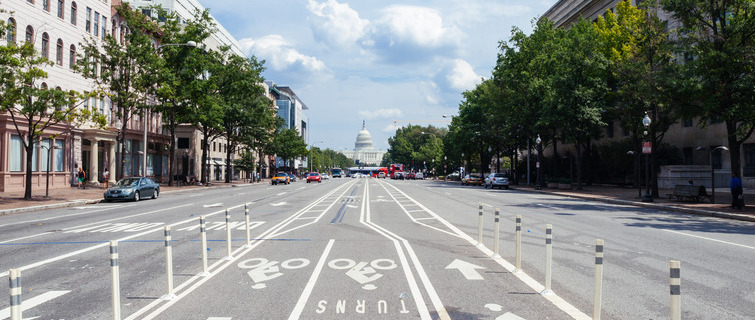
The study is small, but its results are encouraging. After analyzing transportation and economic data from nearly a mile of K Street, within the Mt. Vernon Triangle neighborhood in Washington, D.C., Josiah Blackwell-Lipkind, a 2024 master’s candidate in the Urban & Regional Planning program at Georgetown University, found that replacing on-street parking and some automobile travel lanes with bike lanes not only increased bicycle traffic but spurred economic activity in the neighborhood as well.
Yet this research exercise represents much more than a brief, if promising, analysis of eight city blocks. It is one of the university’s first uses of a new urban data platform called Replica . The proprietary platform utilizes artificial intelligence to piece together thousands of pieces of anonymized cell phone and vehicle GPS records to enable urban planners to tackle problems that were once nearly impossible to solve without conducting costly manual traffic studies or using oversimplified traffic models that do not account for real-world human behaviors.
“For a long time, travel surveys and resulting travel models were used for transportation behavior studies and planning decisions,” says Blackwell-Lipkind, who also works as an urban planner for the U.S. Department of Transportation. “What’s happening now is, instead of conducting these types of intermittent surveys every few years, there’s a push to use more live data based on real-world activity. Pings from GPS and phone data can tell us where people are actually going throughout the day.”
Replica, which was founded as part of Alphabet in 2017 and is now an independent company, combines privatized cell phone-generated location data together with information from the U.S. Census Bureau and other public travel surveys “to build out an entire population,” Blackwell-Lipkind says. “Replica creates a synthetic population of people using the GPS data from a sample of people.” This mobility data enables users to determine not just regional traffic patterns but the demographic characteristics of trip takers as well.
An Evolving Neighborhood
The Urban & Regional Planning program piloted Replica in the summer of 2023 in its Planning Studio course, which examined the community development issues in the broader area known as Downtown East. “Our students are interested in new sources of data which relate directly to real-world challenges,” says Uwe Brandes, Faculty Director of the program. “Our partnership with Replica enabled students to critically explore the utilization of one of the most cutting edge urban planning tools on the market, one which is being rapidly adopted by professionals in the field.”
In early 2024, the planning program entered into a demonstration agreement with Replica that allows the company to use the program “as a kind of testbed for the software,” Brandes says. The agreement enabled students in the course to use the software. The demonstration with the Urban Planning Program was so successful that Georgetown has now made the tool available to all students in the entire university.
“It’s a very fine-grained source of data that urban planners have typically not been able to access unless they manually collected the data themselves,” he says. “The practice of urban planning is changing very rapidly. AI-enabled data sets are not widely adopted and there is some level of skepticism associated with the algorithms producing this data. But what better than an academic setting for asking critical questions like, ‘Should we be using artificial intelligence in this way?’”
A ‘Fantastic Opportunity’
Izzy Youngs, a program alumna and visiting lecturer in the planning program and Blackwell-Lipkind’s advisor on the project, believes the answer will be a qualified “yes.”
“One of the reasons it’s so important to introduce this application into an academic setting is because we can really honestly engage with what kinds of questions are not suitable to be answered with this kind of data; and what kinds of assumptions and data quality issues there might be which bias the data or results,” says Youngs, who also works as a civic data analyst at Alta Planning + Design.
That said, introducing Replica to students “is a really fantastic opportunity” that puts Georgetown “at the front edge of what’s happening in the field,” Youngs says. “I don’t know of any other universities or schools that have partnerships like this. And I think the ability for students to access this kind of data is going to be so important not just for their education but for their professional development” because a lot of companies are looking to hire people who have worked with this technology.
Replica data can help answer questions that go far beyond the scope of traditional travel demand models. For example, traditional models do not take into account that people often take trips in a chain, Youngs says. Rather than going from Point A to Point B and back again, they may drive from the office to the grocery store, to the pharmacy, and to the school to pick up their children. Replica documents each of these individual trips.
Mobility data can also be useful in other fields, such as public health. Health agencies could use Replica to see how travel patterns changed for different demographic groups during the pandemic and then use this data to target outreach campaigns. That’s because the data can show how different users tend to move during the day.
A Surge in Bicycle and Economic Activity
Blackwell-Lipkind’s study examined K Street between Seventh Street NW and First Street NE. This is the site of a 2021 District Department of Transportation project that replaced on-street parking and vehicle travel lanes with protected bike lanes. K Street now has the only east-west protected bike lane in the area. Between the years 2019 and 2021, Blackwell-Lipkind found that bike trips increased 350 percent relative to nearby corridors, accidents per trip for all travel modes declined, and vehicular traffic was only marginally affected. But perhaps the biggest surprise was business sales, which outpaced the District of Columbia average by 200 percent.
Did the addition of bike lanes help cause this surge? That’s what the data suggest, Blackwell-Lipkind says, but he adds that more research will need to be done. And with the addition of Replica, that can be accomplished much more easily than in the past.
Helping people get safely from one place to another, making those trips less hectic and more enjoyable—these are some of the reasons why Blackwell-Lipkind went into urban planning in the first place. And he welcomes any tool that will help him do his work better.
“One of the most visible forms of government influence is on the street,” Blackwell-Lipkind says. “It’s the most ubiquitous public space, and everyone has an opinion about it. You can ask any person, ‘How do you feel about this street? What is your experience traveling on it?’ and they will have something to say. Every investment that the government makes in the street is immediately apparent to everyone. And I think that’s kind of beautiful.”

Master's in Urban & Regional Planning
Develop the skills needed for success in the urban planning industry through a combination of academic theory and applied studio work.
Choose Your Term
We are transitioning to a new system for applications to the Spring 2019 term and later. Please select the term of your application:
- Fall 2018 or earlier
- Spring 2019 or later

IMAGES
VIDEO
COMMENTS
Urban Planning. Urban Planning is a technical and political process concerned with development of open land or greenfield sites as well as revitalization of existing parts of the city. Primary concern of urban planning is public welfare. Impact of government policies and initiatives (most recent) on urban land use.
Urban Development," eleven research papers on key topics from among the centers' faculty and associated researchers/fellows. Thus, in this work, Penn's centers show how their own expertise on issues such as foreign policy, energy, and urban studies, grounded in cross-disciplinary research, can contribute to implementation of
Topics. What we're working on now. Community engagement Charitable giving Child Tax Credit Higher education Racial inequities in health Social safety net. Research areas. Taxonomy Terms. Aging and retirement. Child welfare. Children and youth. Climate change, disasters, and community resilience.
New research on urban development from Harvard Business School faculty on issues including the risks and opportunities of China's urbanization reforms, new urban data sources, and how city planning and environmental business experts in some locations are preparing for a population boom.
Urban studies have been a fast growing interdisciplinary field that involves research in urban planning, economic development, geography, the living environment, urban policy, and resources [1,2,3].Considering the increasing amount of urban studies research and the number of researchers that have come together to explore these topics, we need to help researchers to understand and identify ...
This Research Topic aims to explore innovative approaches and solutions in sustainable urban development, focusing on the following themes: Smart city initiatives: Exploring the role of technology in enhancing urban sustainability, including IoT applications, smart infrastructure, and digital governance. Renewable energy integration ...
selecting a topic to submitting the final thesis. For UPD students interested in completing a thesis, the process begins in the first year of their degree. In the spring semester of the first year, students identify a potential advisor and research topic. In their third semester, students then complete a detailed thesis proposal. In
The notion of 'urban transformation' has been gaining ground in science and policy debates. Urban transformations to sustainability and resilience are enshrined in the 2030 United Nations Sustainable Development Goals (SDGs) (UN 2016) and the New Urban Agenda (UN-Habitat 2016a).A rich research field around questions of urban transformations has started to emerge, combining multiple ...
First, this community needs to coalesce around a new narrative of what urban sustainable development really is, building on recent literature that foregrounds complexity and systems thinking ...
There are several goals of this special issue. First, it will attempt to highlight and discuss the various short and long-term consequences of population growth and urbanization. Second, it will also attempt to discuss the various smart tools and techniques that are used for sustainable urban growth and development in various parts of the world.
The global thematic focus of urban studies had some significant changes. Before 2010, the field was primarily motivated by the urbanization and urban-sprawling process and related topics like urban planning, and housing issues (see Fig. 2).However, in around 2010, topics related to urban reorganization and management started to become more popular, including gentrification, and urban education.
Urbanization has rapidly transformed the global landscape, and its impact on ecology and biodiversity has a critical concern for sustainable development. Integrating urban planning and ecology can help to address these impacts by promoting sustainable urban development and protecting the ecosystem. In this research, a systematic literature review is conducted to explore the integration of ...
Urban Transformation. This theme is concerned with the future of cities and regions of the 20th century. Industrial land, infrastructure, warehouses, housing, ports and waterfronts, rail-lines and depots, mines and oil fields, are among an inventory of abandonment, all seeking temporary and permanent re-use.
This could include research on improving urban planning and management to incorporate climate change considerations, building more resilient infrastructure, developing early warning systems, and promoting inclusive urban development. The Research Topic also calls for researchers and practitioners to work together to develop effective urban ...
Urban Development At-A-Glance. Globally, 56% of the population lives in urban areas today. By 2045, the number of people living in cities will increase by 1.5 times to 6 billion, adding 2 billion more urban residents. With more than 80% of global GDP generated in cities, urbanization can contribute to sustainable growth if managed well by ...
Articles & Research Databases Literature on your research topic and direct access to articles online, when available at UW.; E-Journals Alphabetical list of electronic journal titles held at UW.; Encyclopedias & Dictionaries Resources for looking up quick facts and background information.; E-Newspapers, Media, Maps & More Recommendations for finding news, audio/video, images, government ...
Infill development is patchy across Australian cities, as is its quality. Bigger and better projects are needed to hit planning targets and reduce urban sprawl.
Building socially cohesive, economically vibrant communities and driving sustainable urban growth are concerns for developing and developed nations alike. Data gathered and interpreted by NORC researchers help governments and NGOs around the world enhance their community development policies and initiatives. Working with a variety of partners ...
Keywords: Urban resilience, Inclusive development, Socio-ecological systems, Urban sustainability . Important Note: All contributions to this Research Topic must be within the scope of the section and journal to which they are submitted, as defined in their mission statements.Frontiers reserves the right to guide an out-of-scope manuscript to a more suitable section or journal at any stage of ...
Investing in Urban Resilience. October 12, 2016 — By 2030, without efforts to boost urban resilience, climate change may push up to 77 million more urban residents into poverty. This report discusses the challenges and opportunities of unlocking investment in resilient infrastructure for improved urban livelihoods worldwide. Read More ».
Looking for a good essay, research or speech topic on Urban Planning? Check our list of 94 interesting Urban Planning title ideas to write about! Clear. Writing Help Login ... Urban planning is defined as the process of controlling the utilization of design and land of an urban development, with the aim of ensuring that communities and ...
Urban Public Health is therefore confronted with the large topic of digitalization as science as a whole. As a phenomenon of societal scale, digitalization is one of the megatrends of the 21st century and potentially generates a great need for research in almost all settings, urban spaces and areas of life. 3.1.5.
Roles of Construction and Facilities in the built environment with regards to the UN's Sustainable Development Goals and its contribution to the 3Ps (Planet, Prosperity and Partnership) Ka Leung Lok. Mohamad Rizal Baharum. Andrew James Smith. Charles Chen. John F.Y. Yeung. 658 views. Submission open.
The Urban & Regional Planning program piloted Replica in the summer of 2023 in its Planning Studio course, which examined the community development issues in the broader area known as Downtown East. "Our students are interested in new sources of data which relate directly to real-world challenges," says Uwe Brandes, Faculty Director of the ...
The aim of this study is to comprehensively evaluate the economic network patterns and their influencing factors of the Guangdong-Hong Kong-Macao Greater Bay Area (GHMGBA) in China, considering population scale, economic development level, and land-resource endowment. By employing a modified gravity model and a social-network method, we quantitatively analyzed urban agglomeration integrity ...